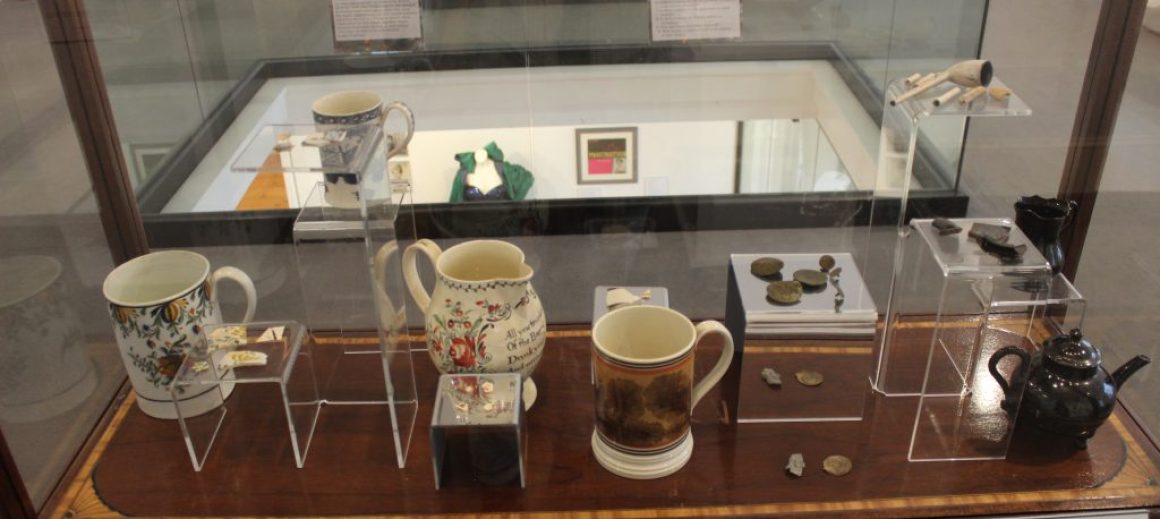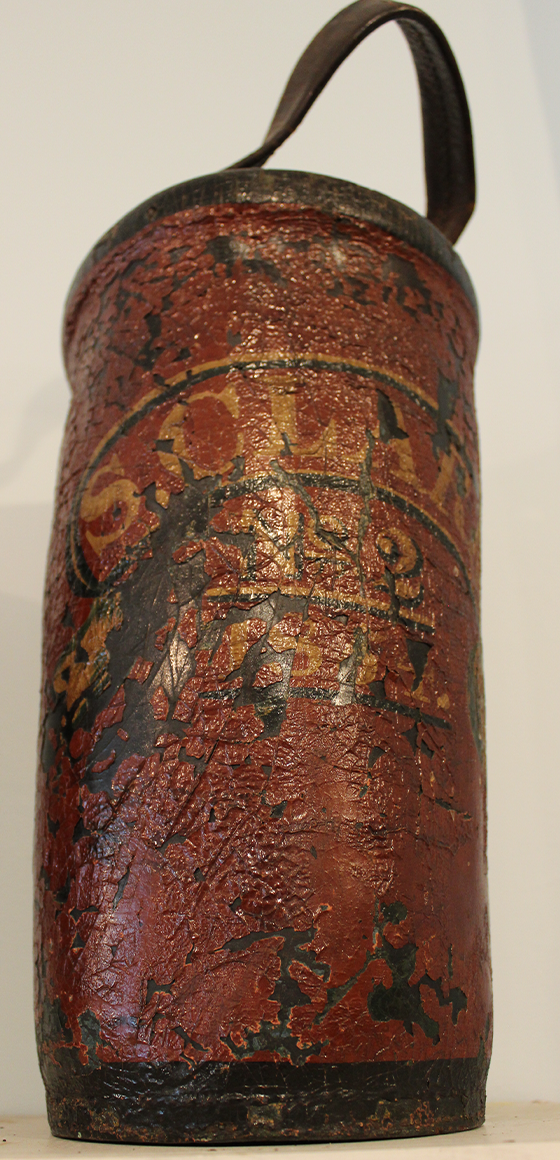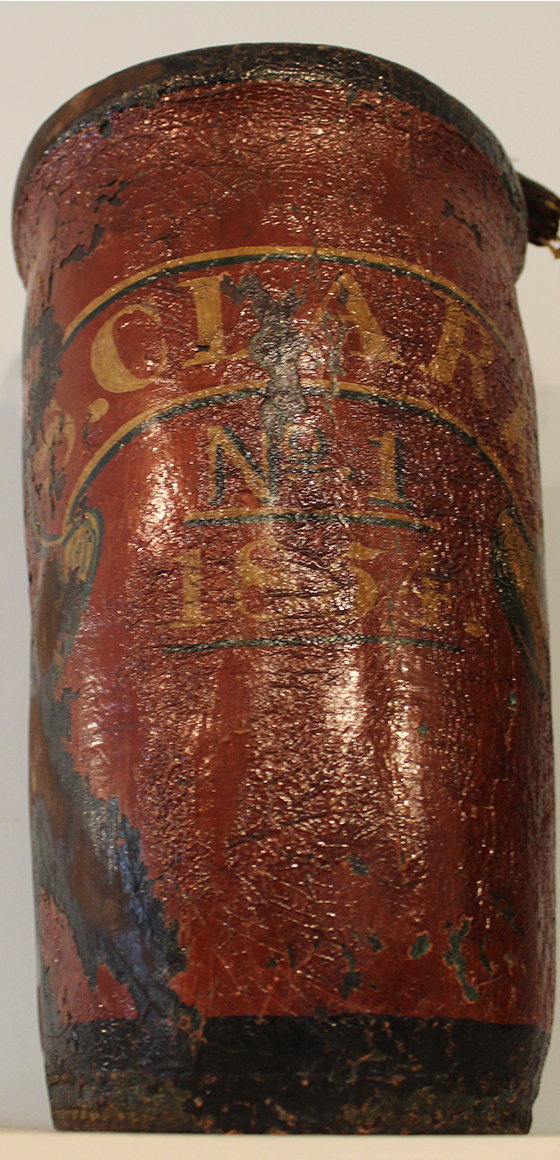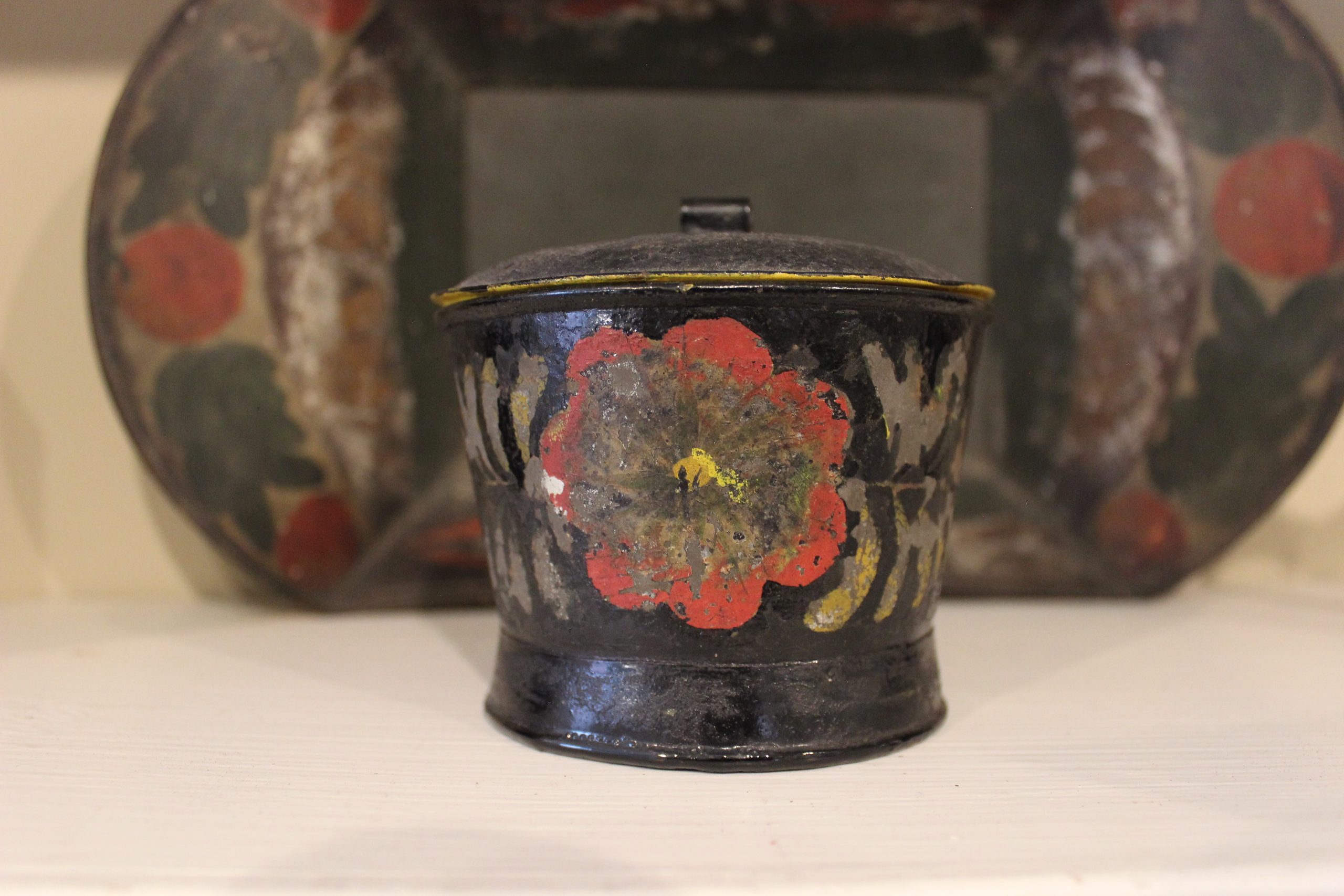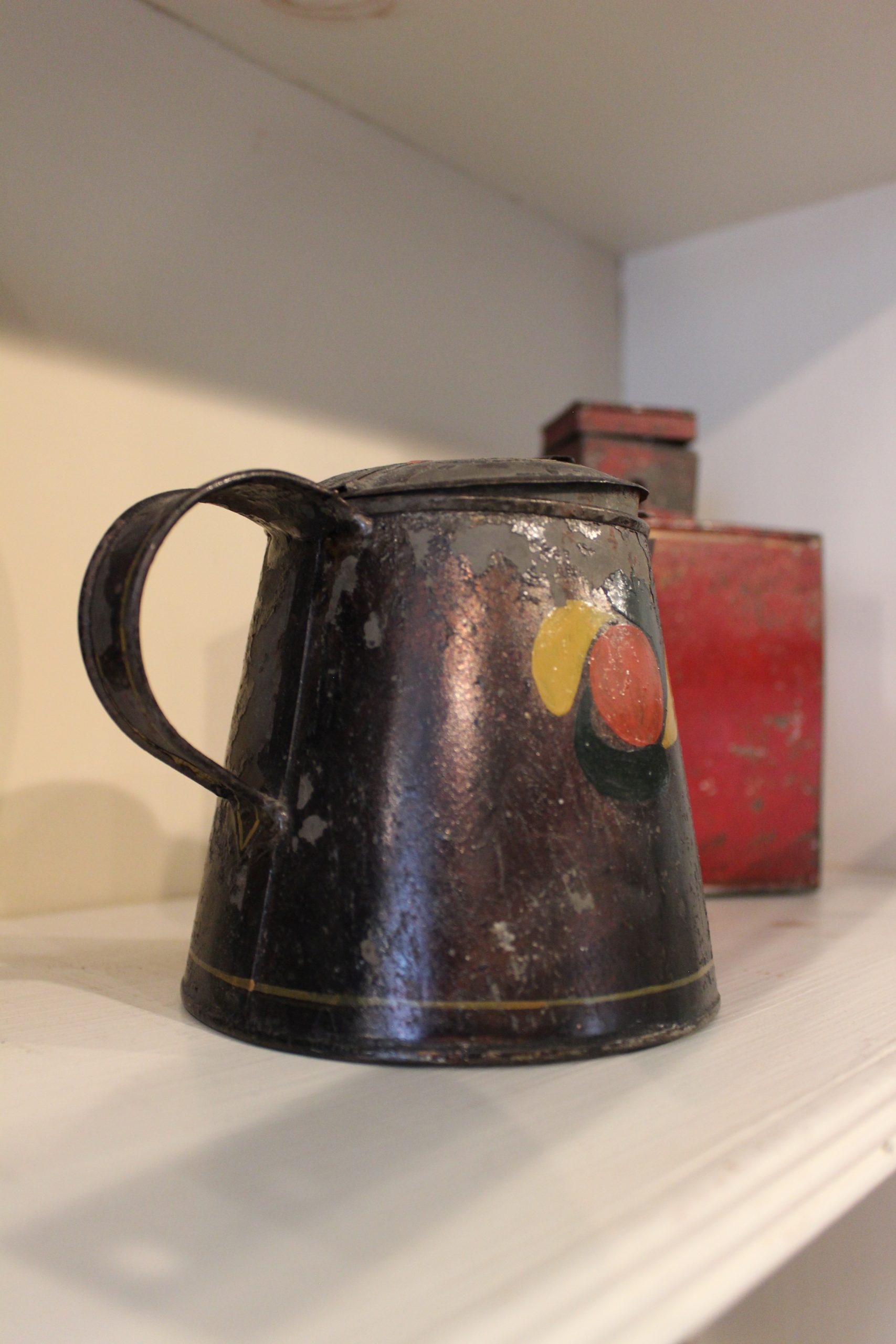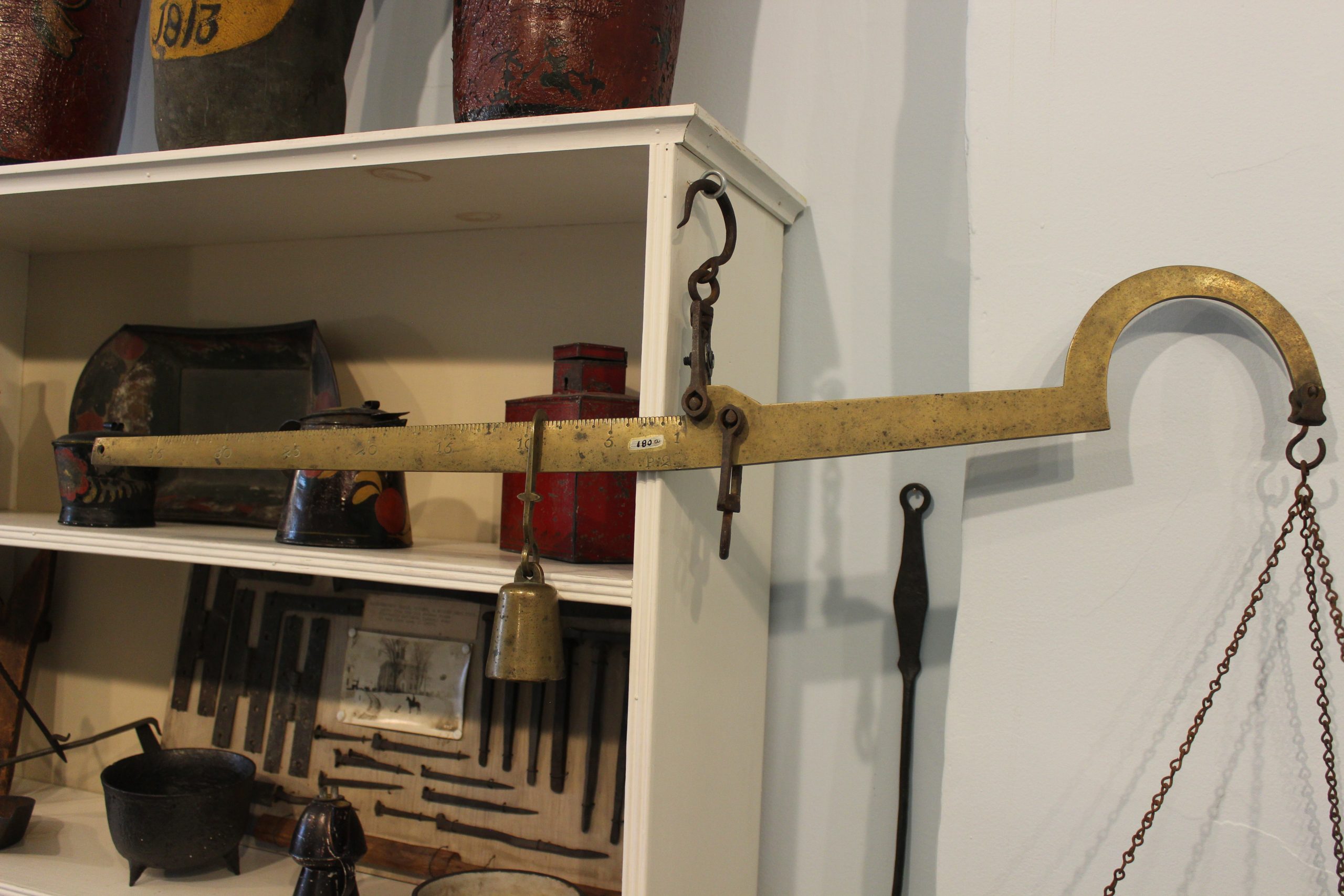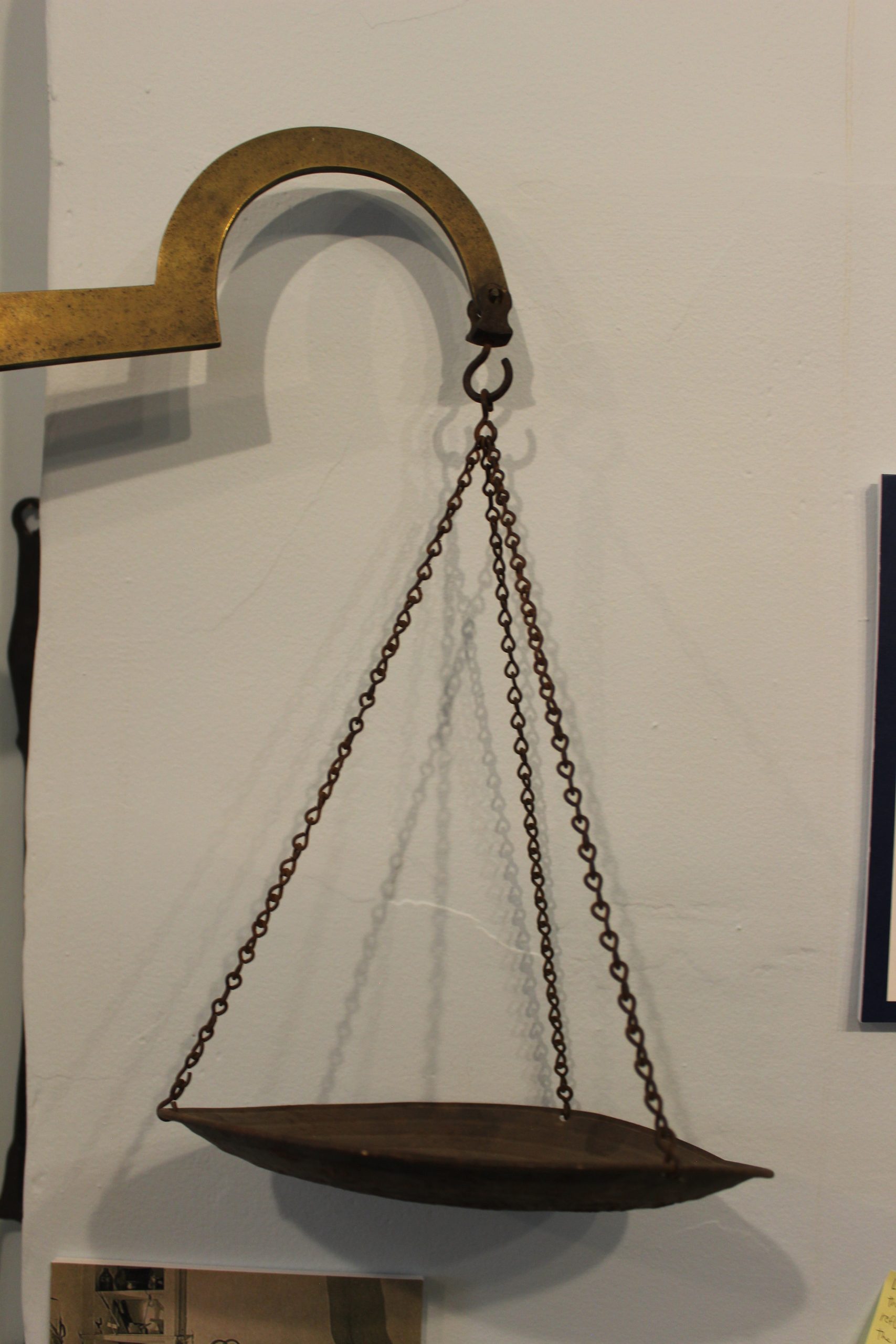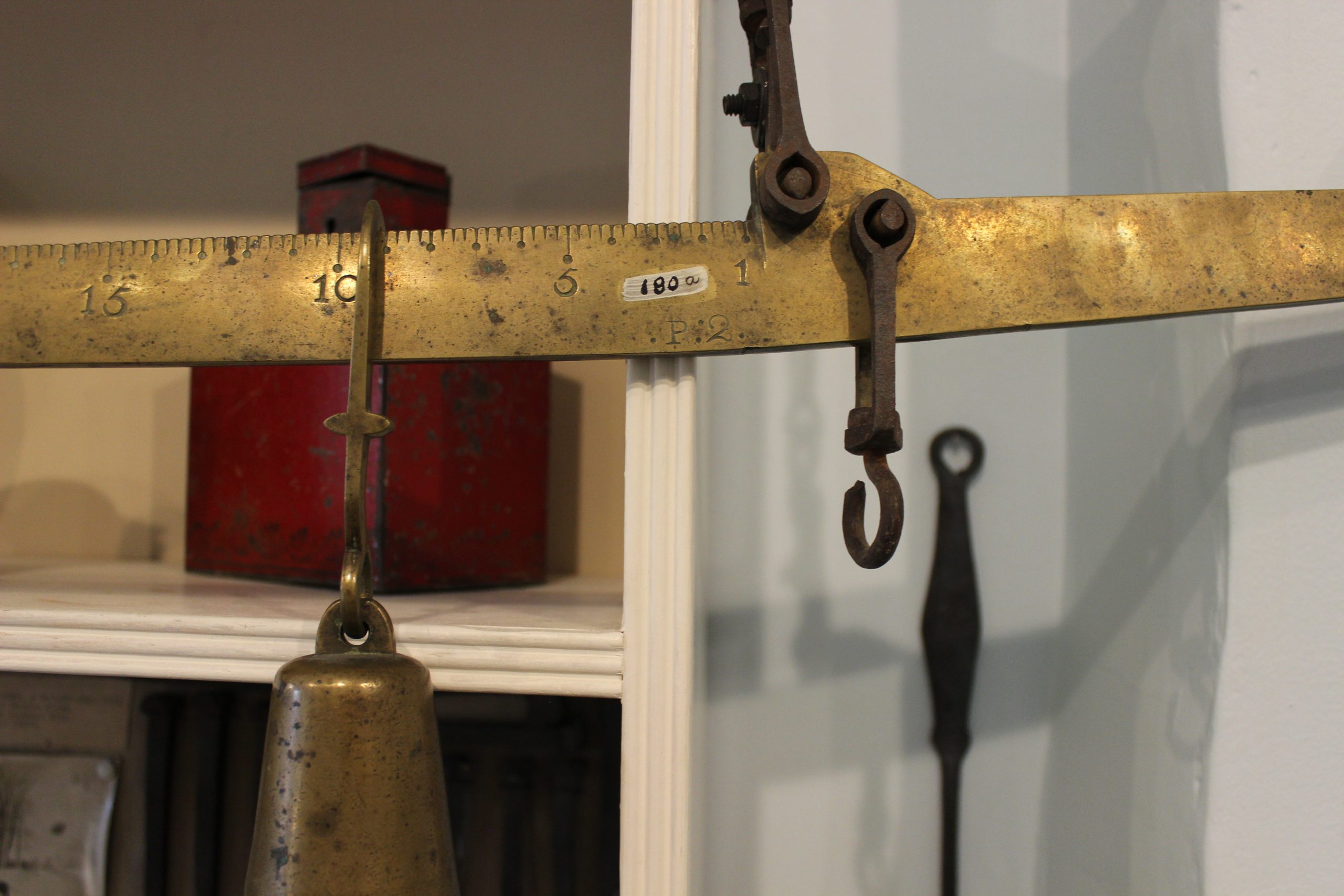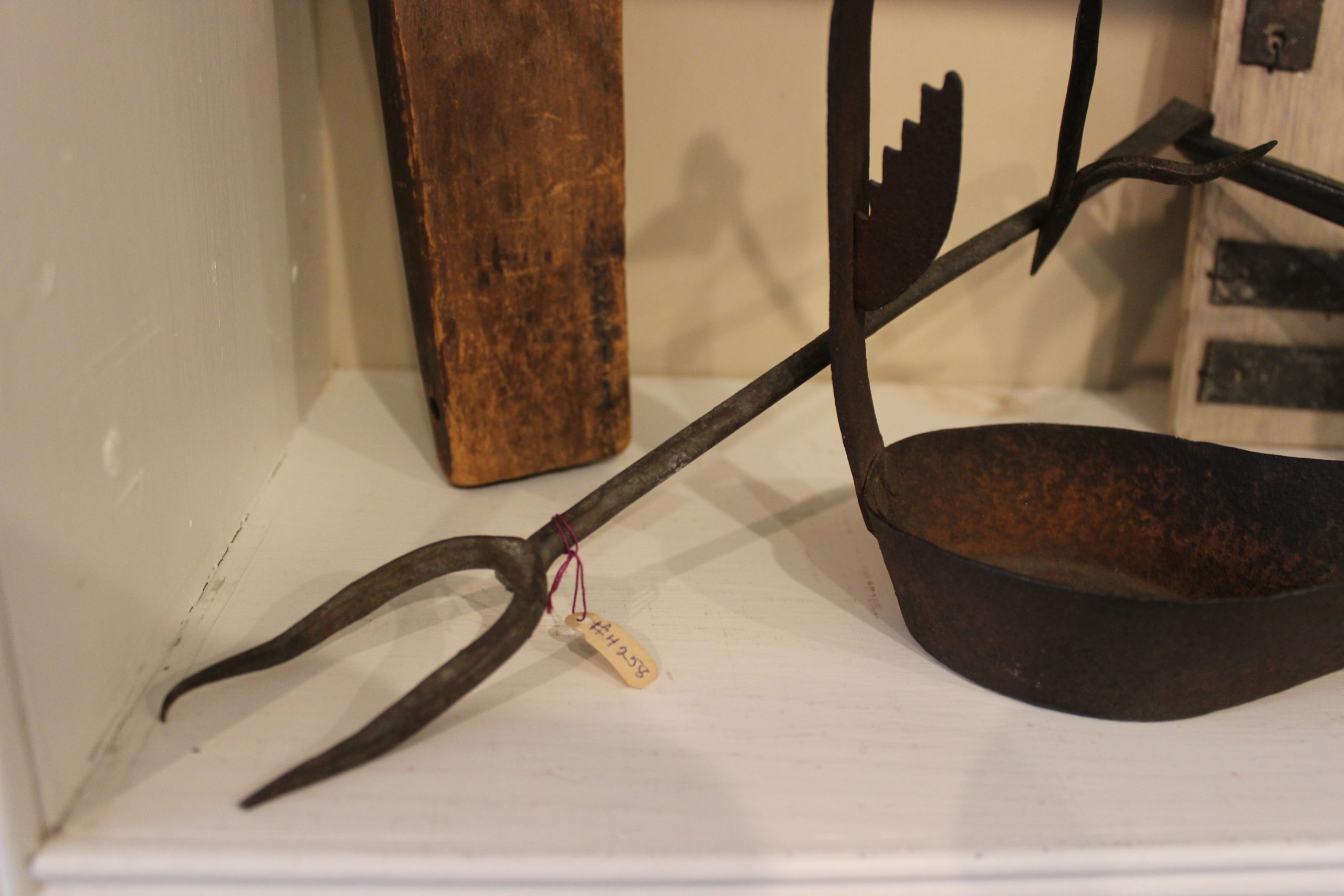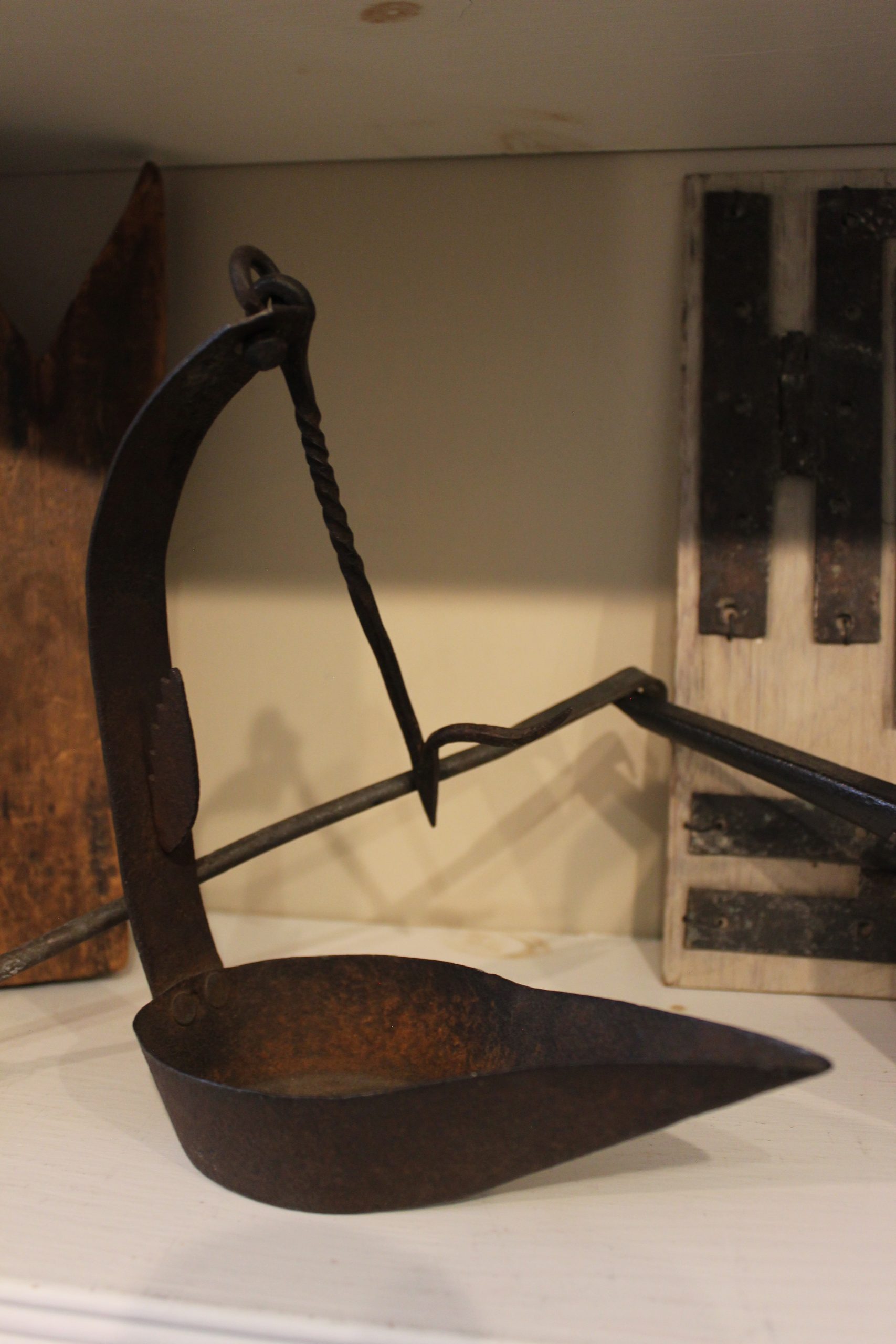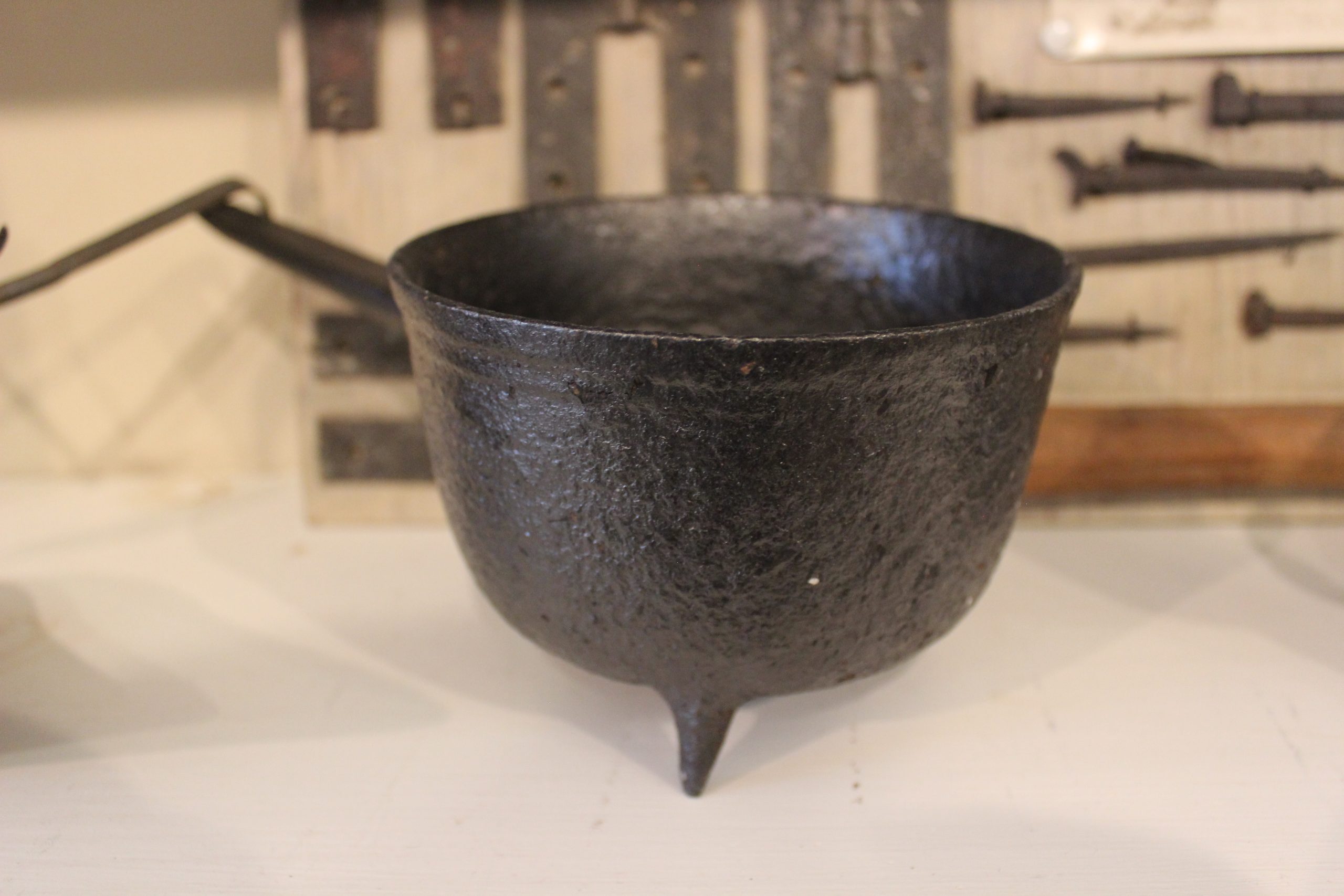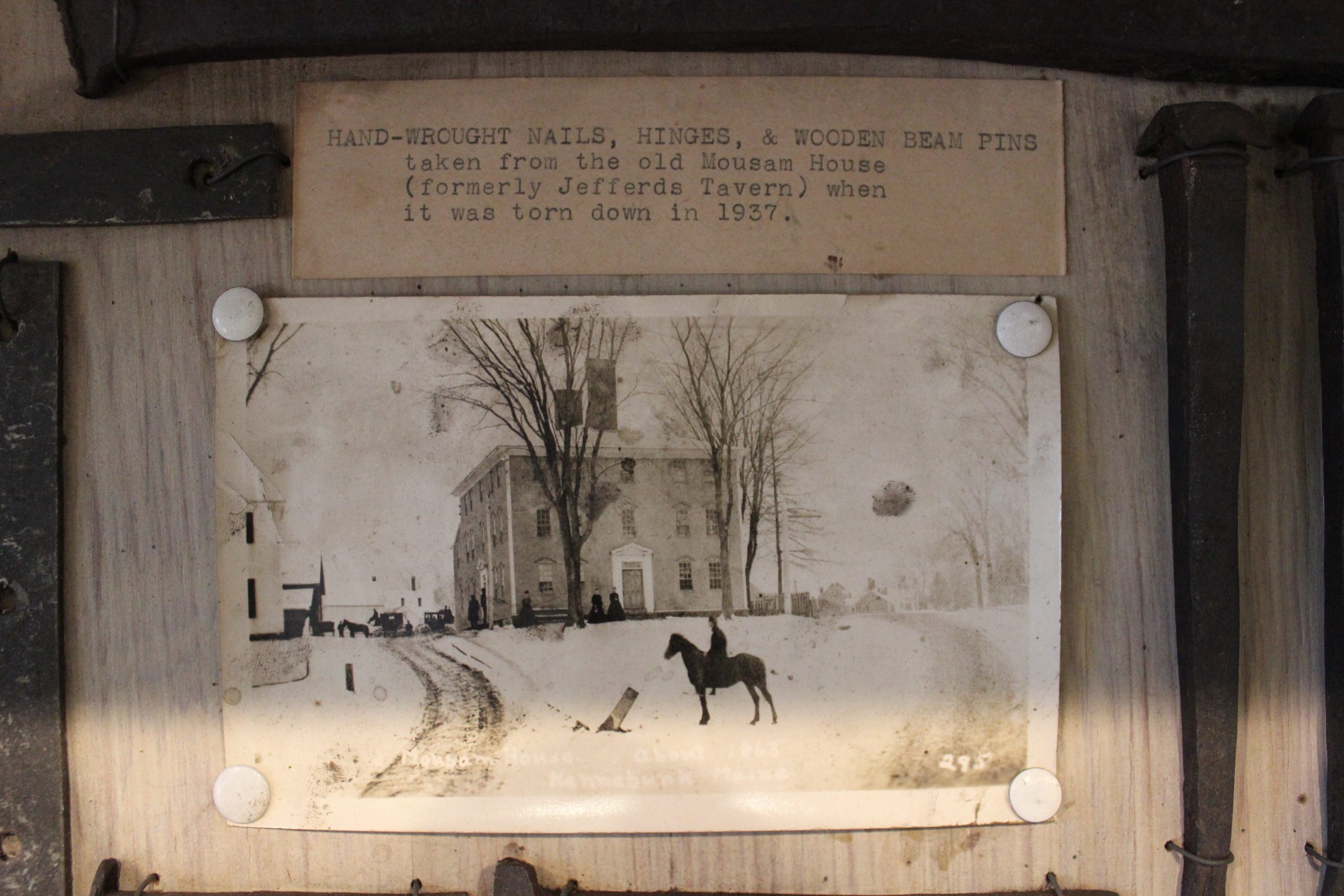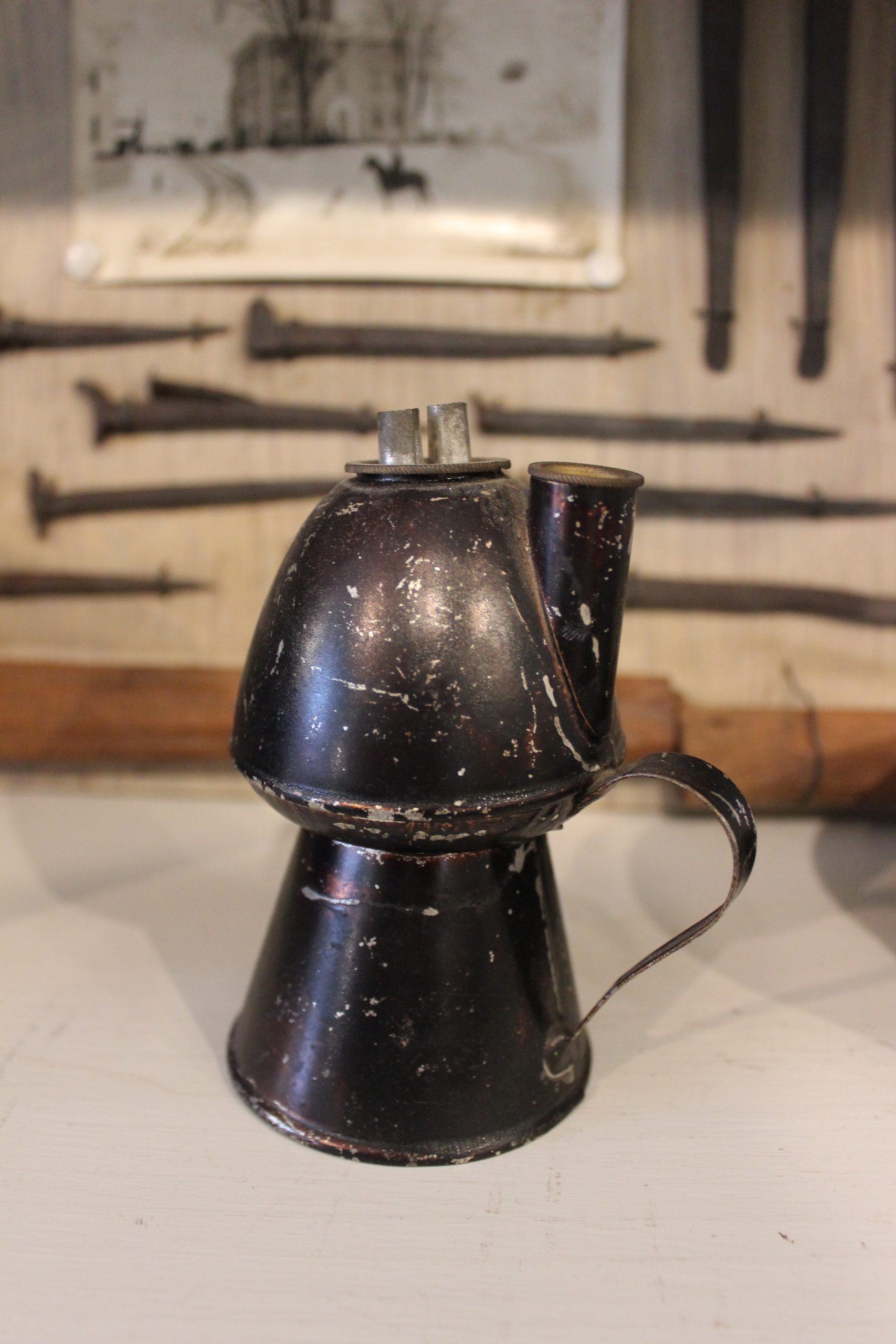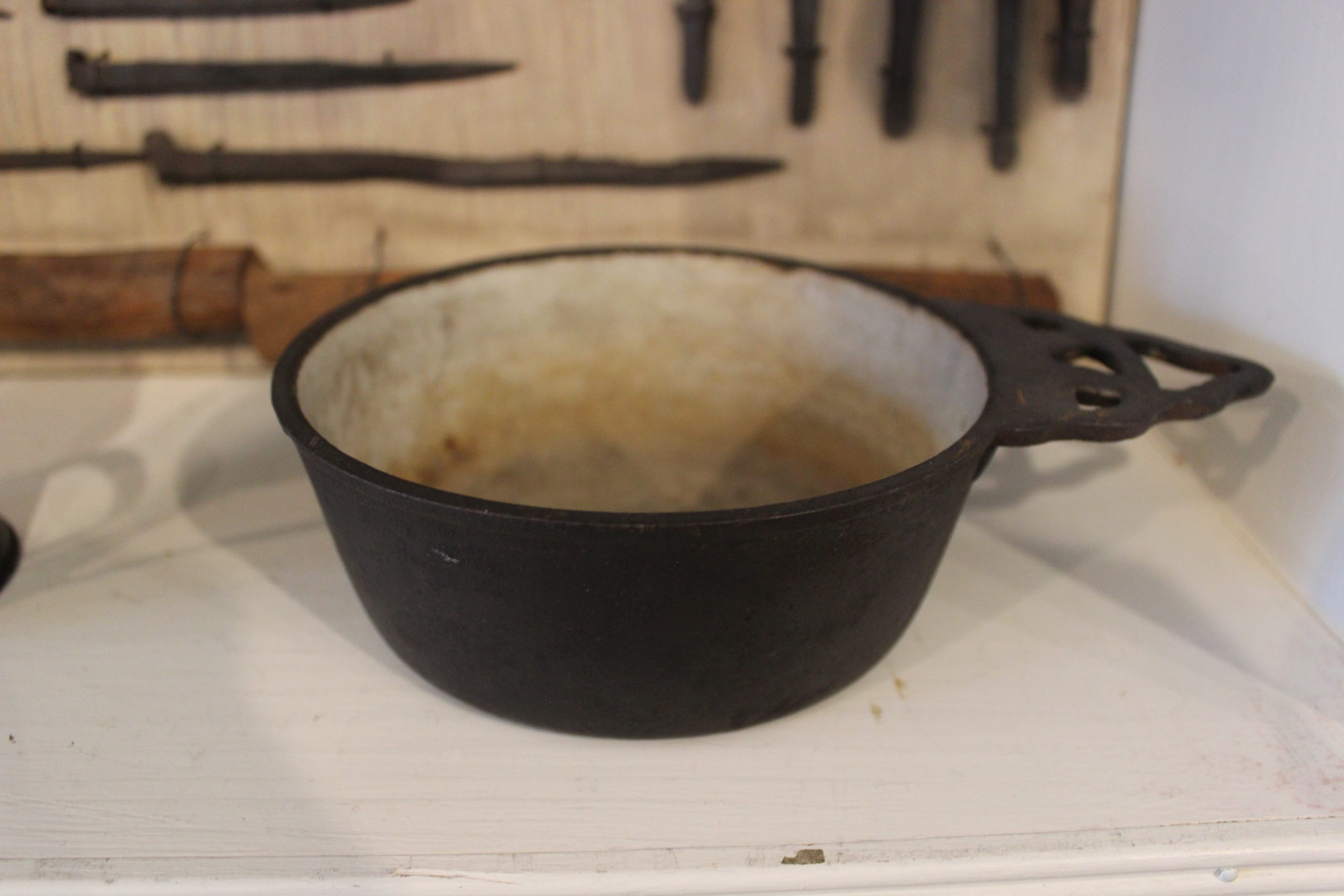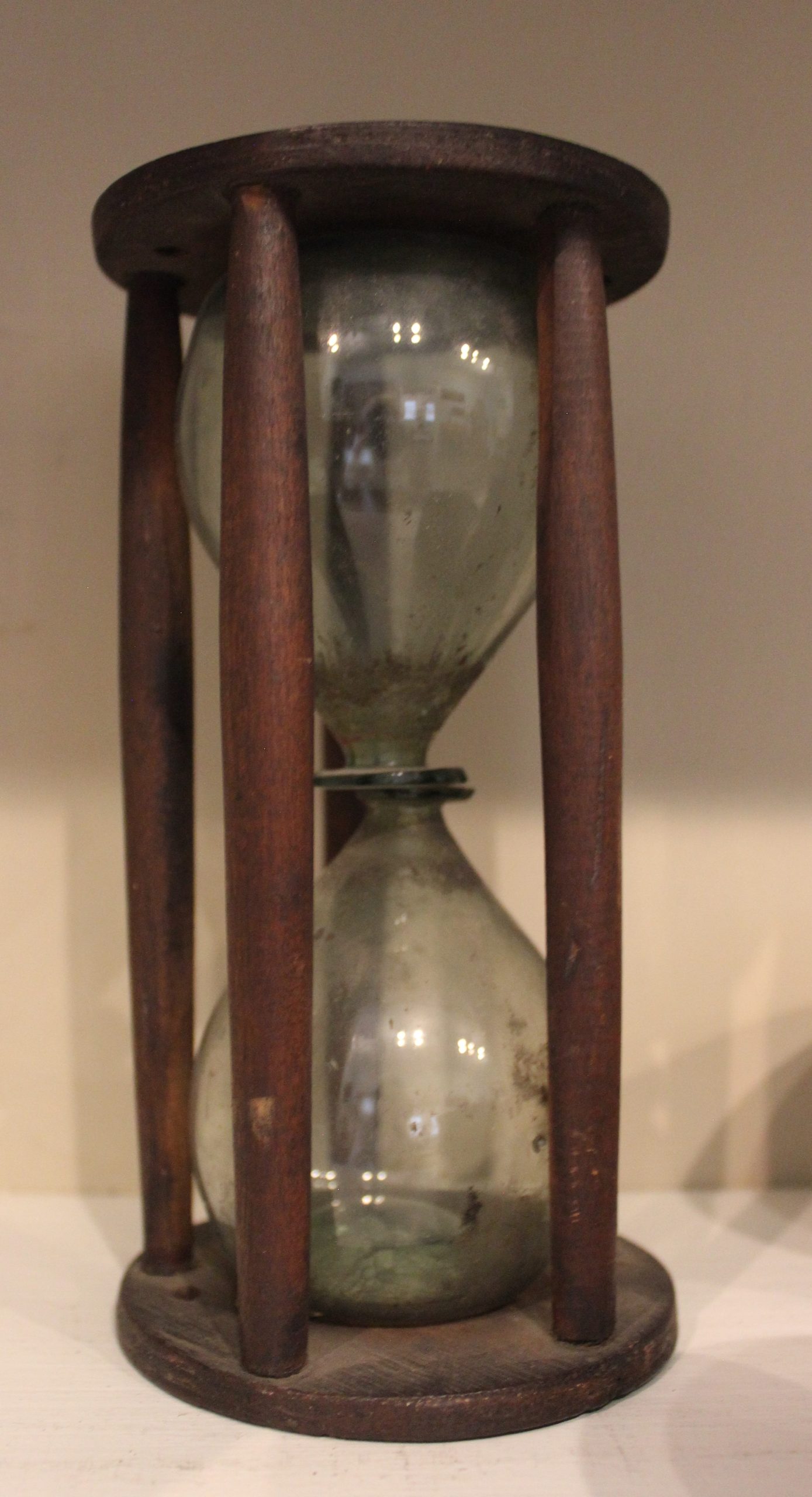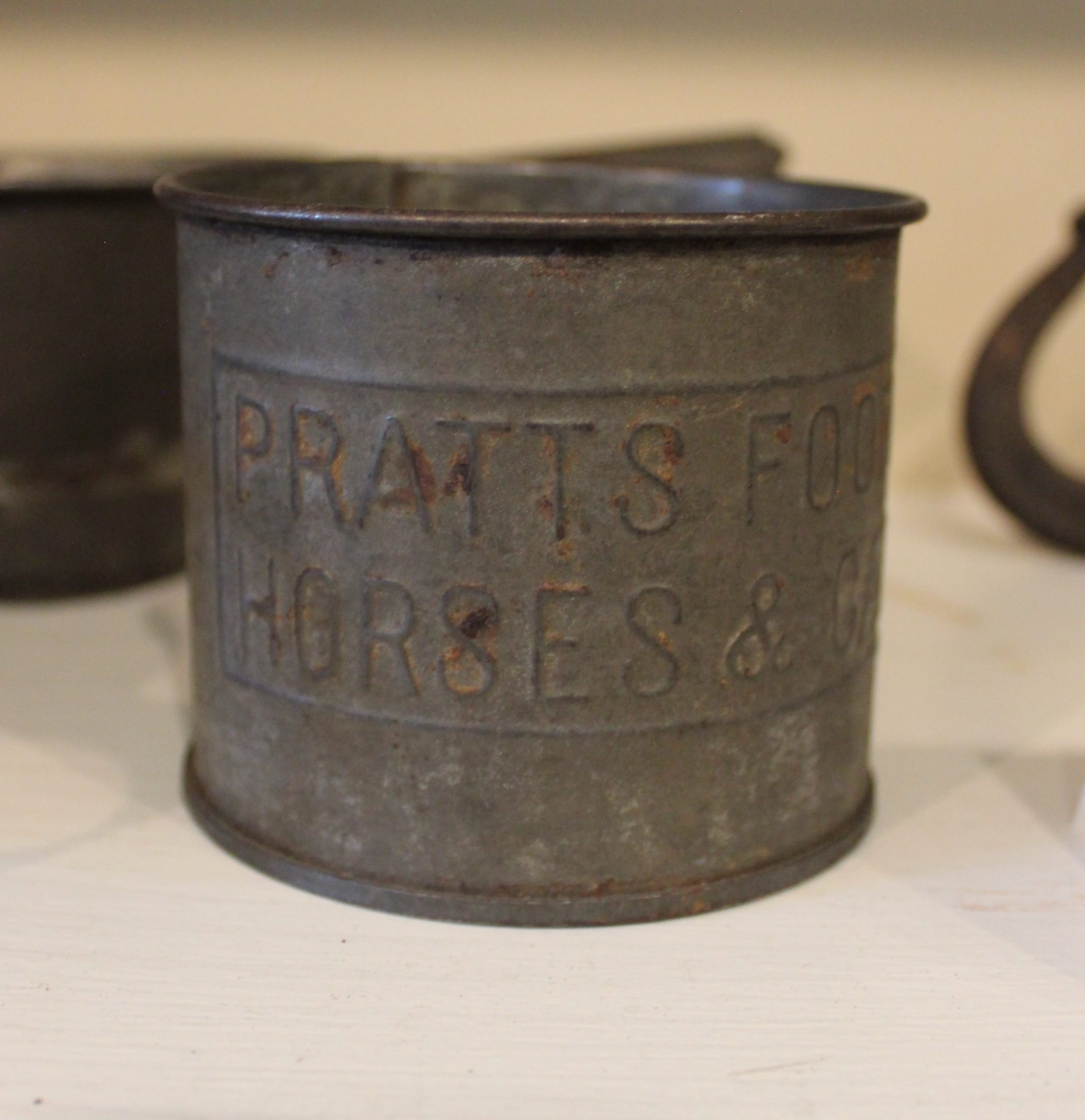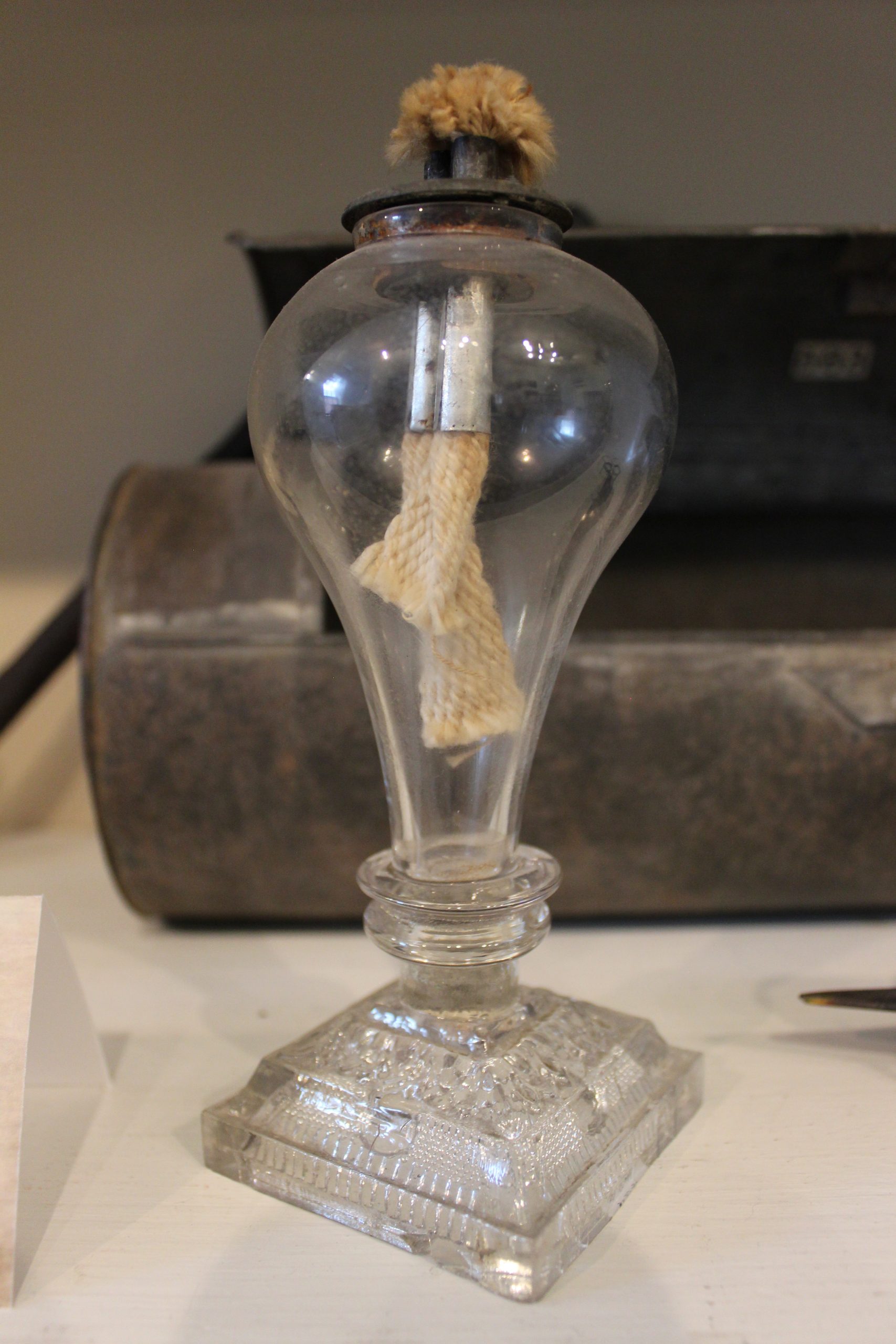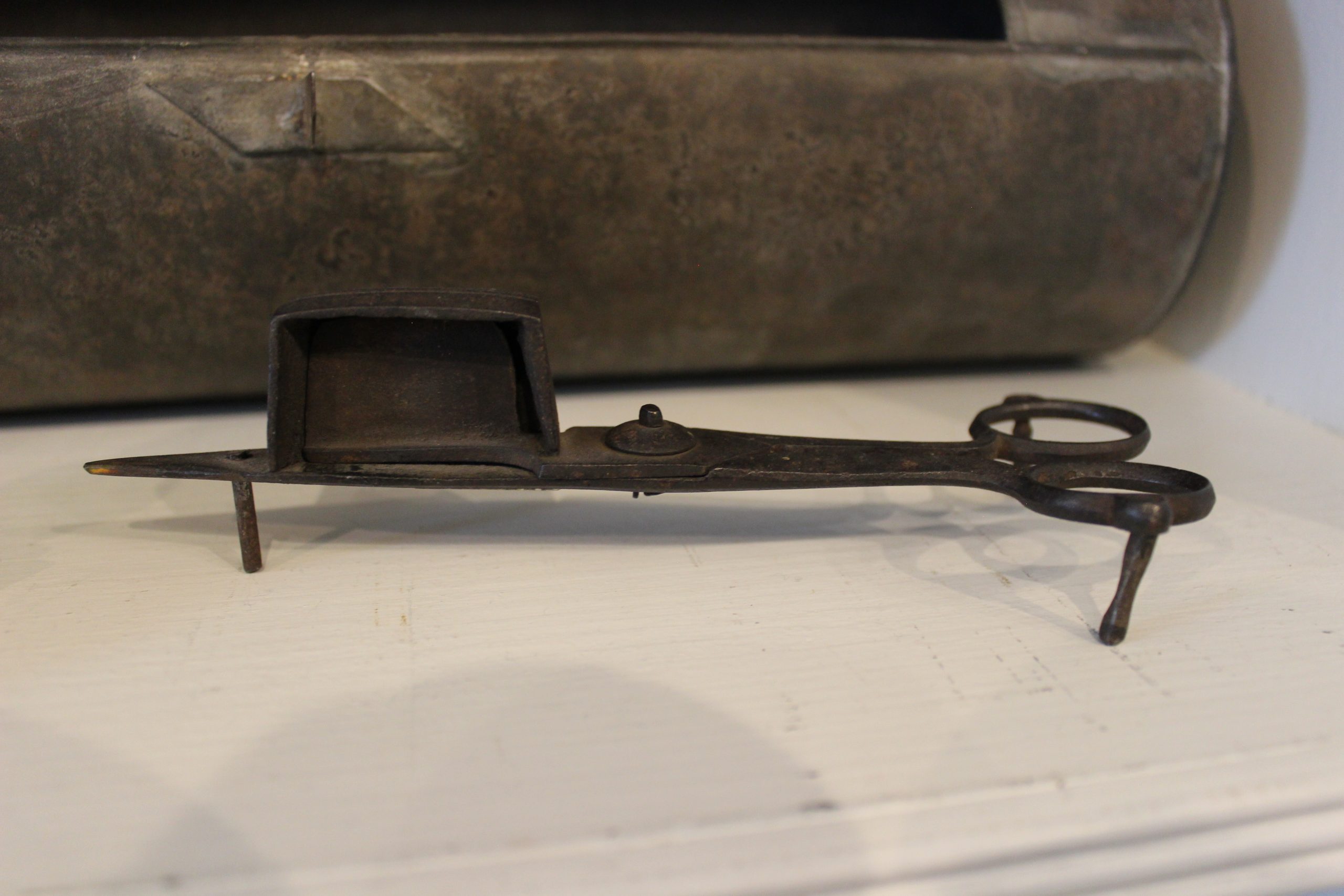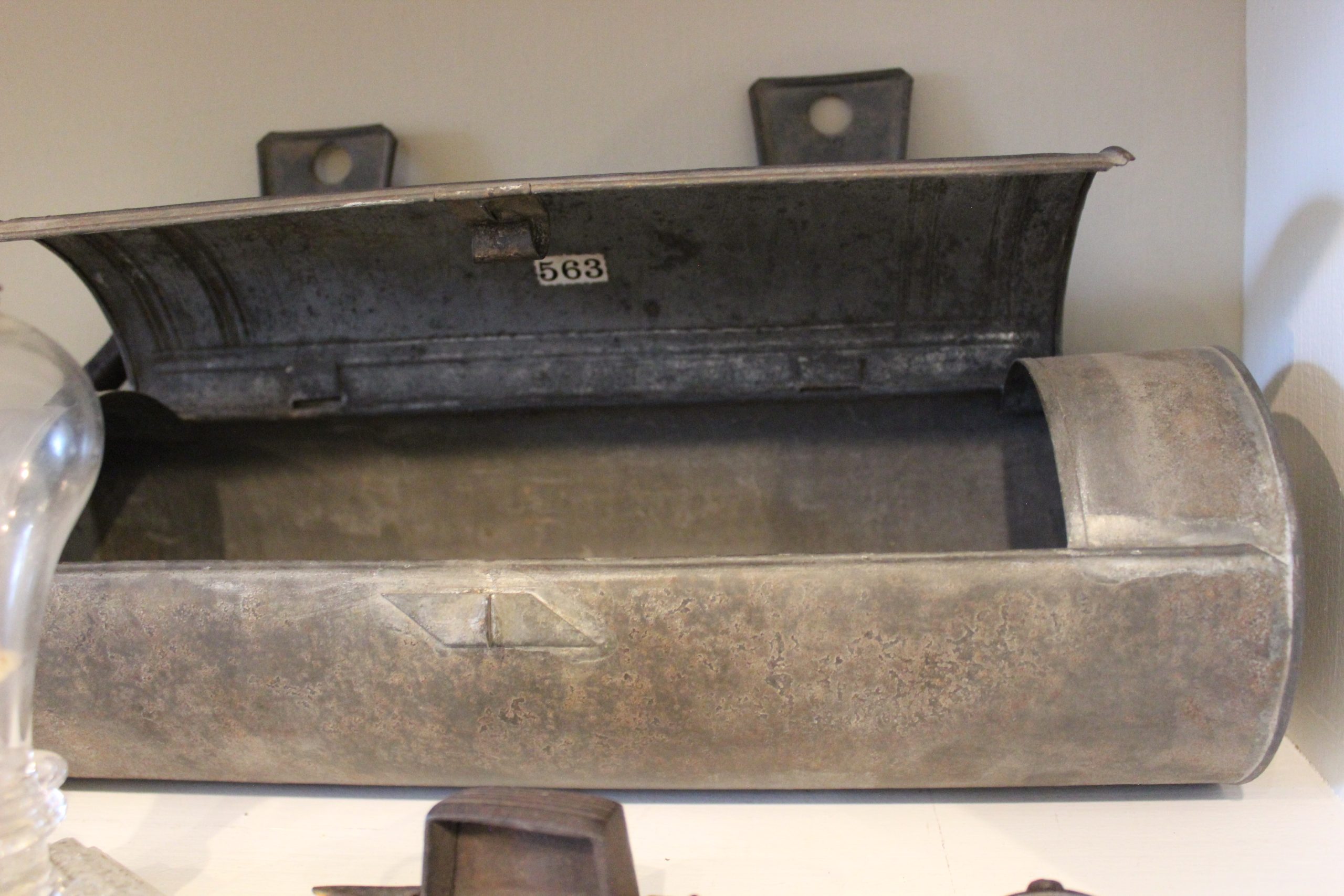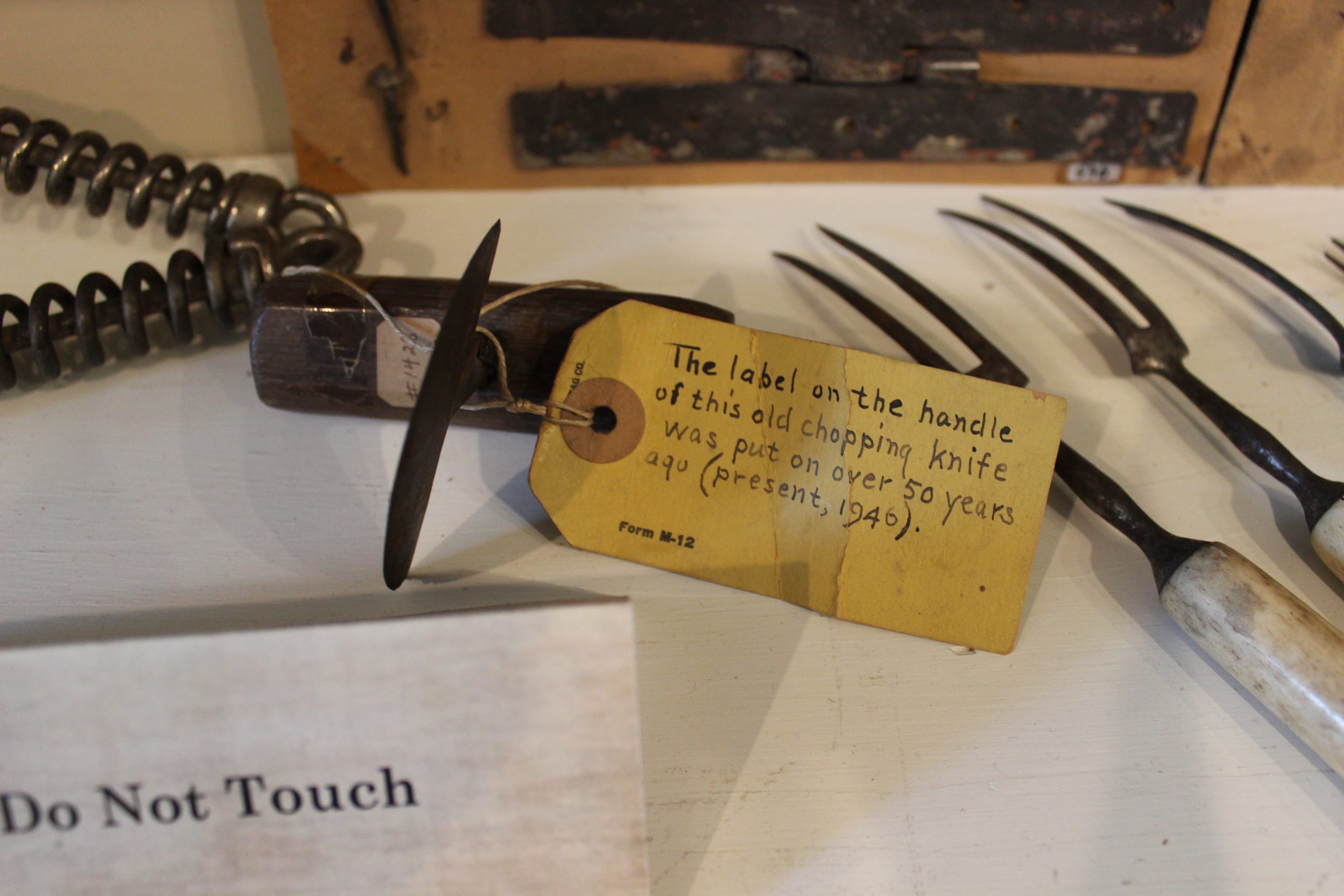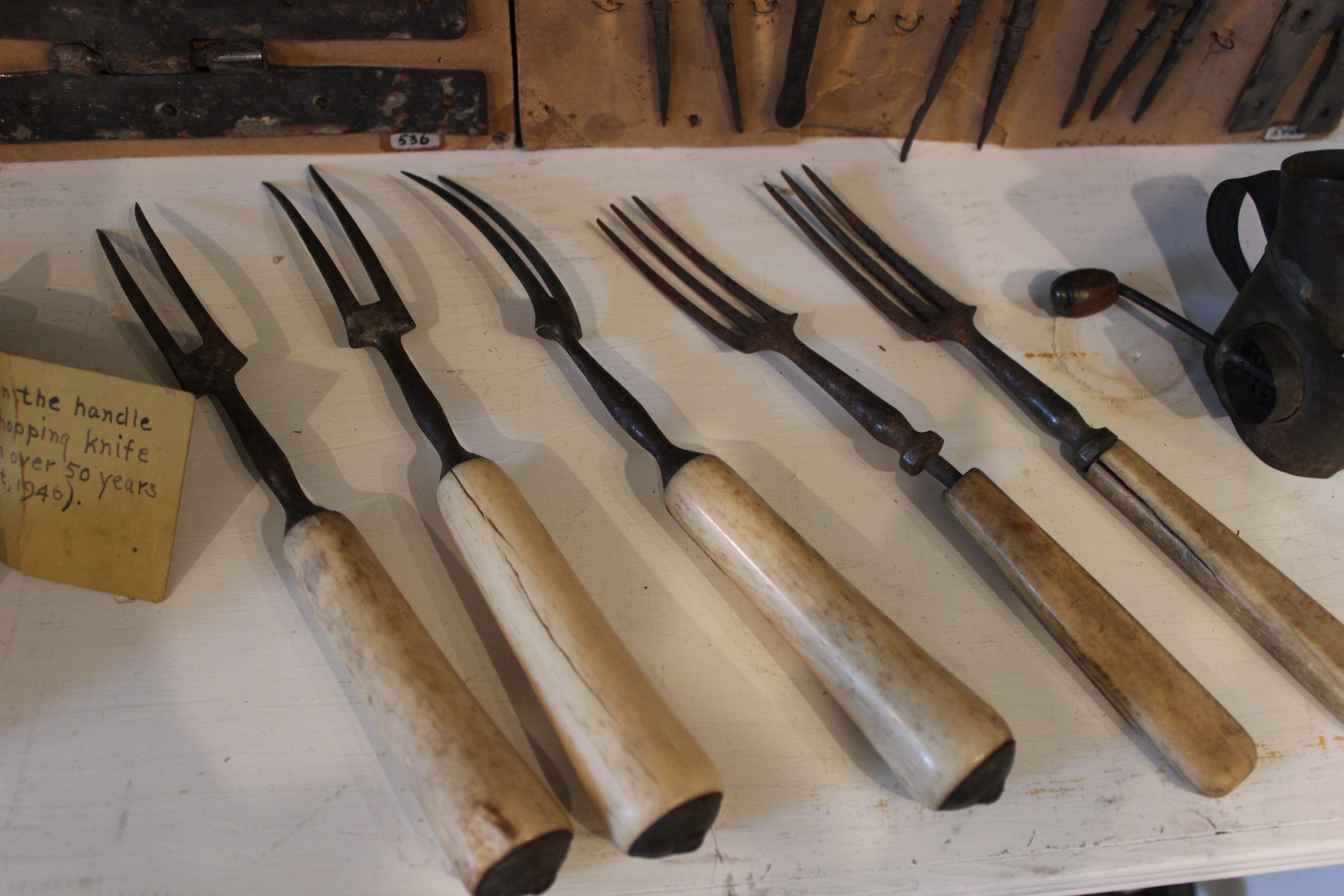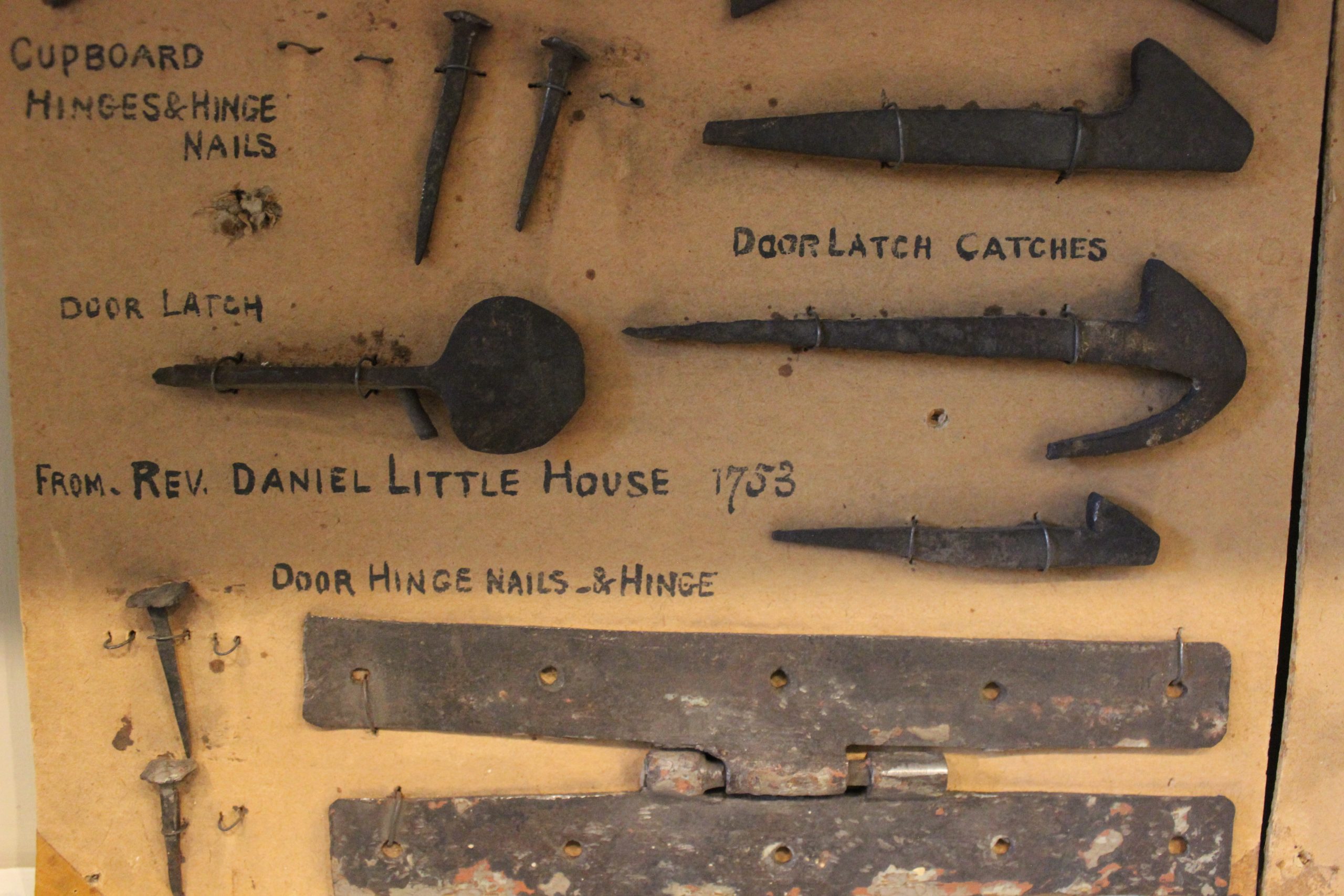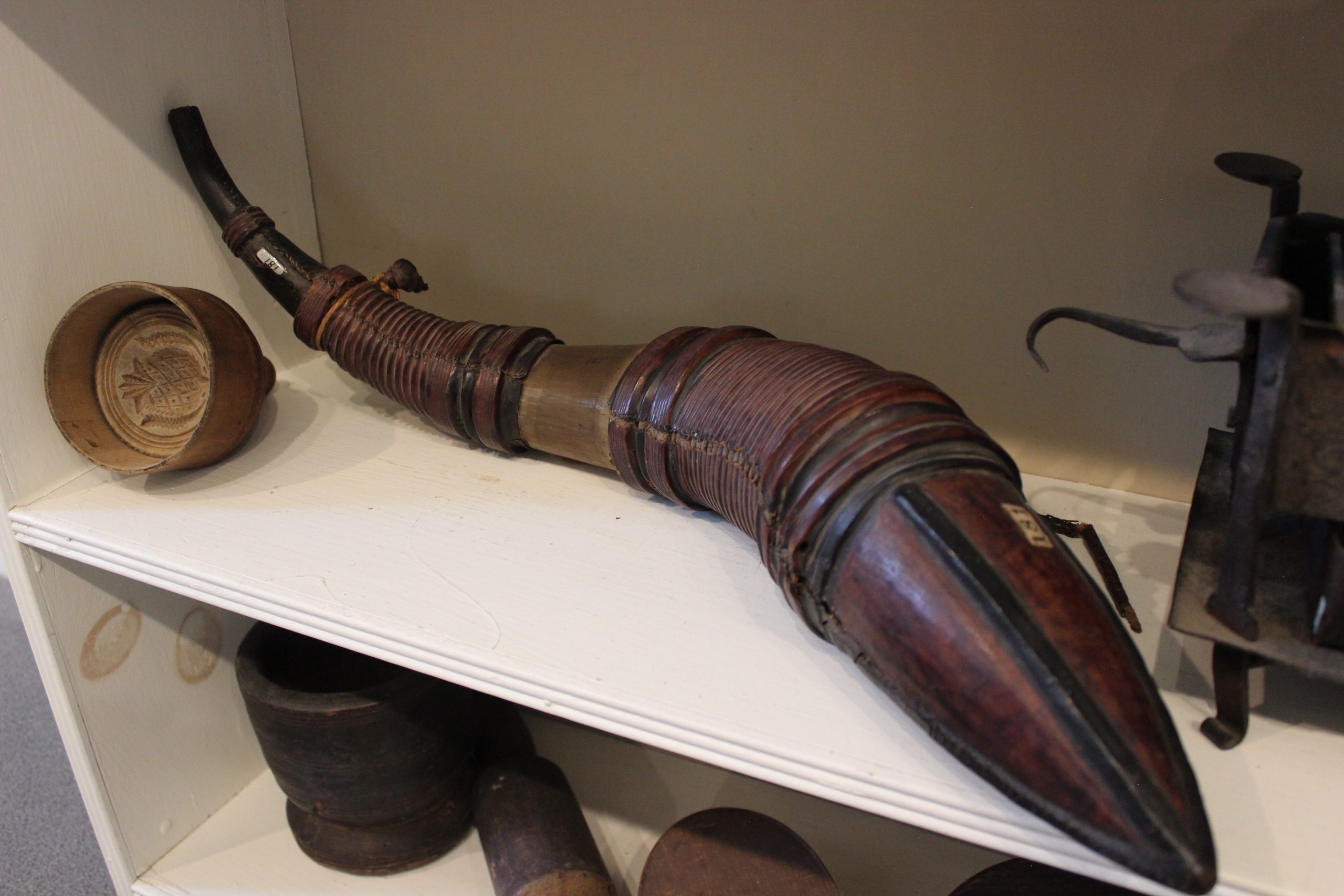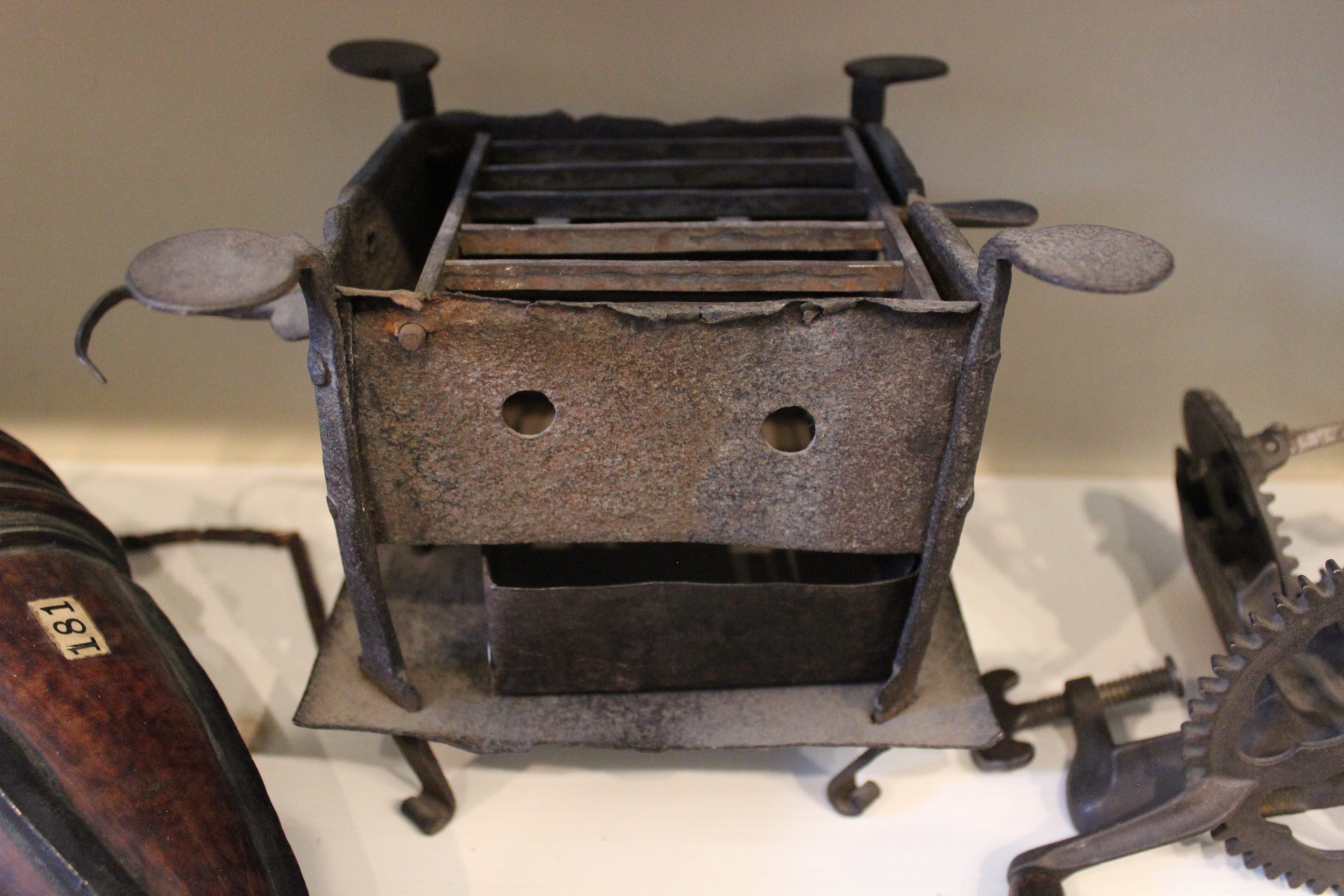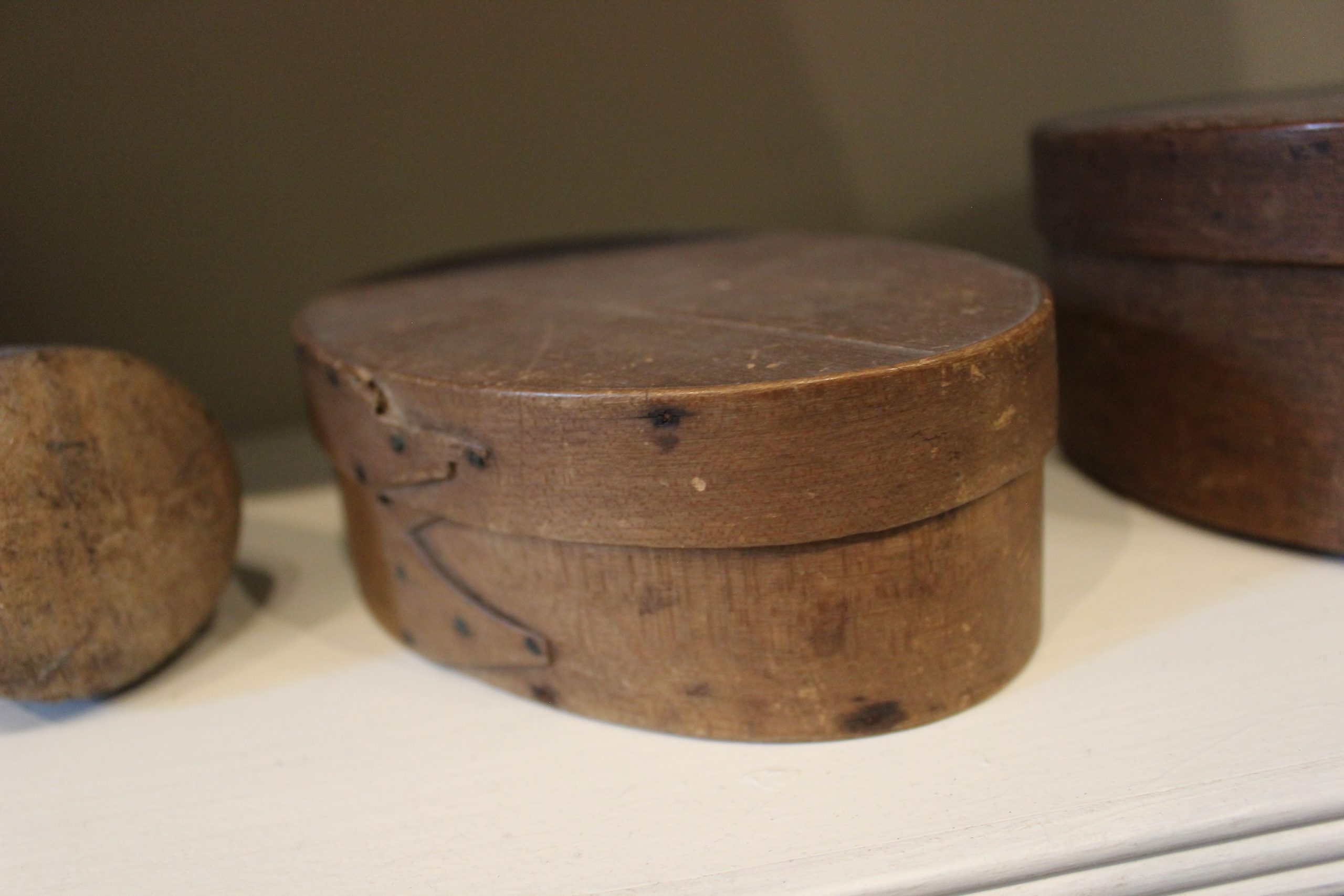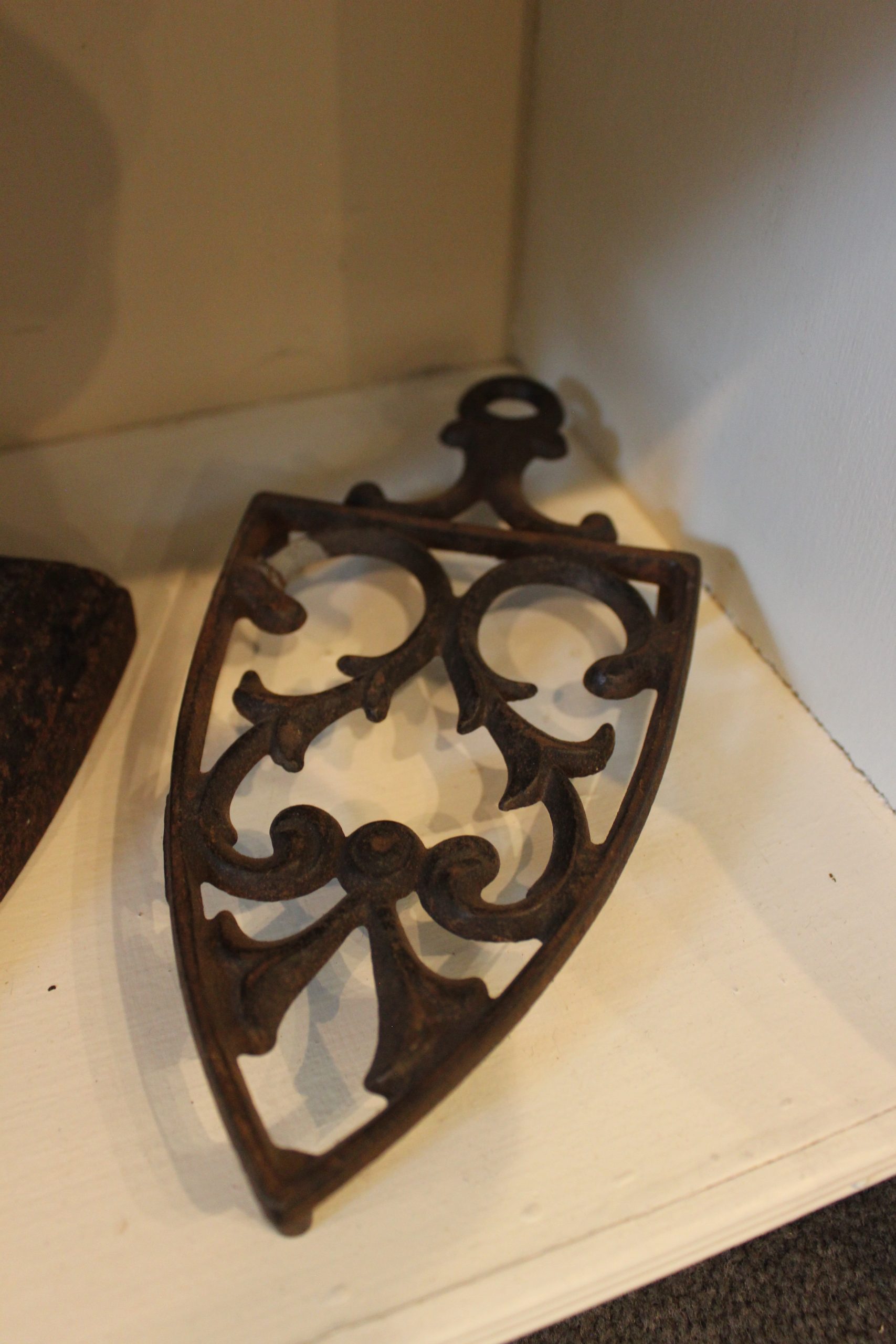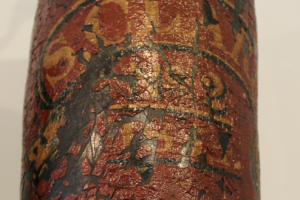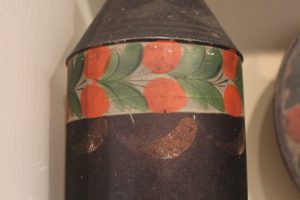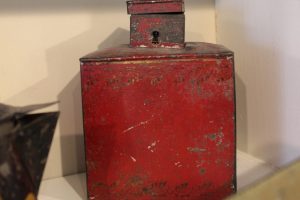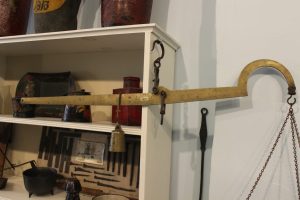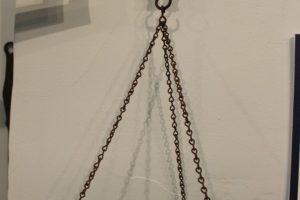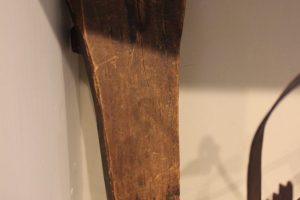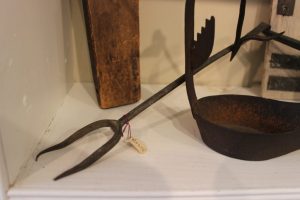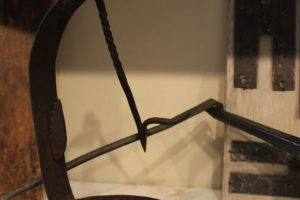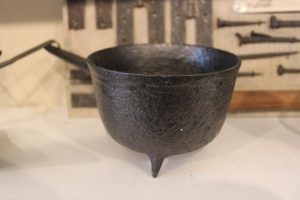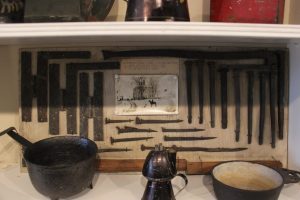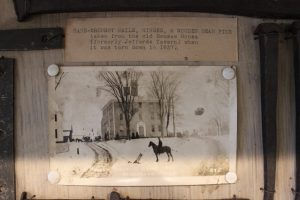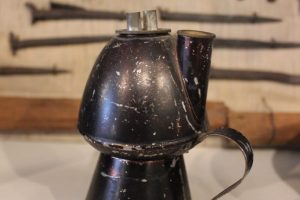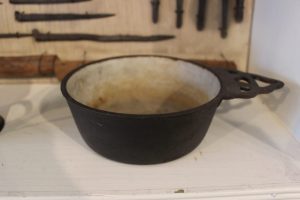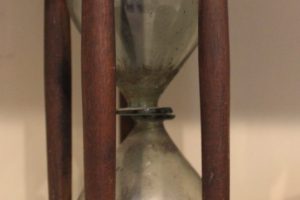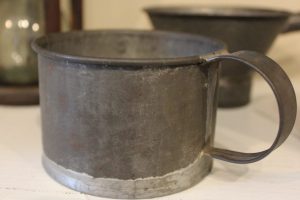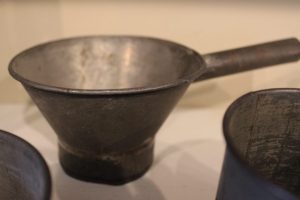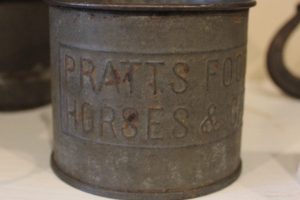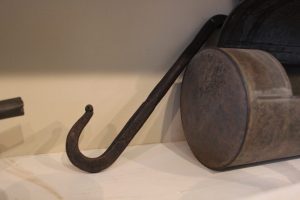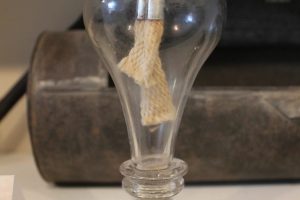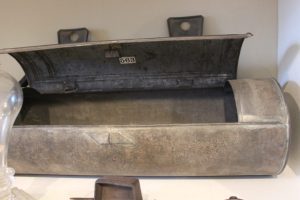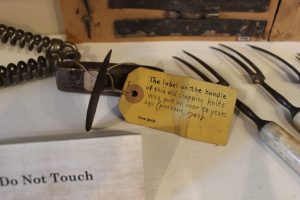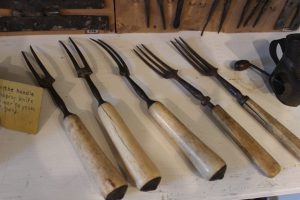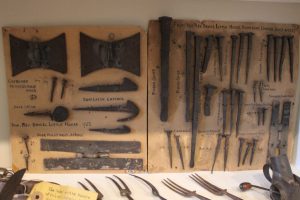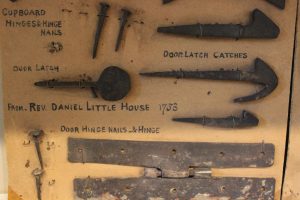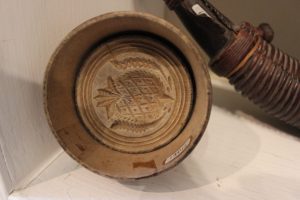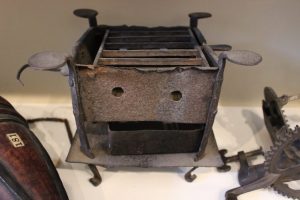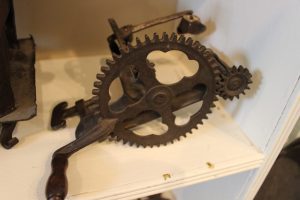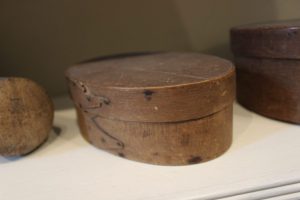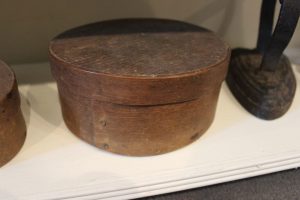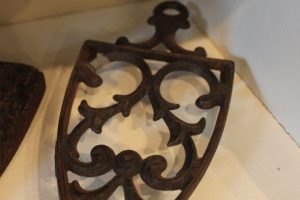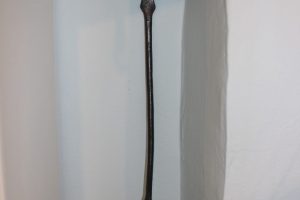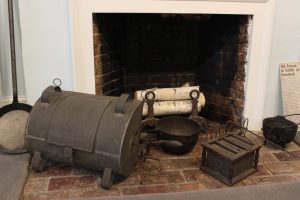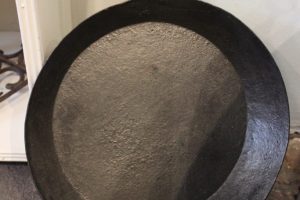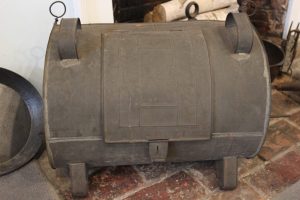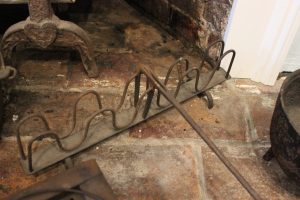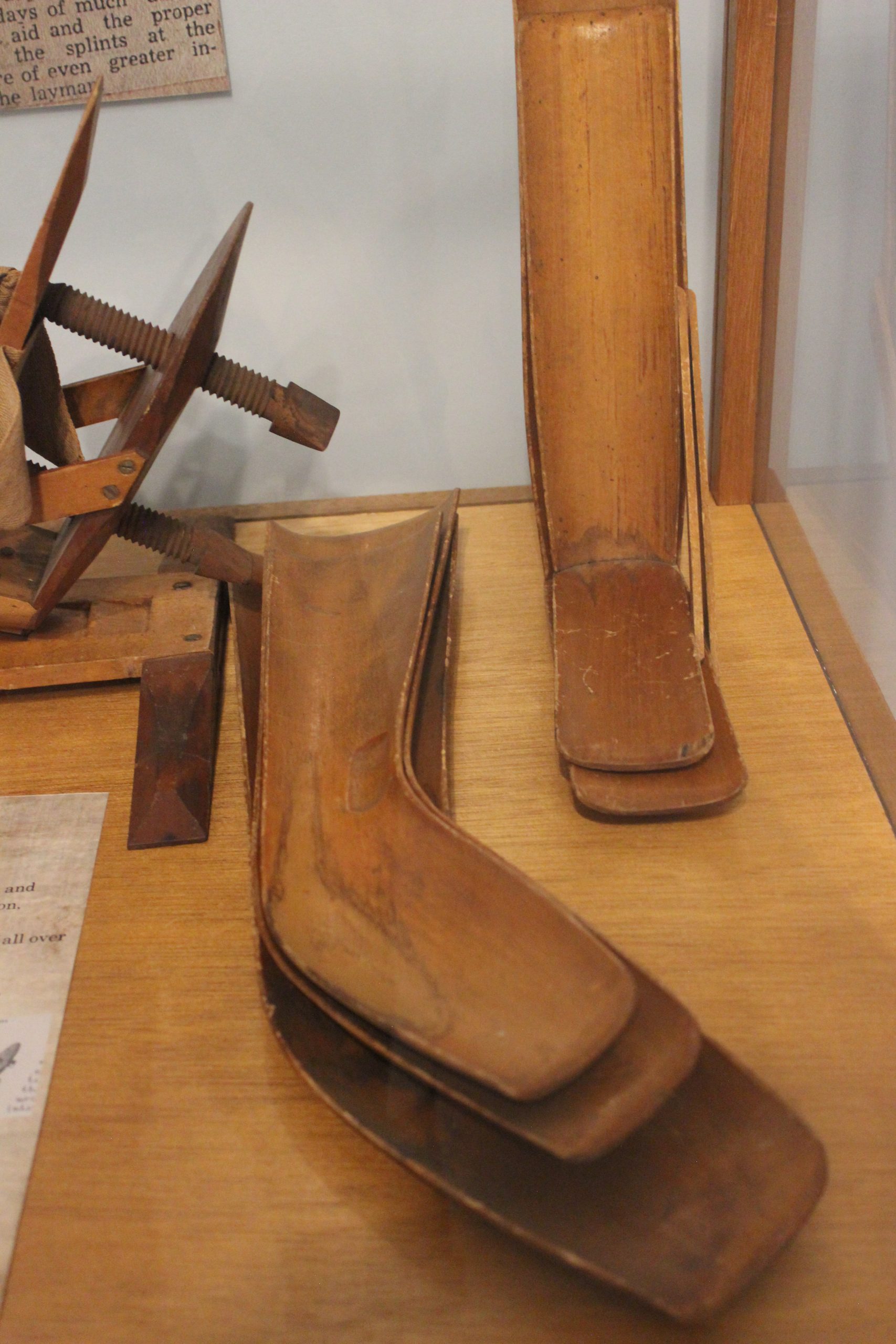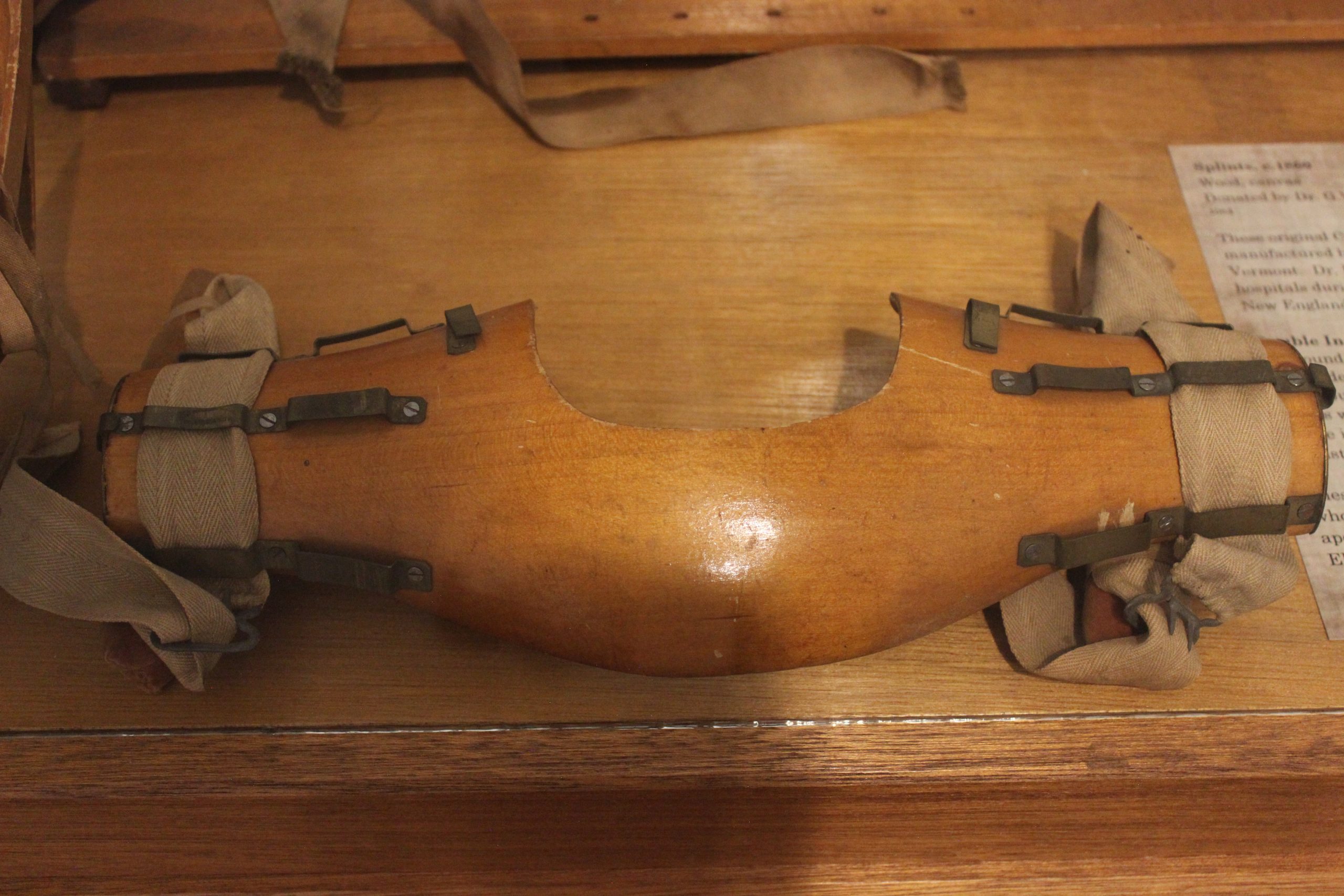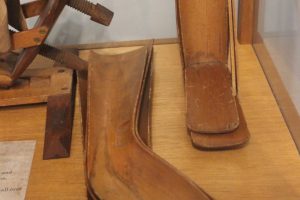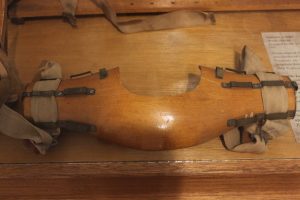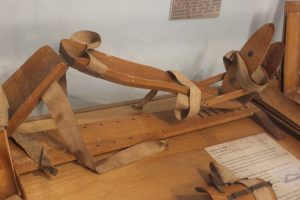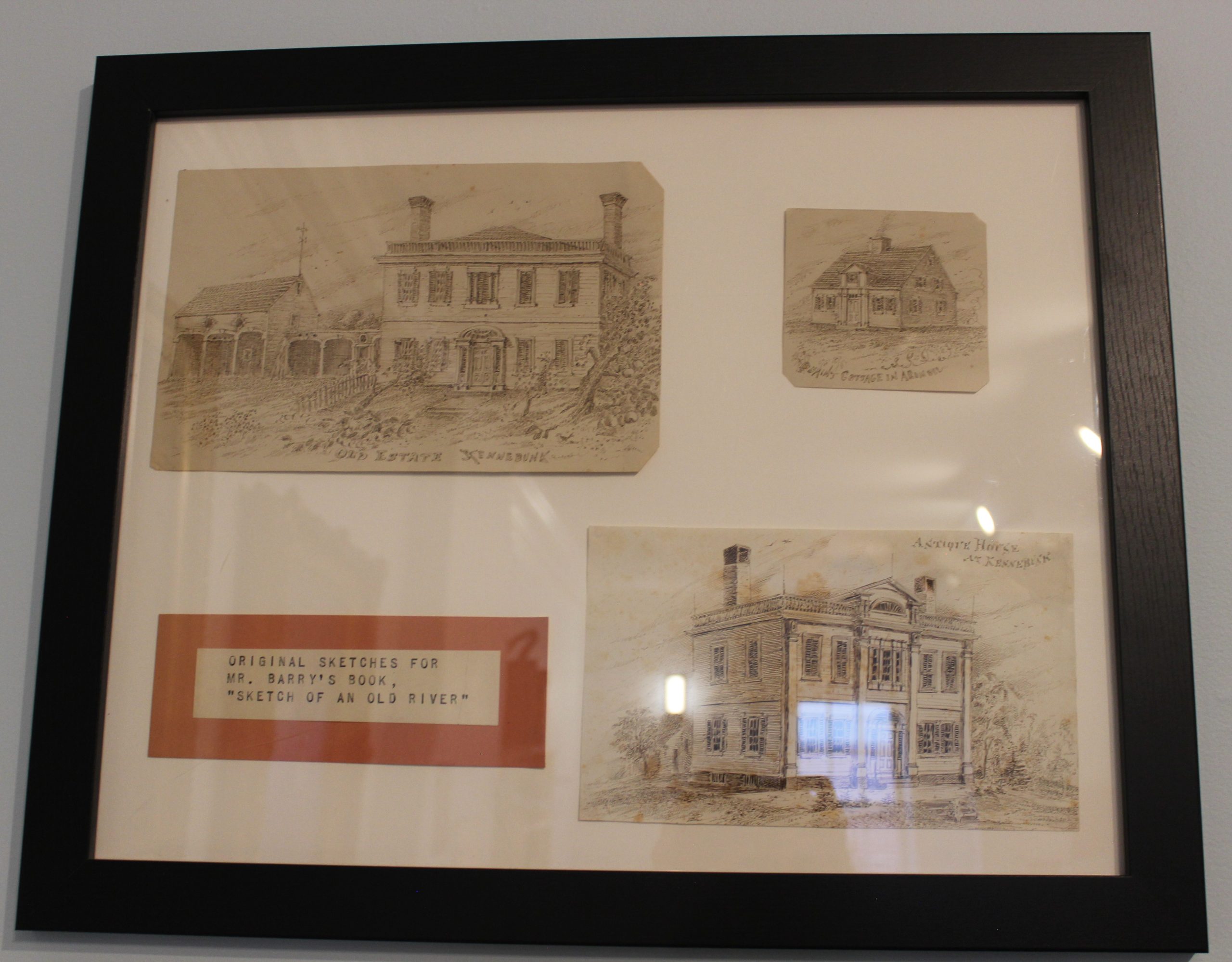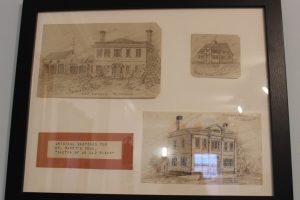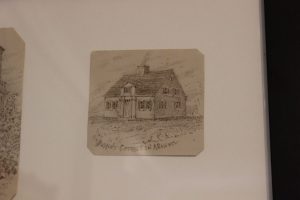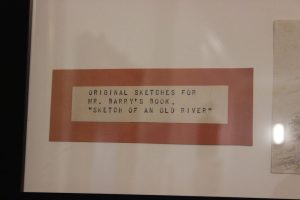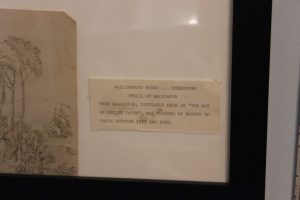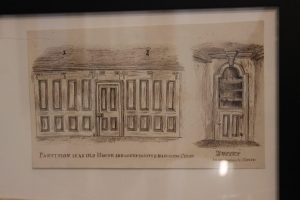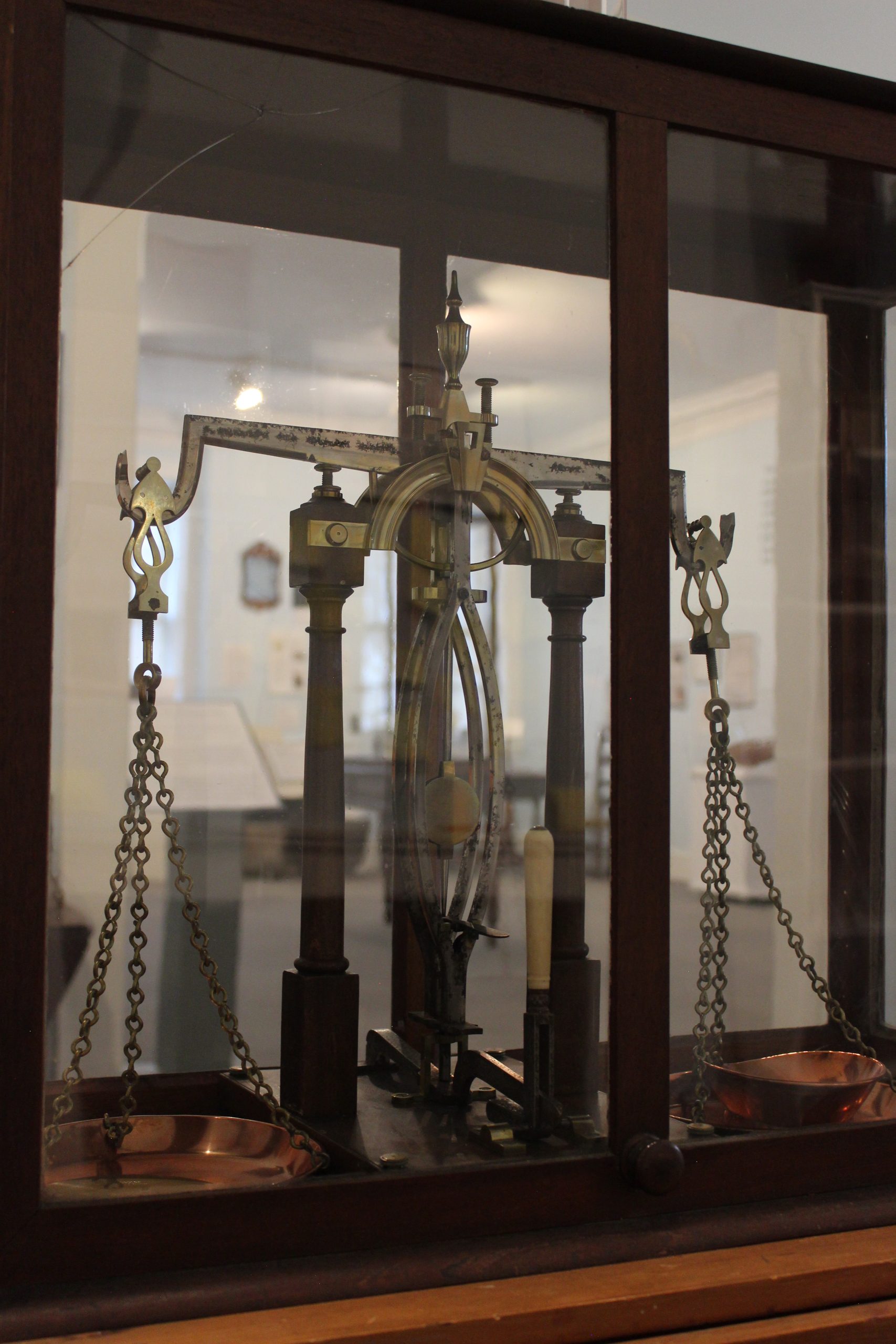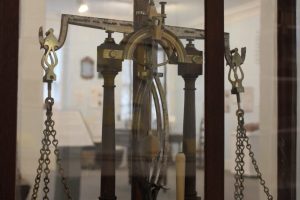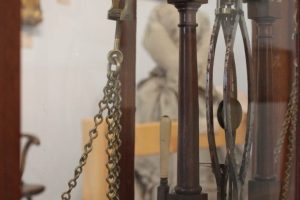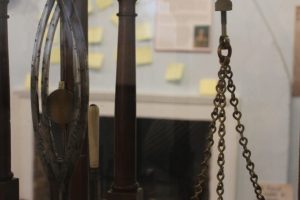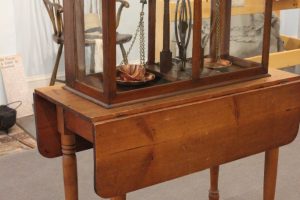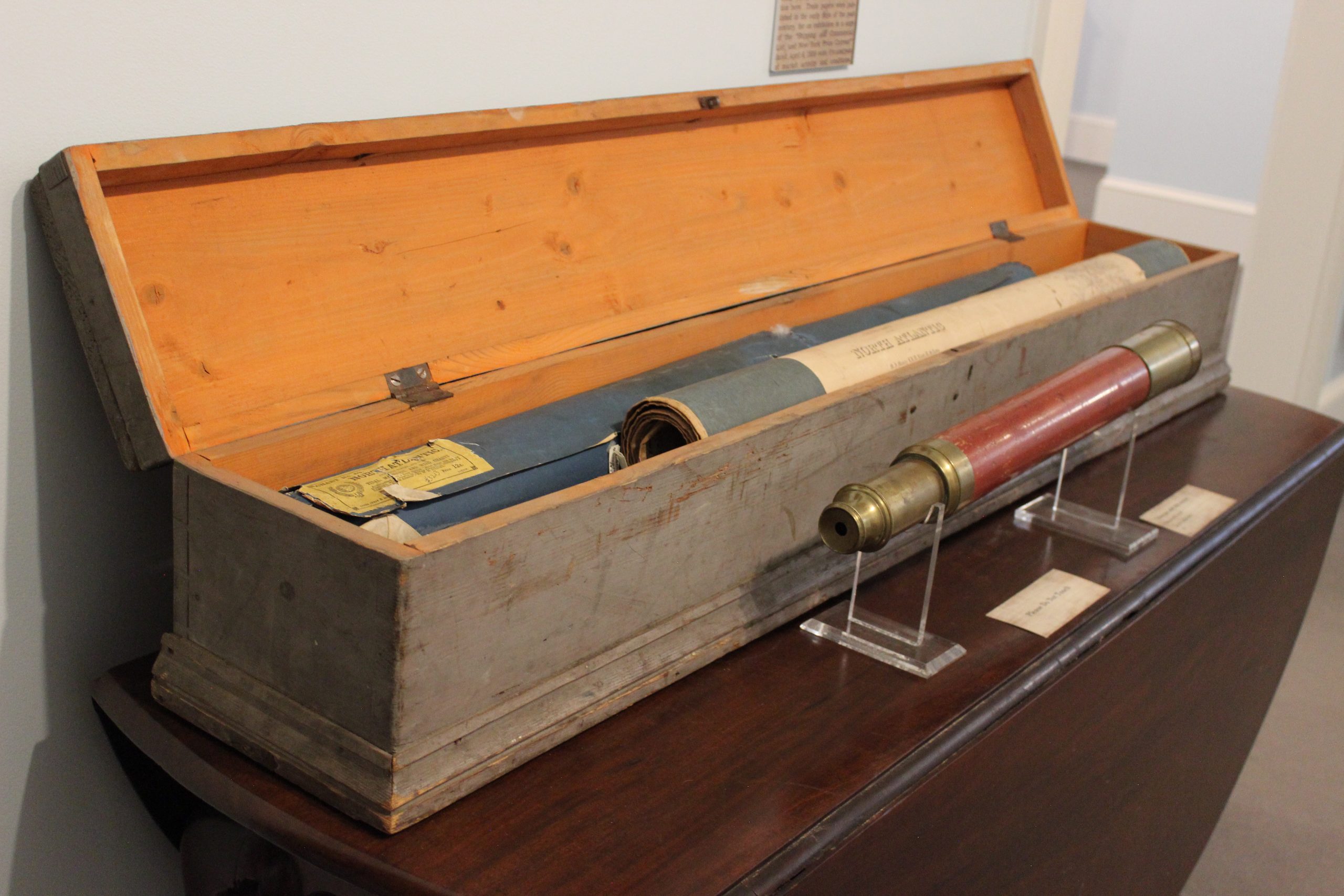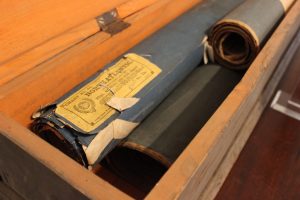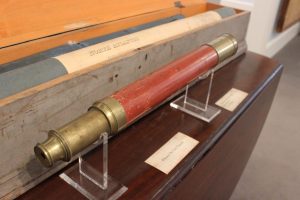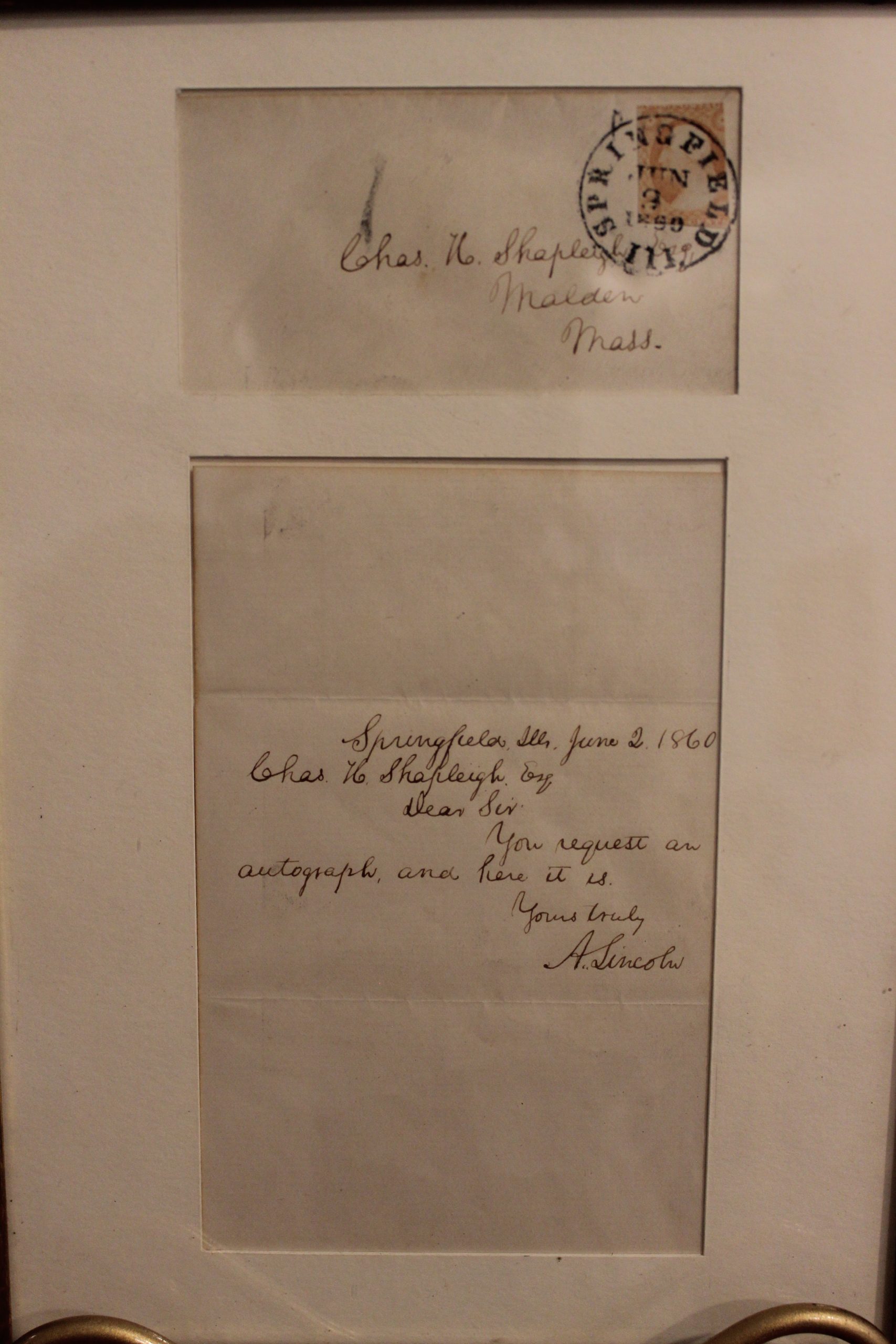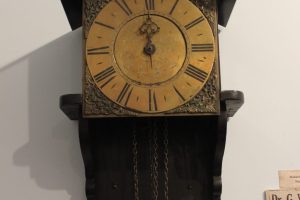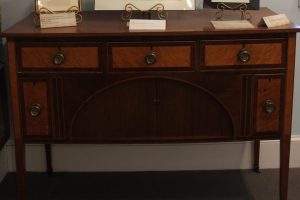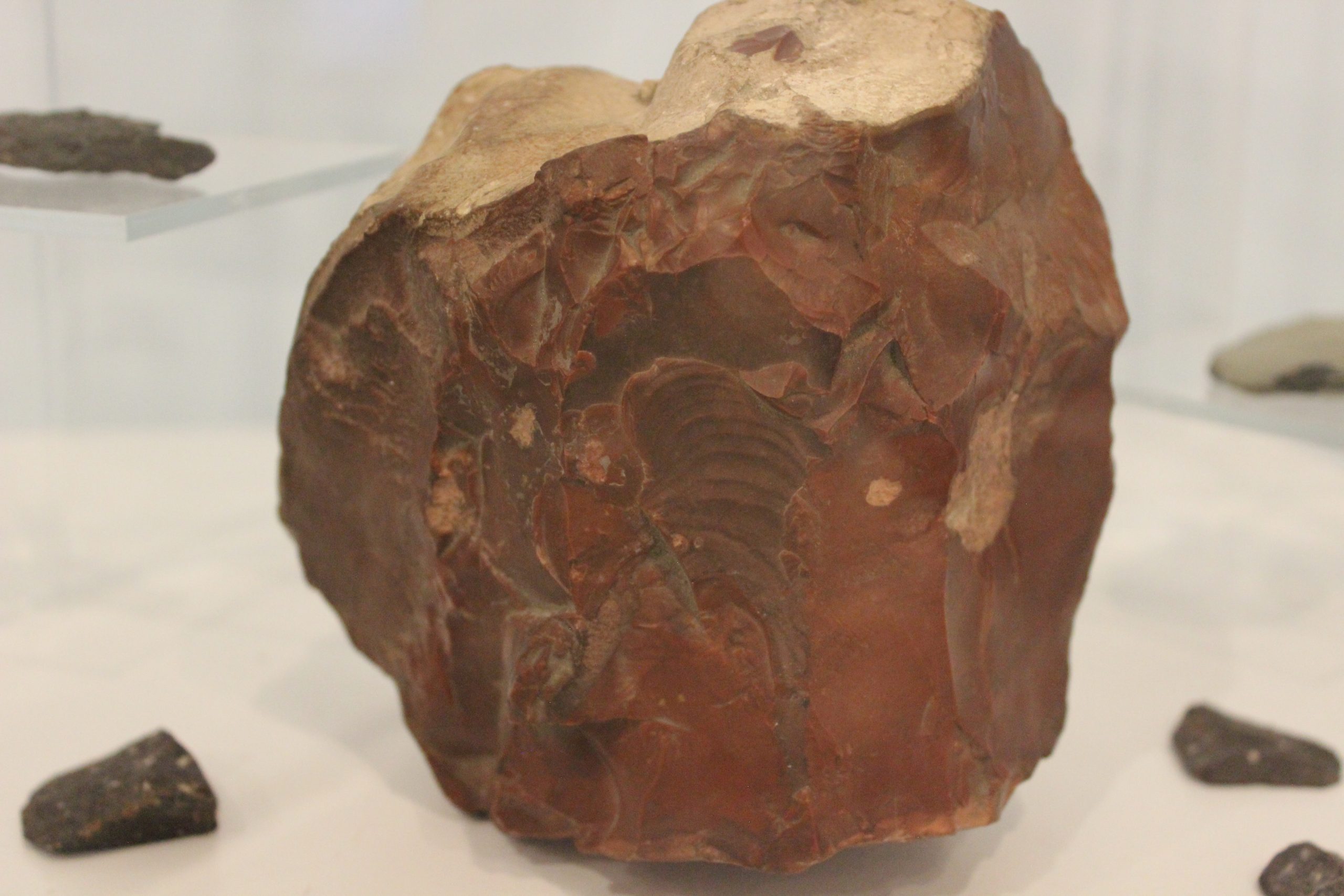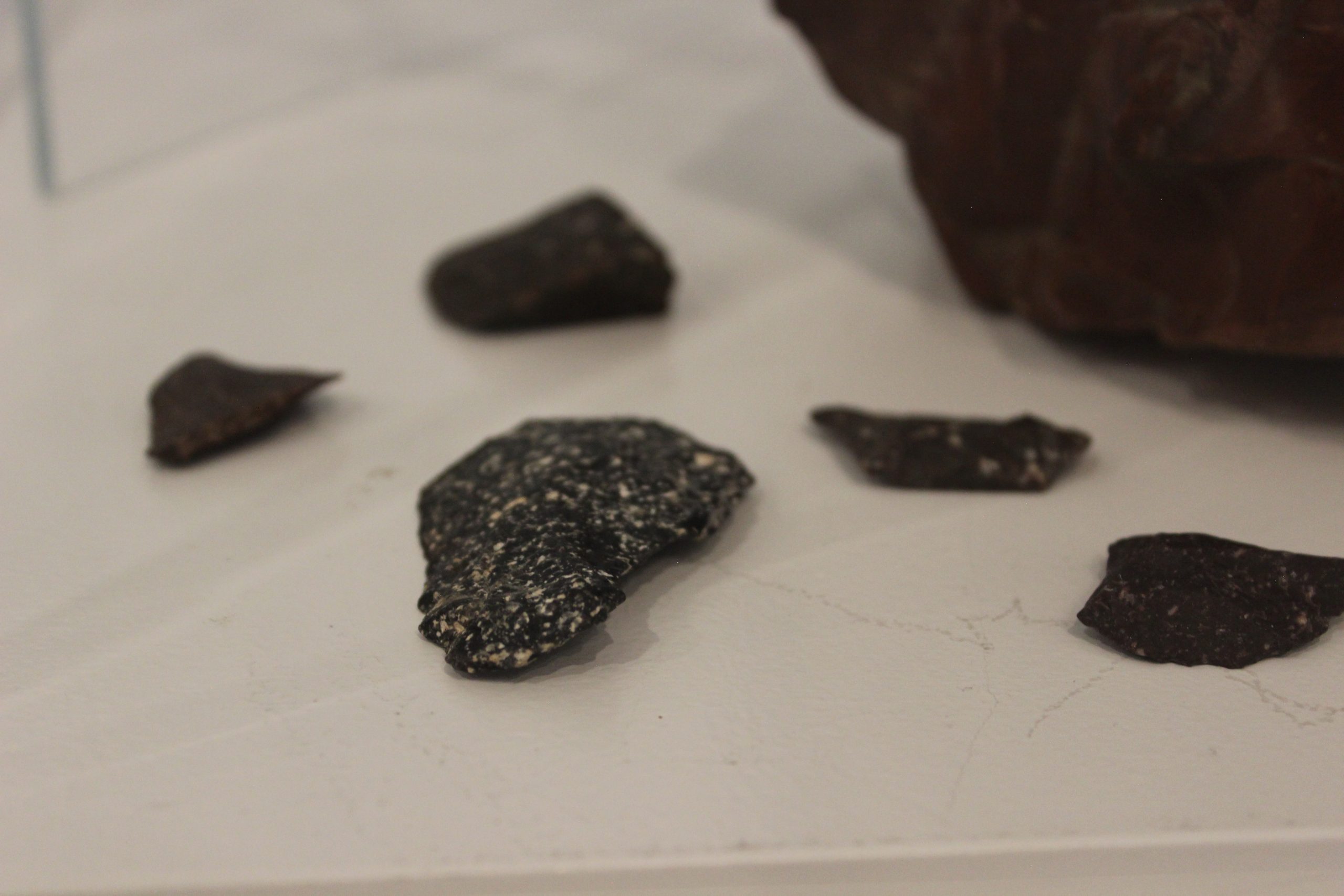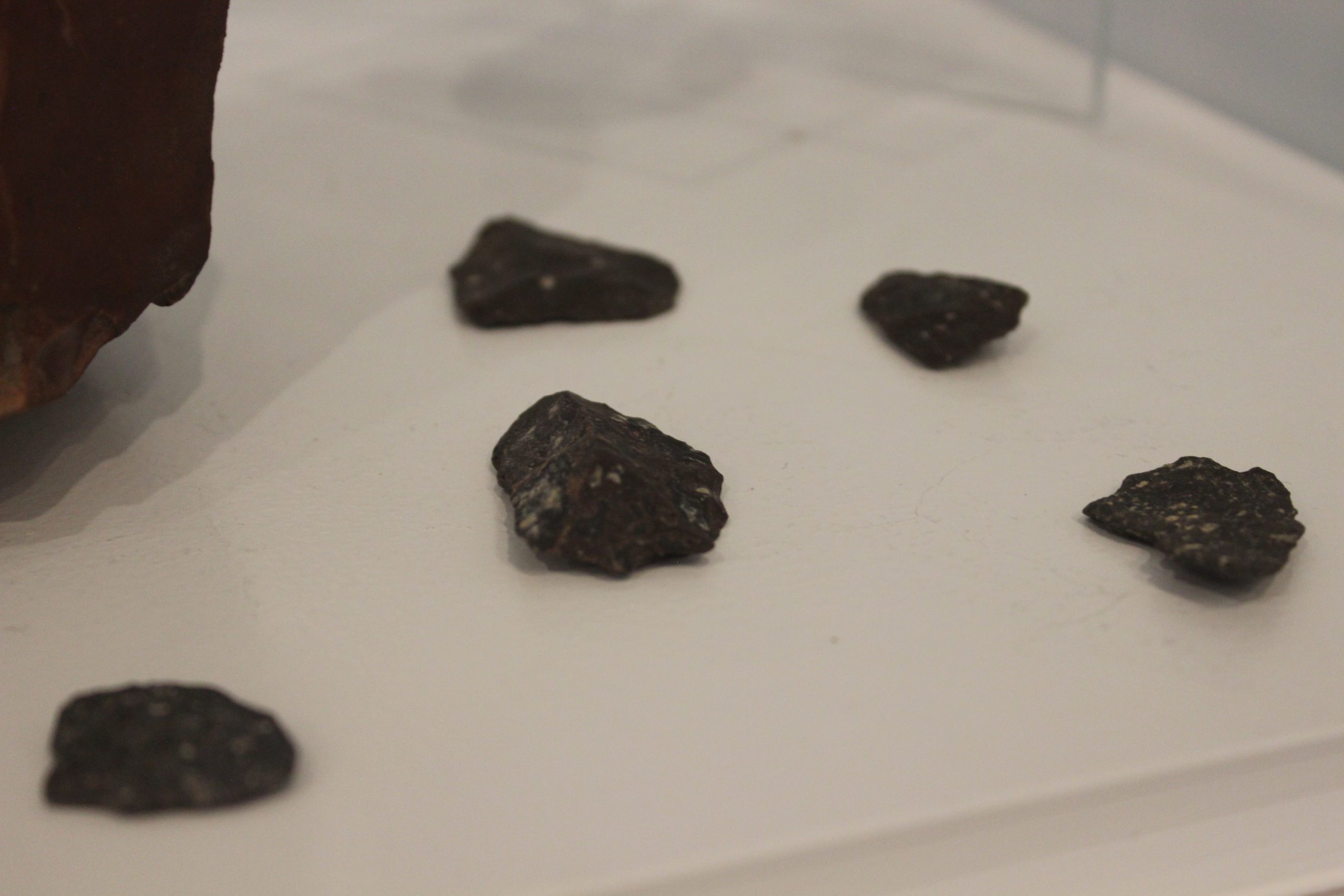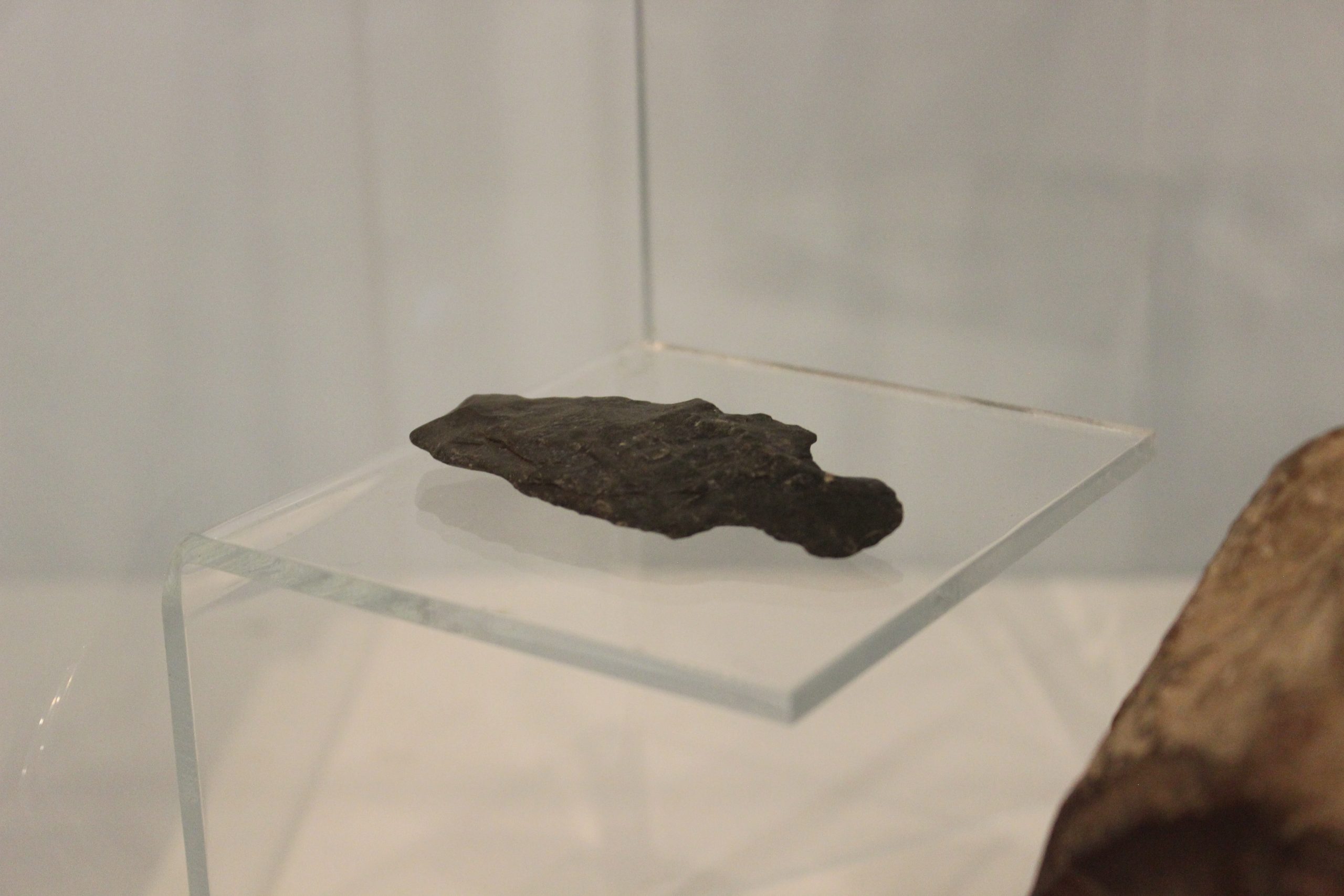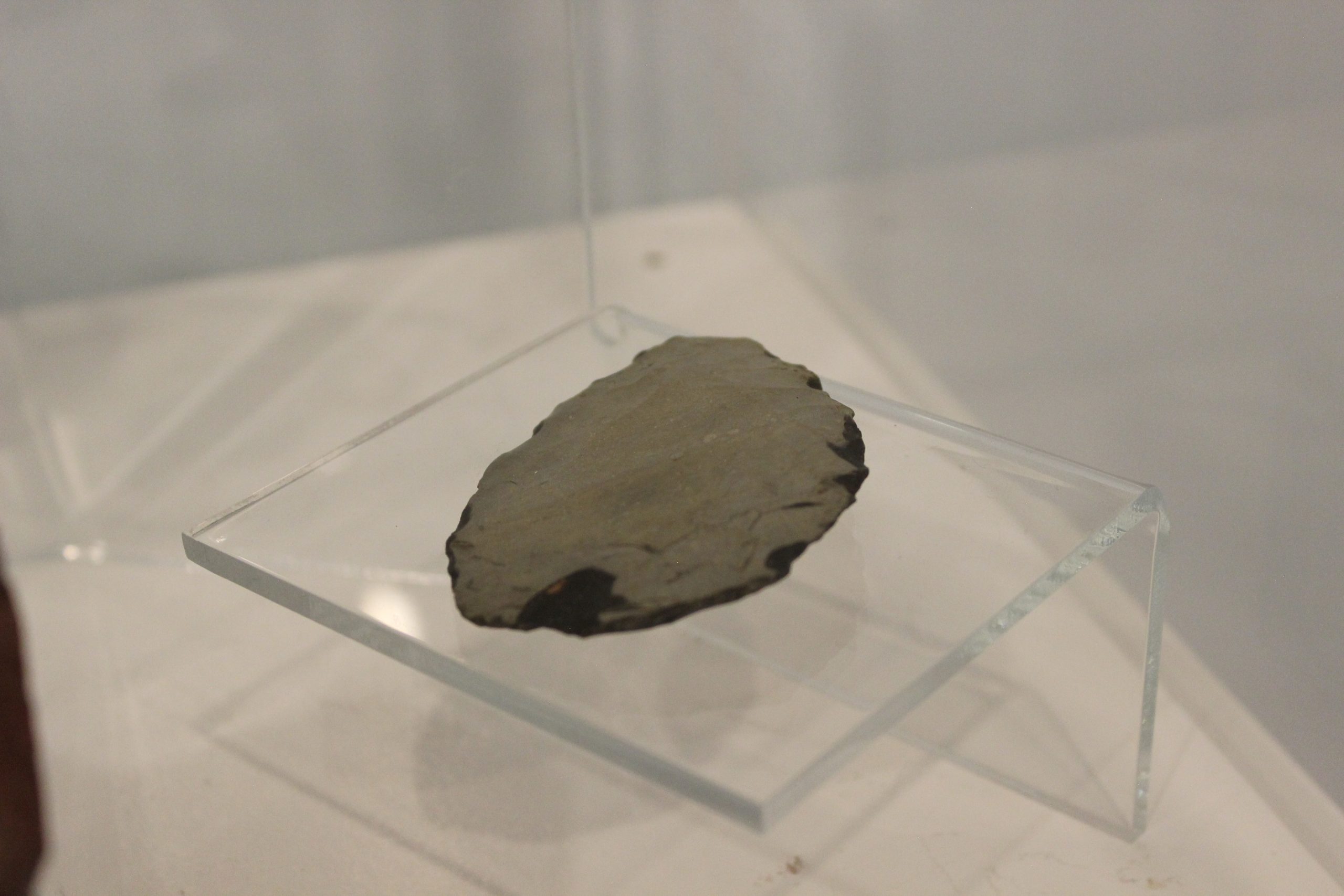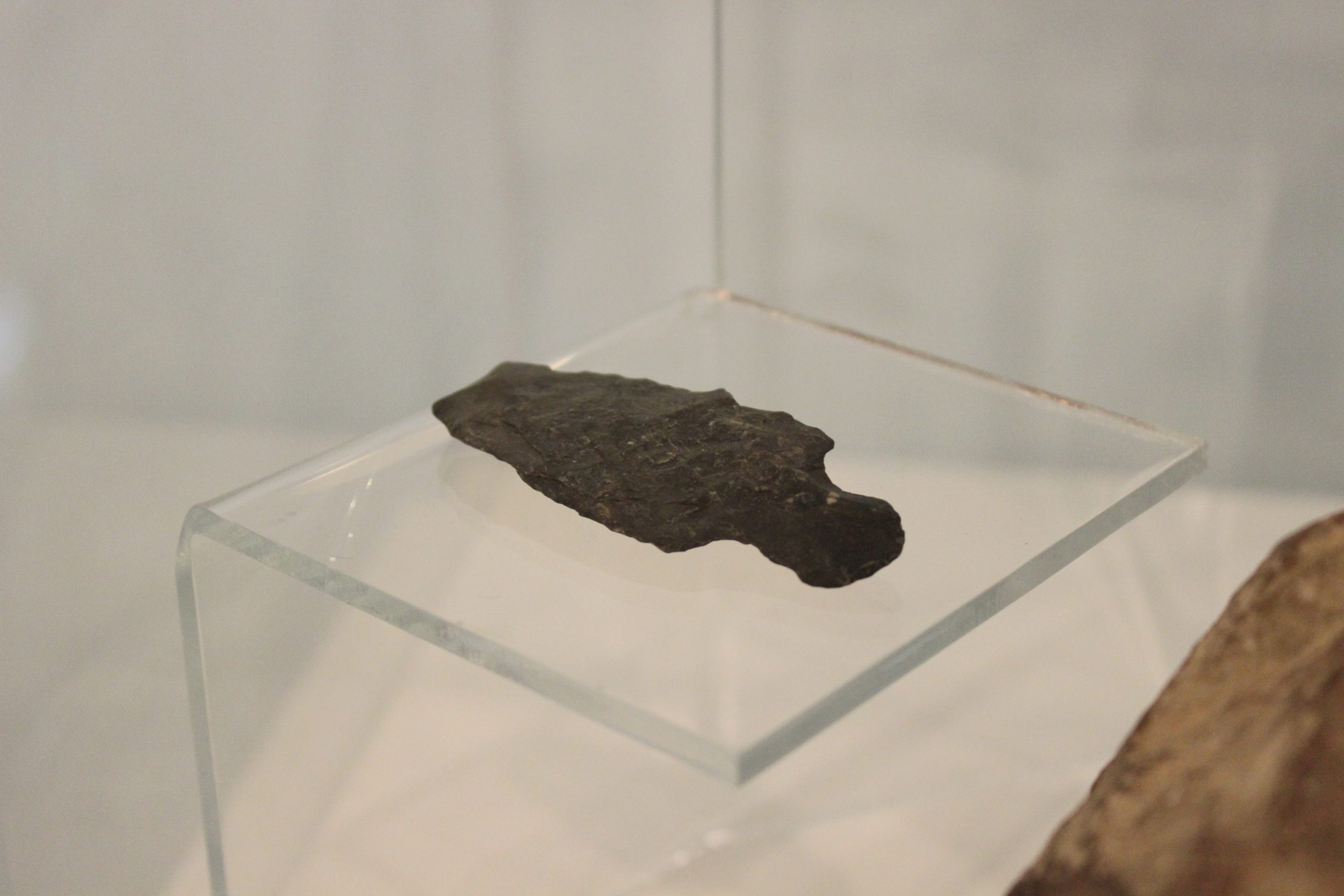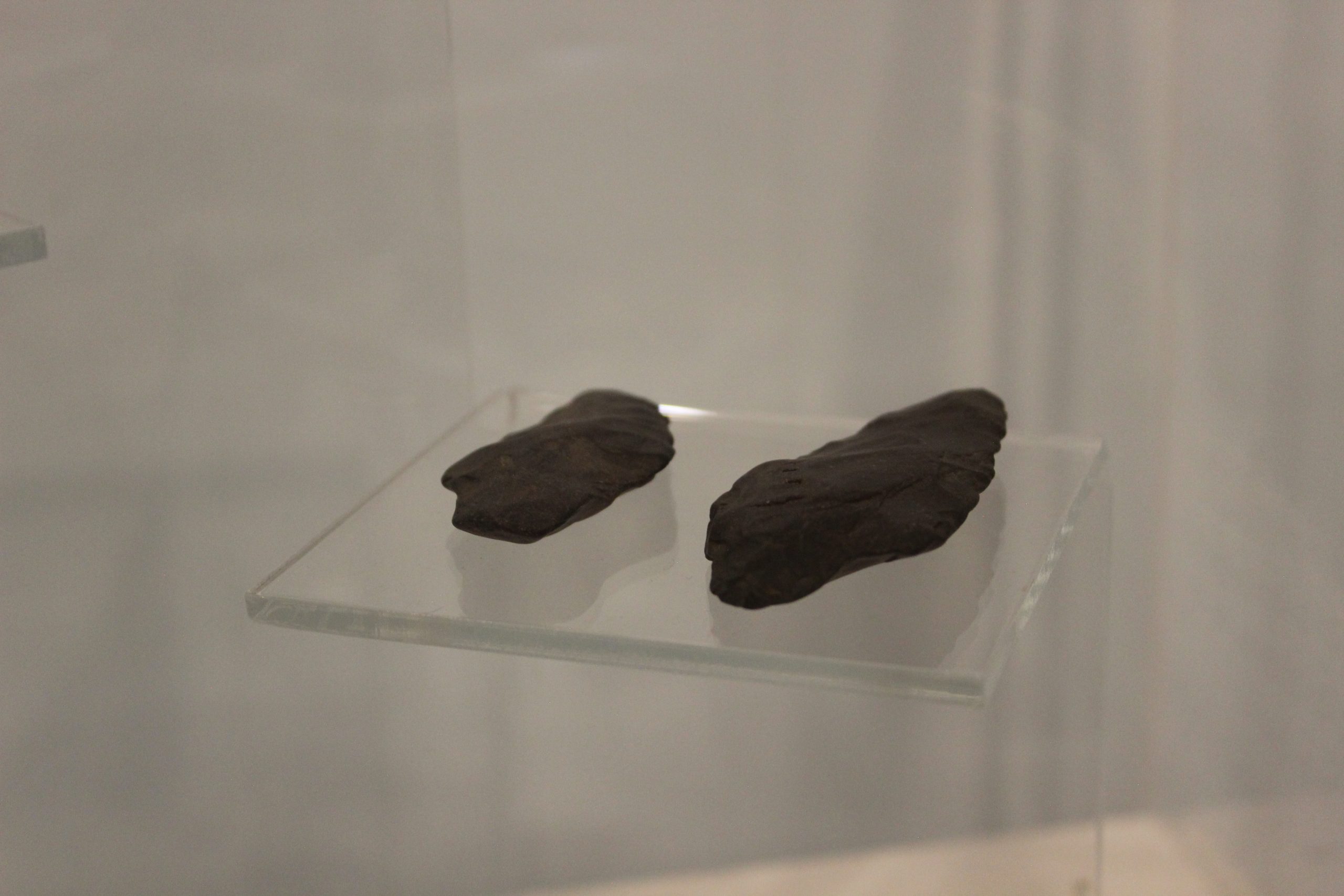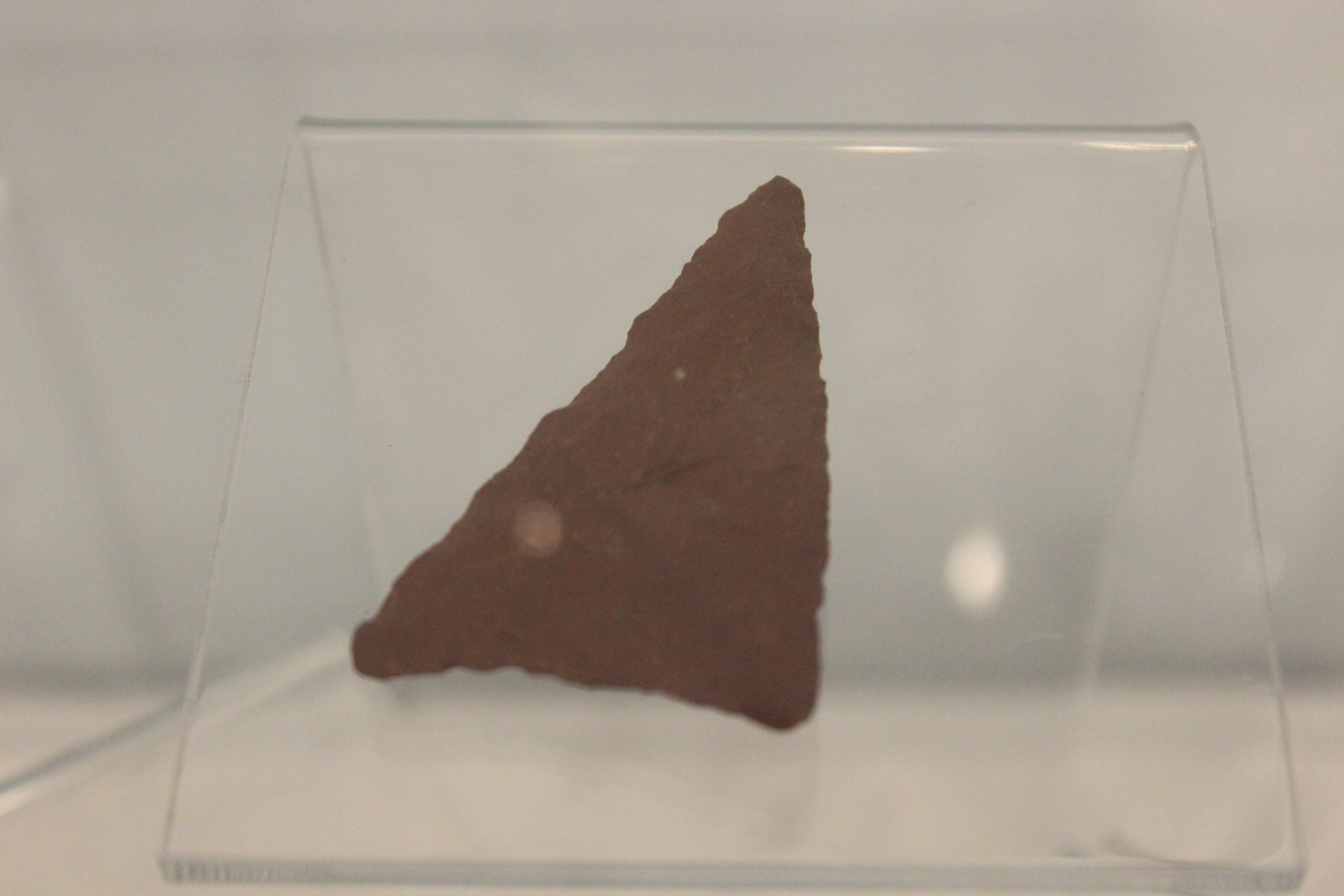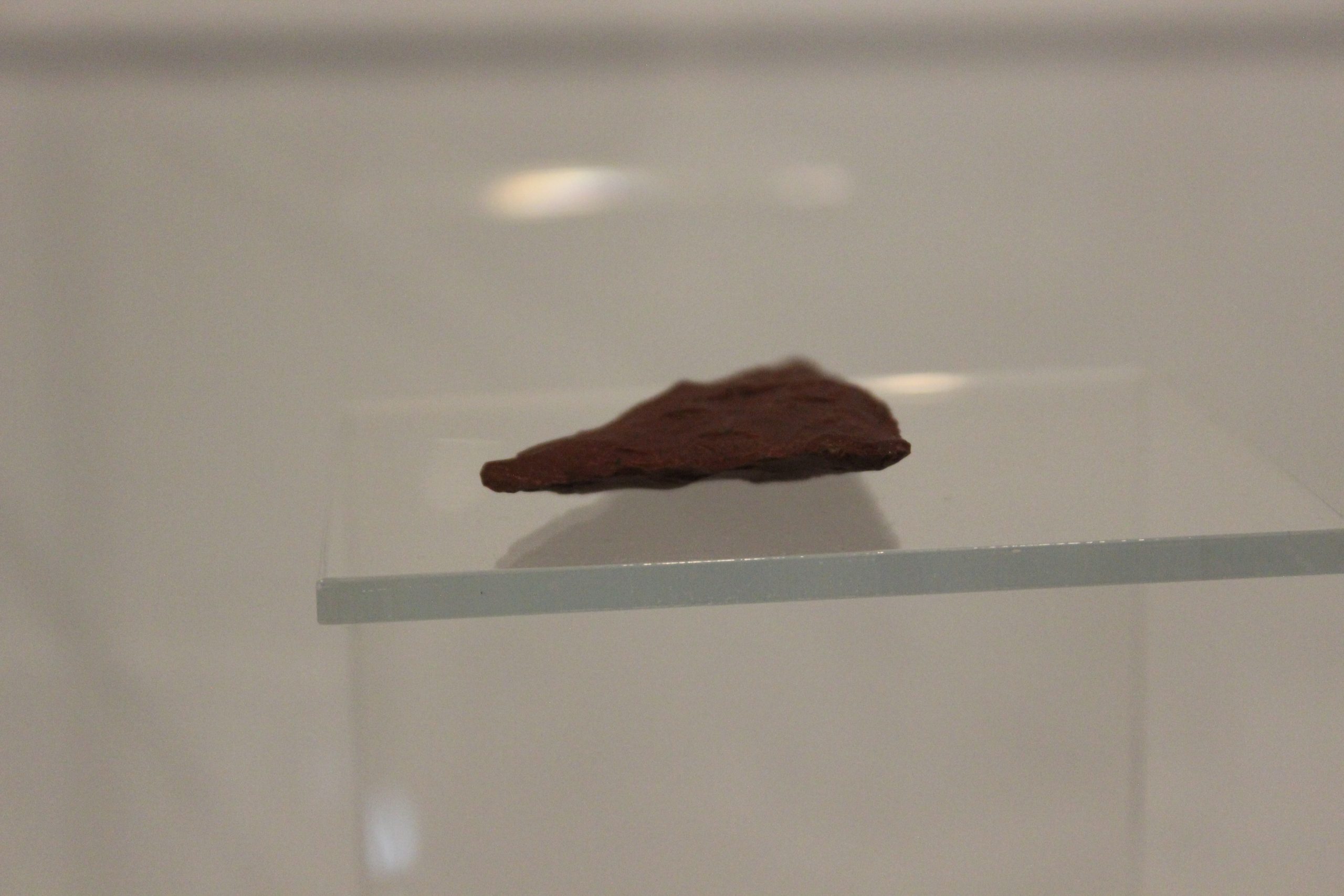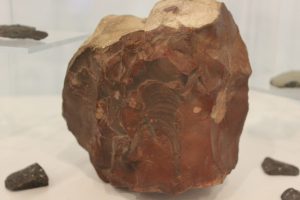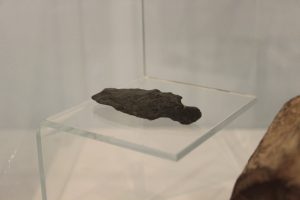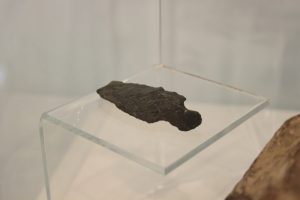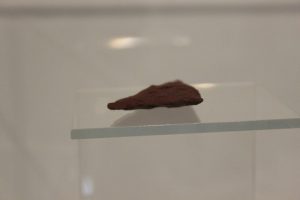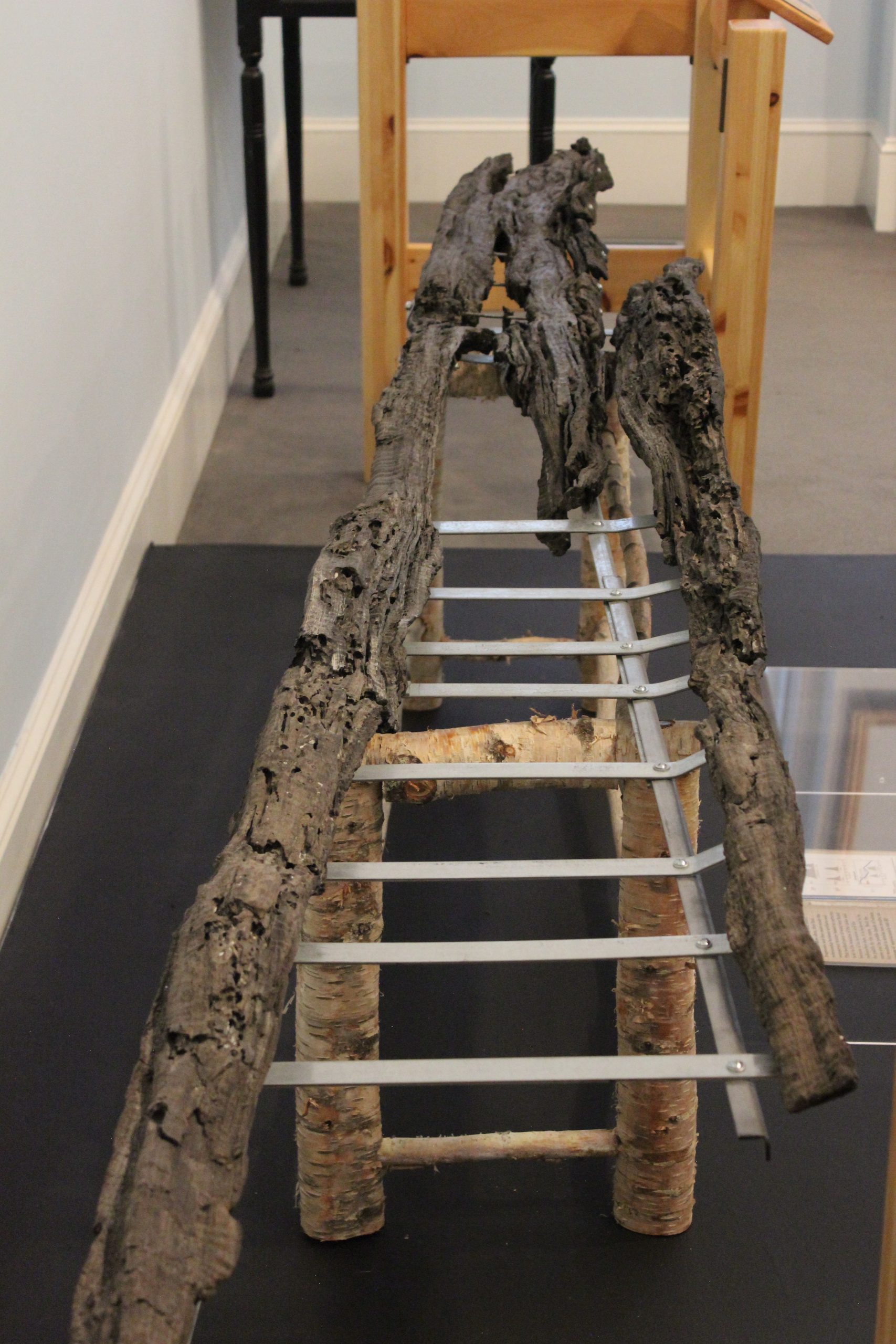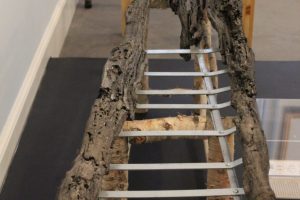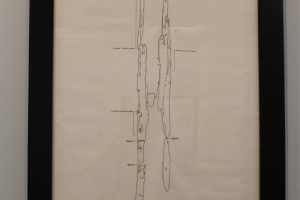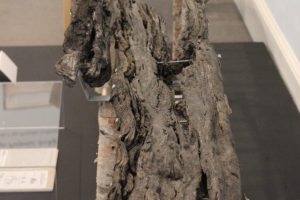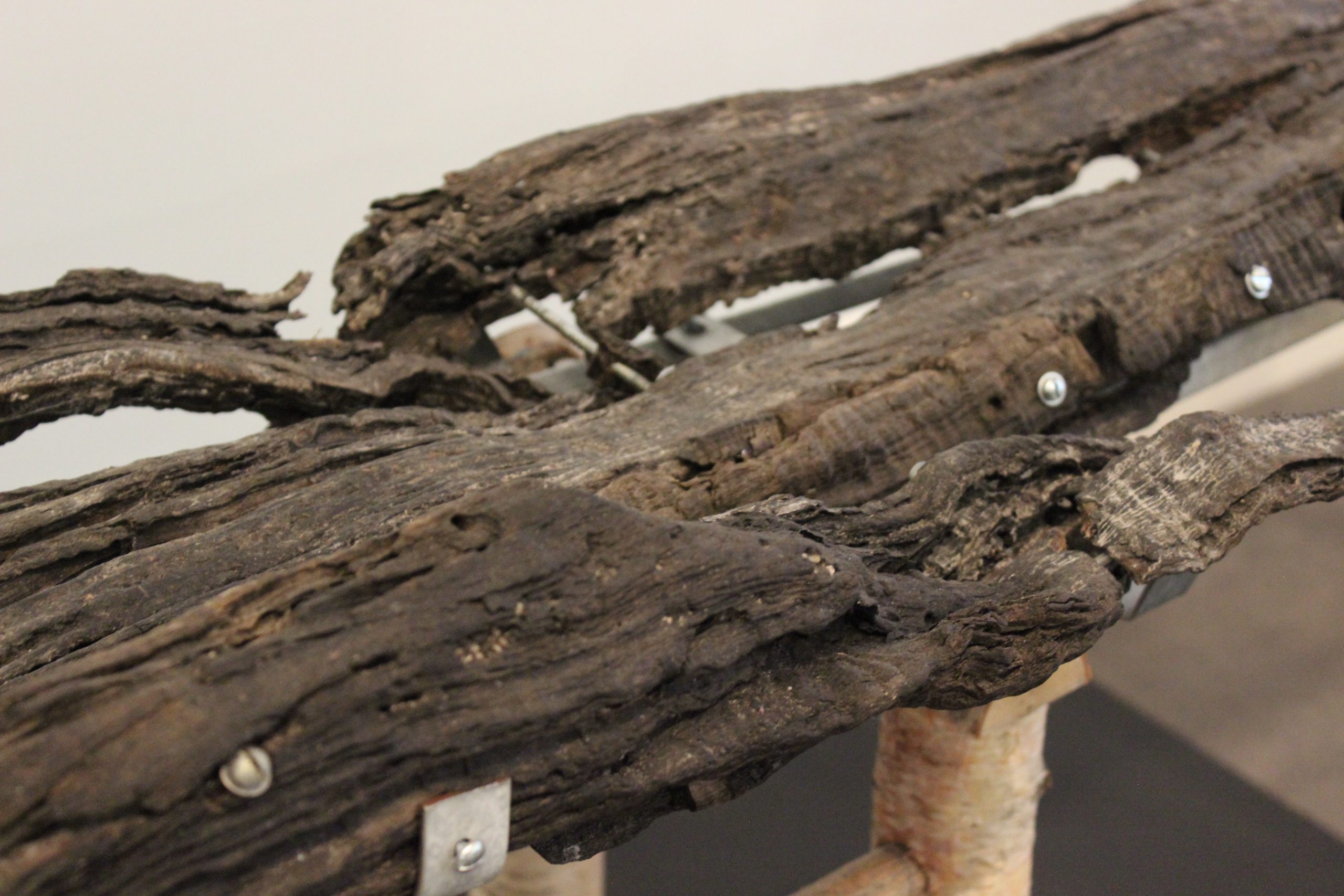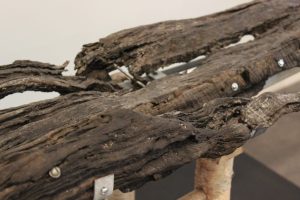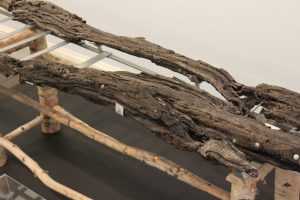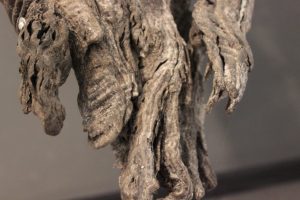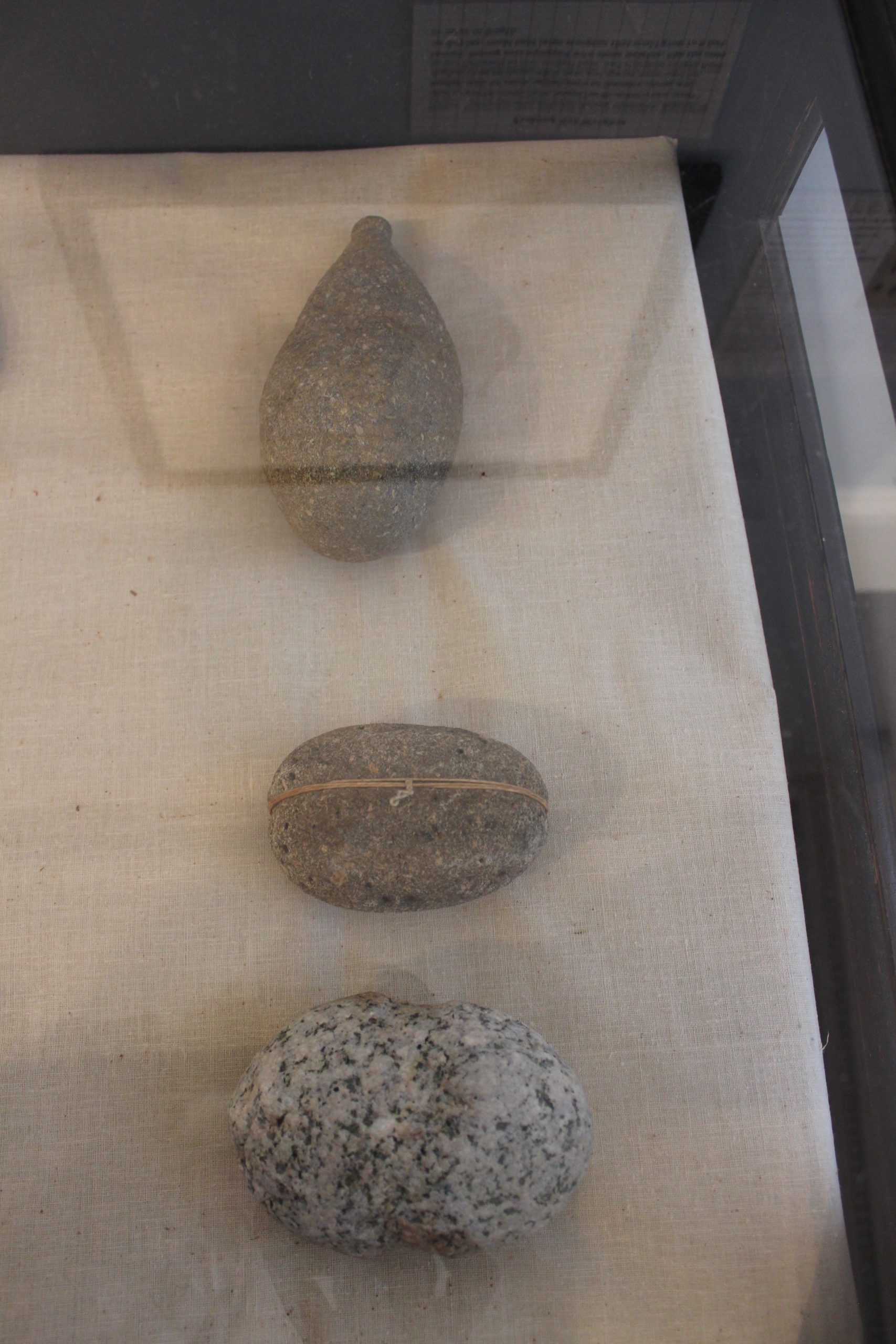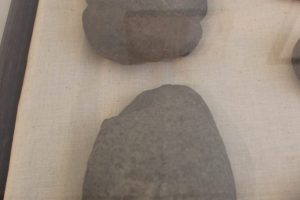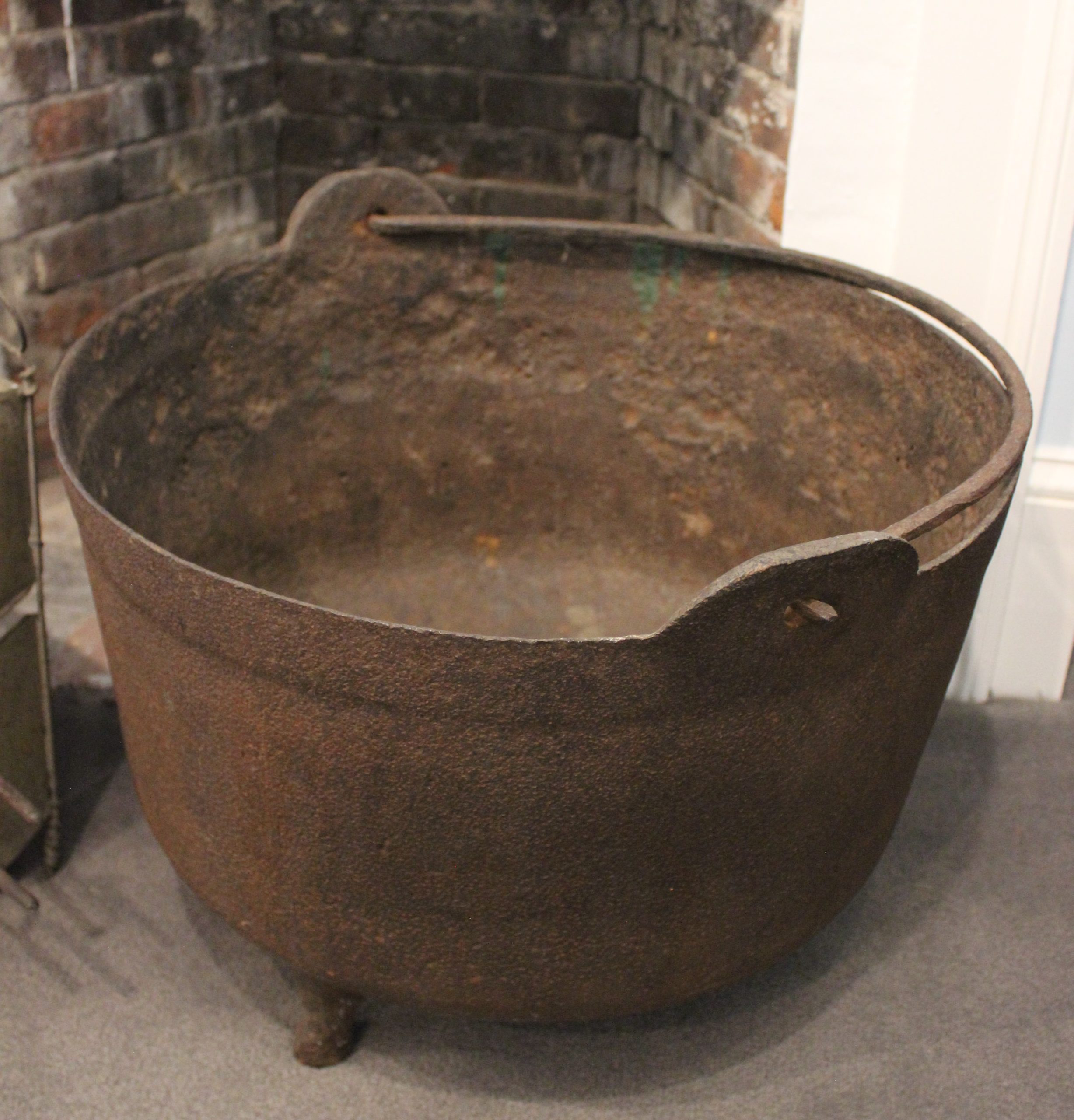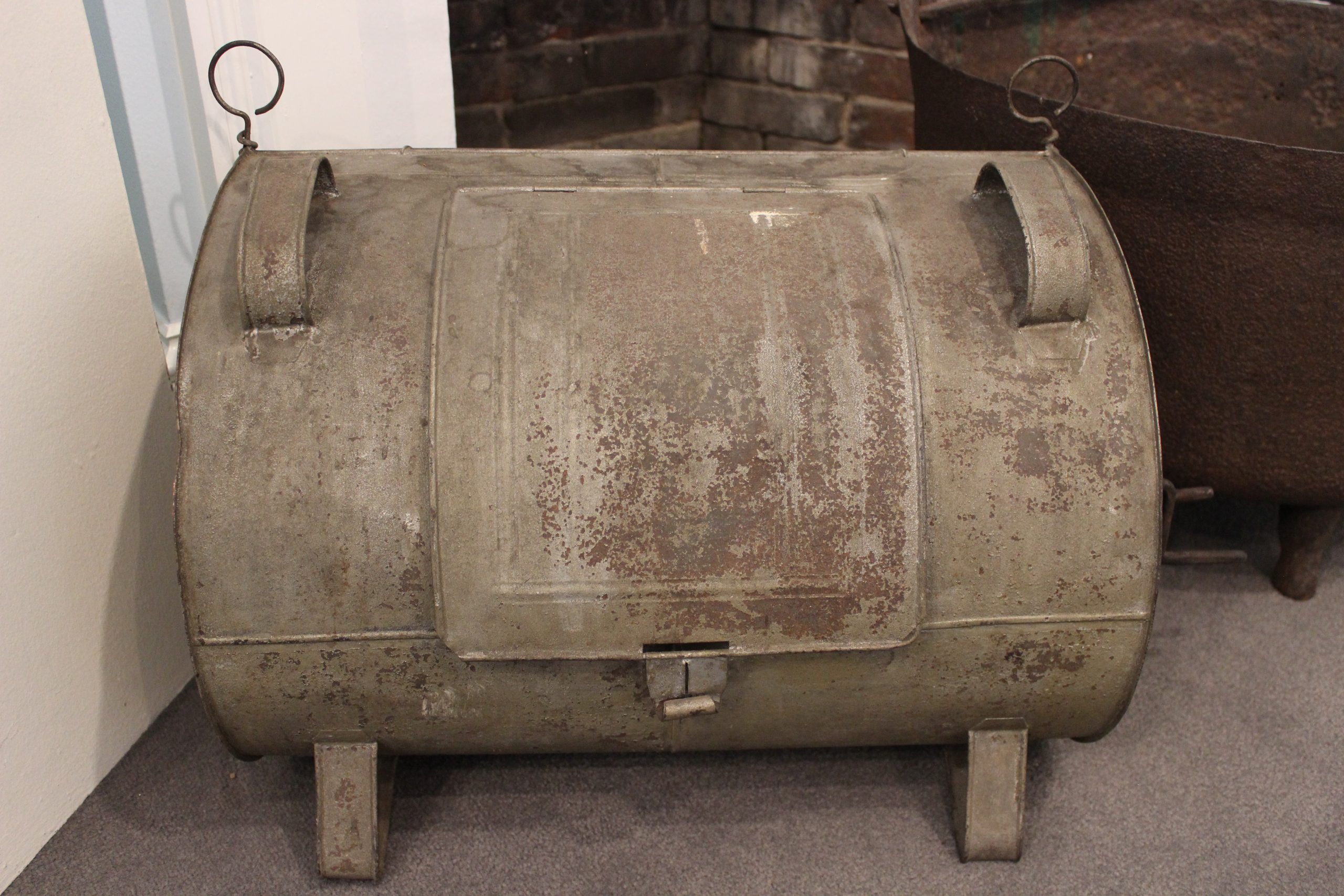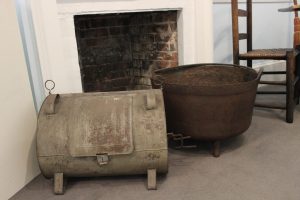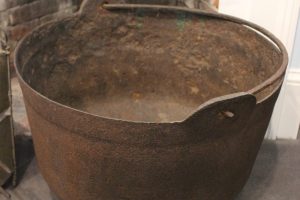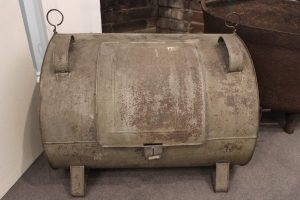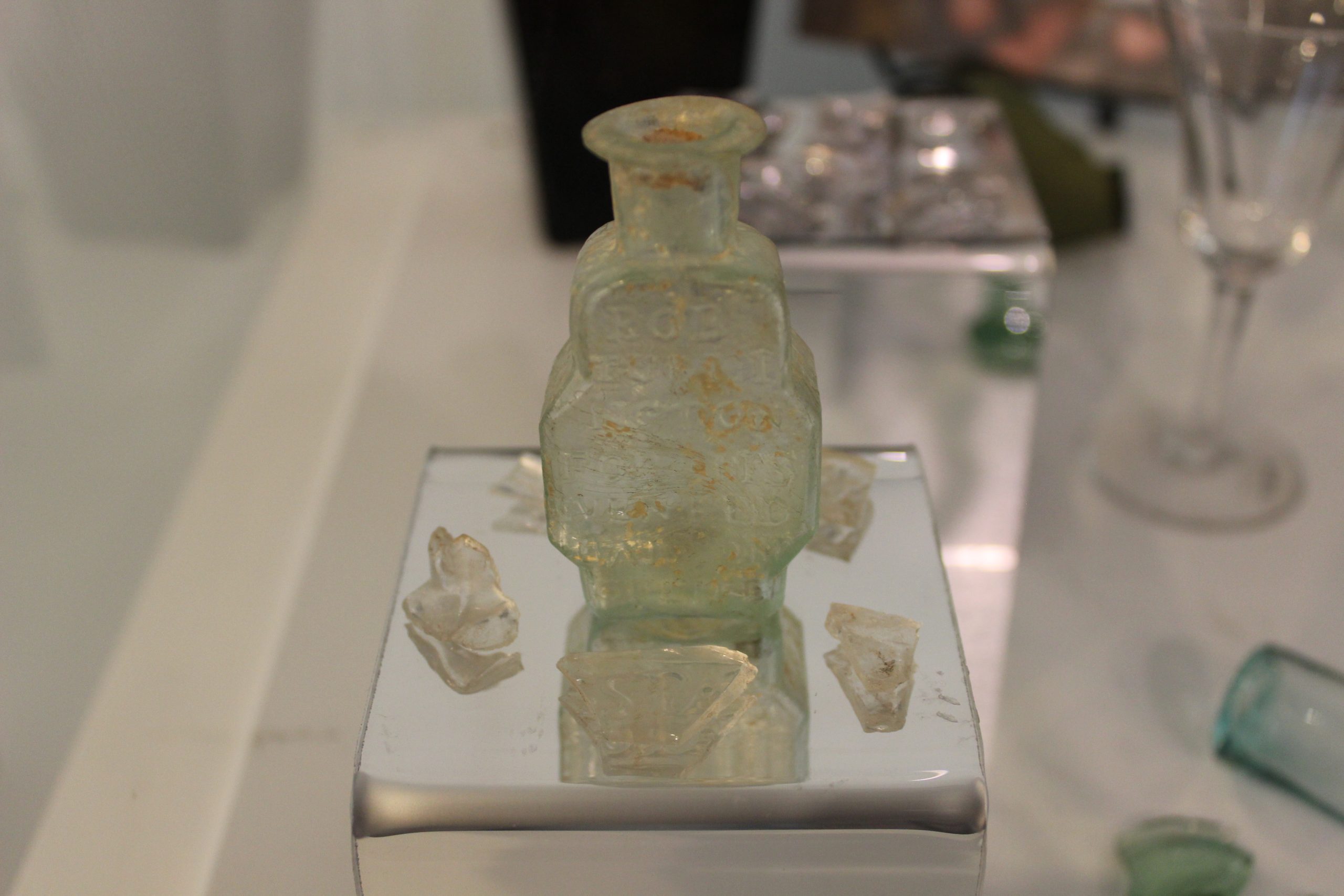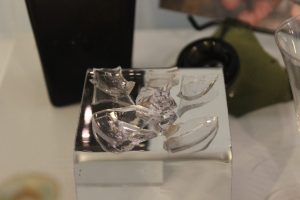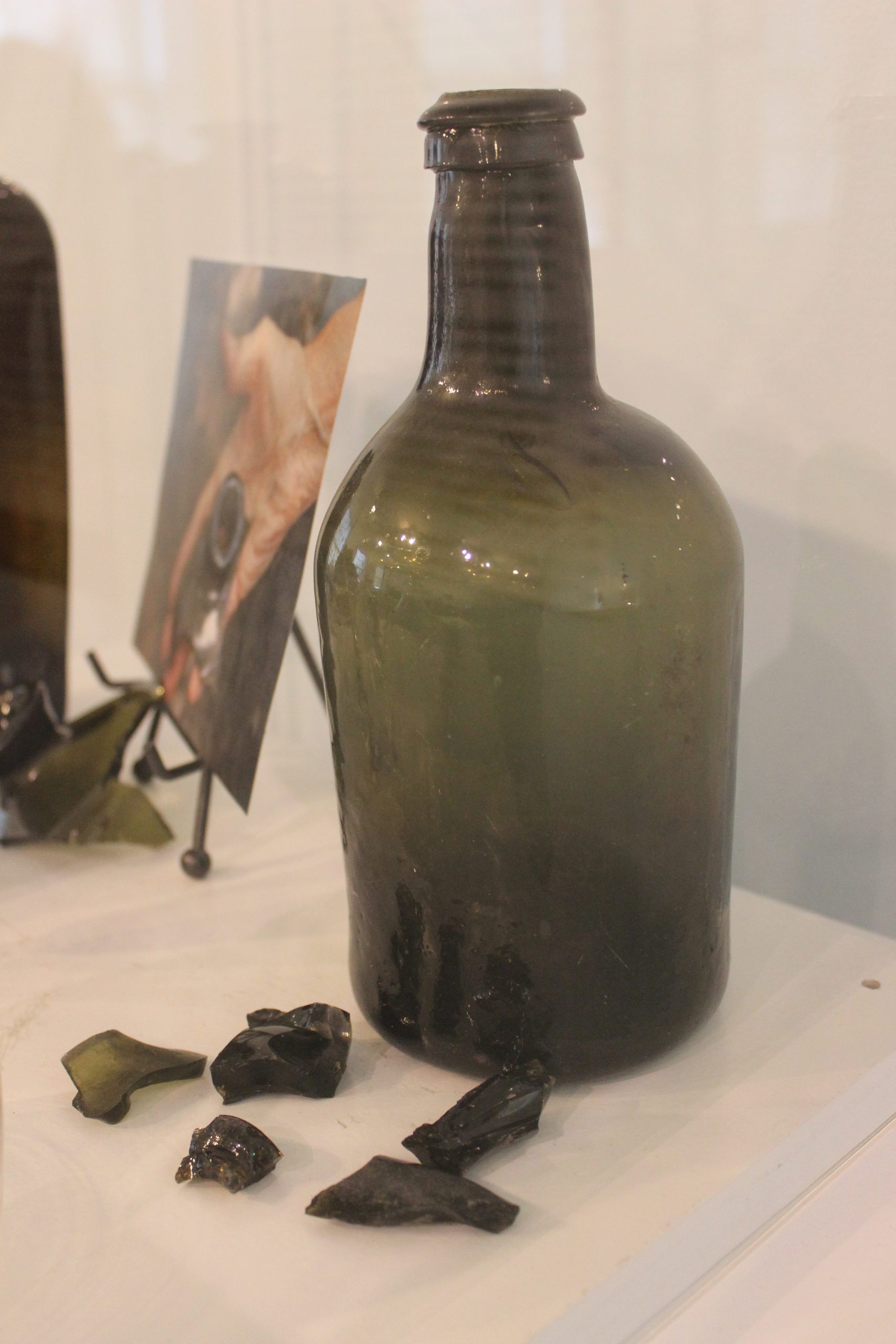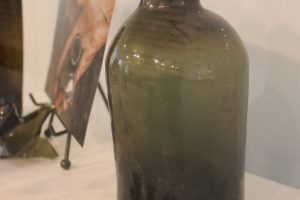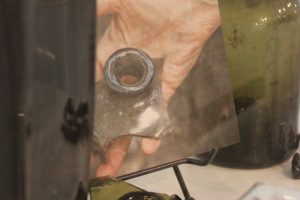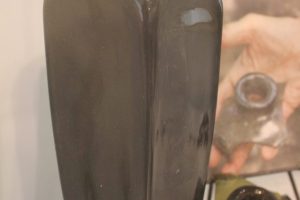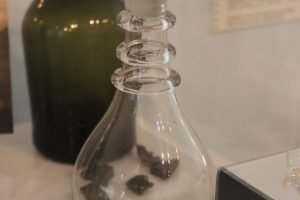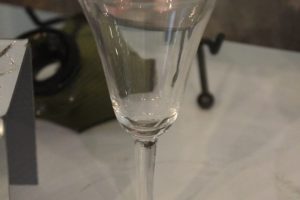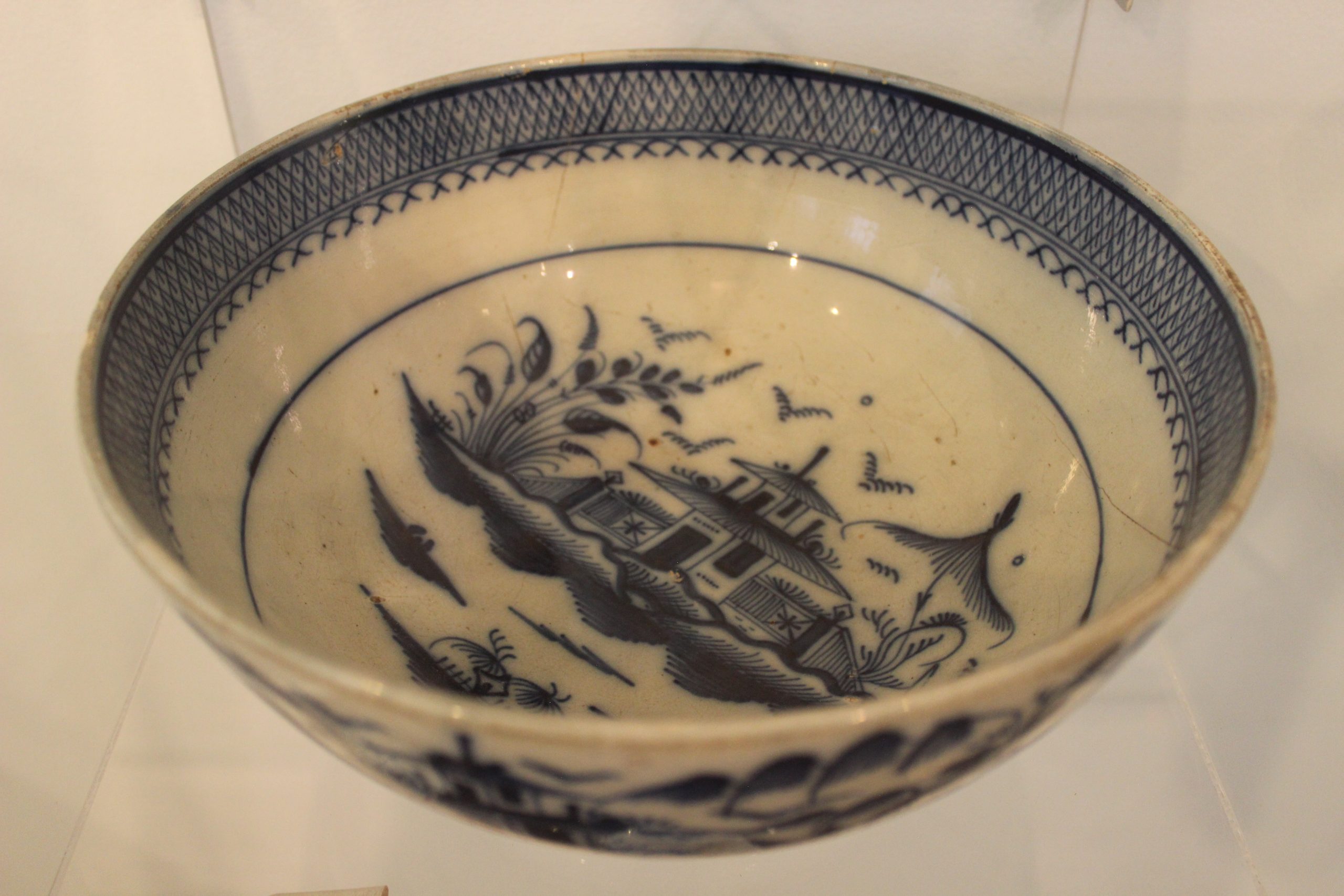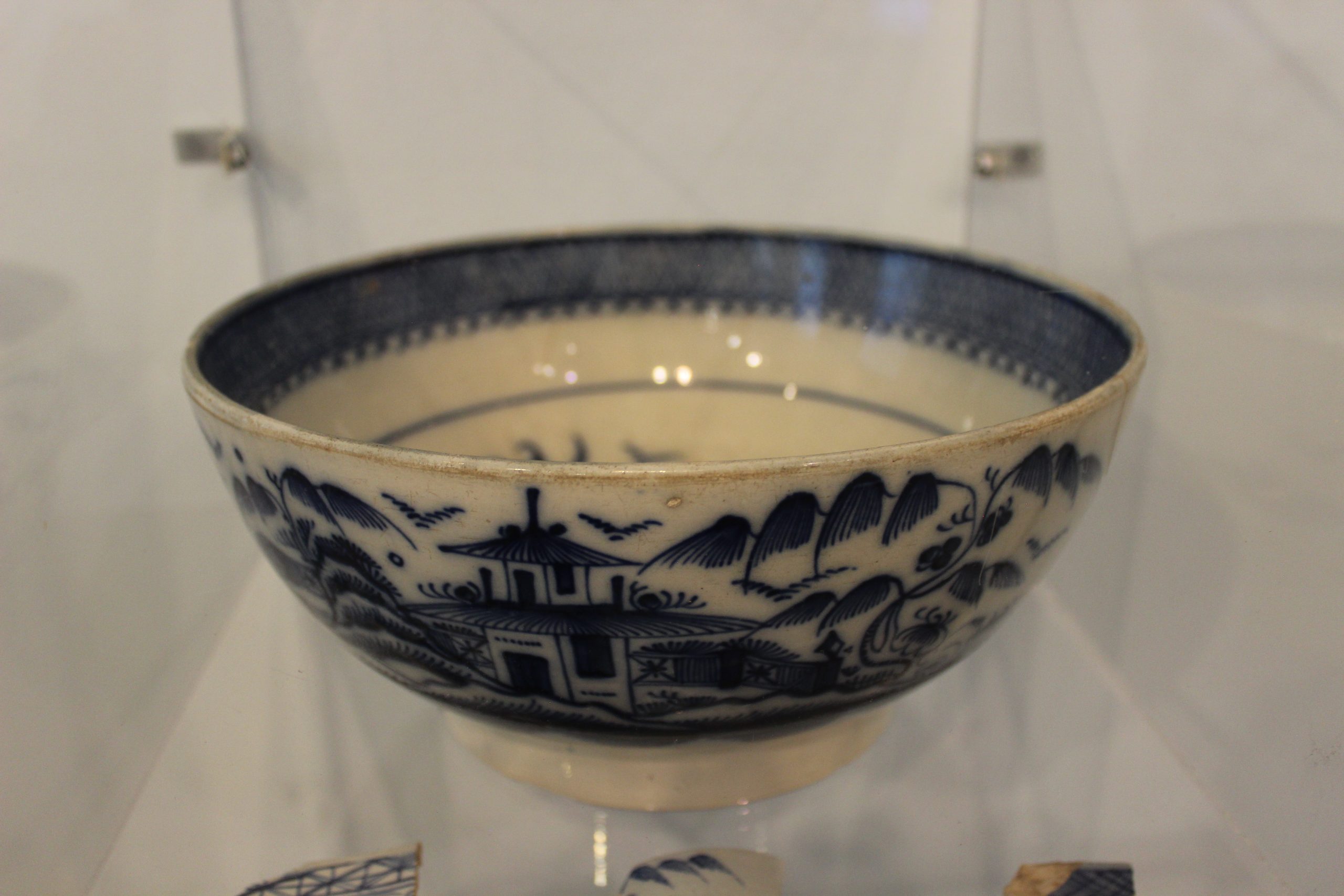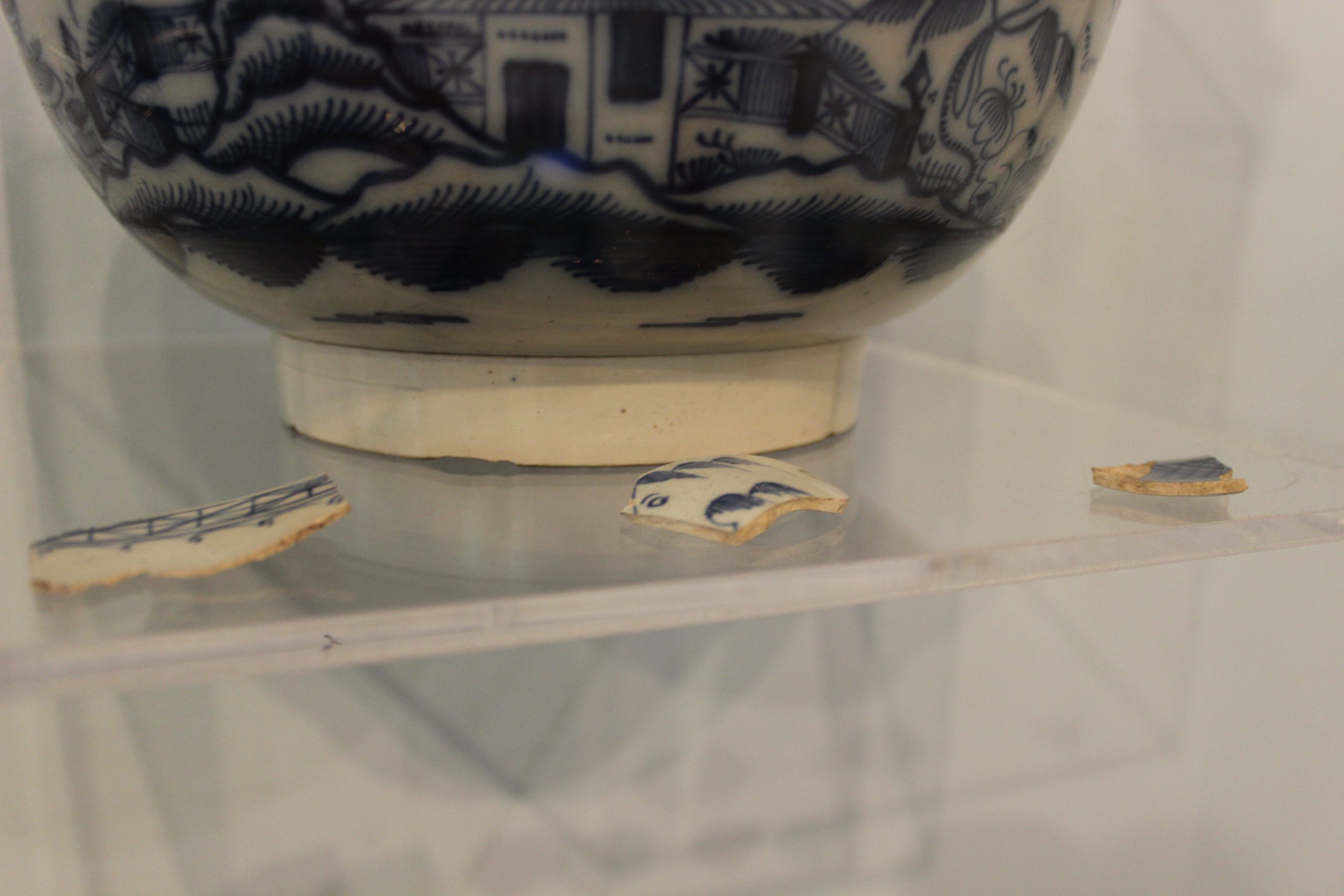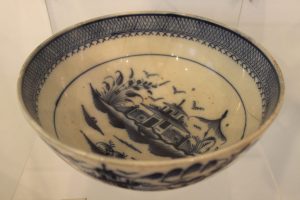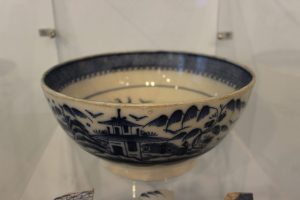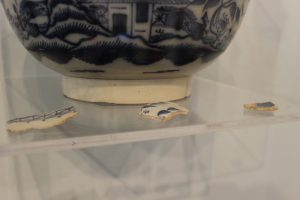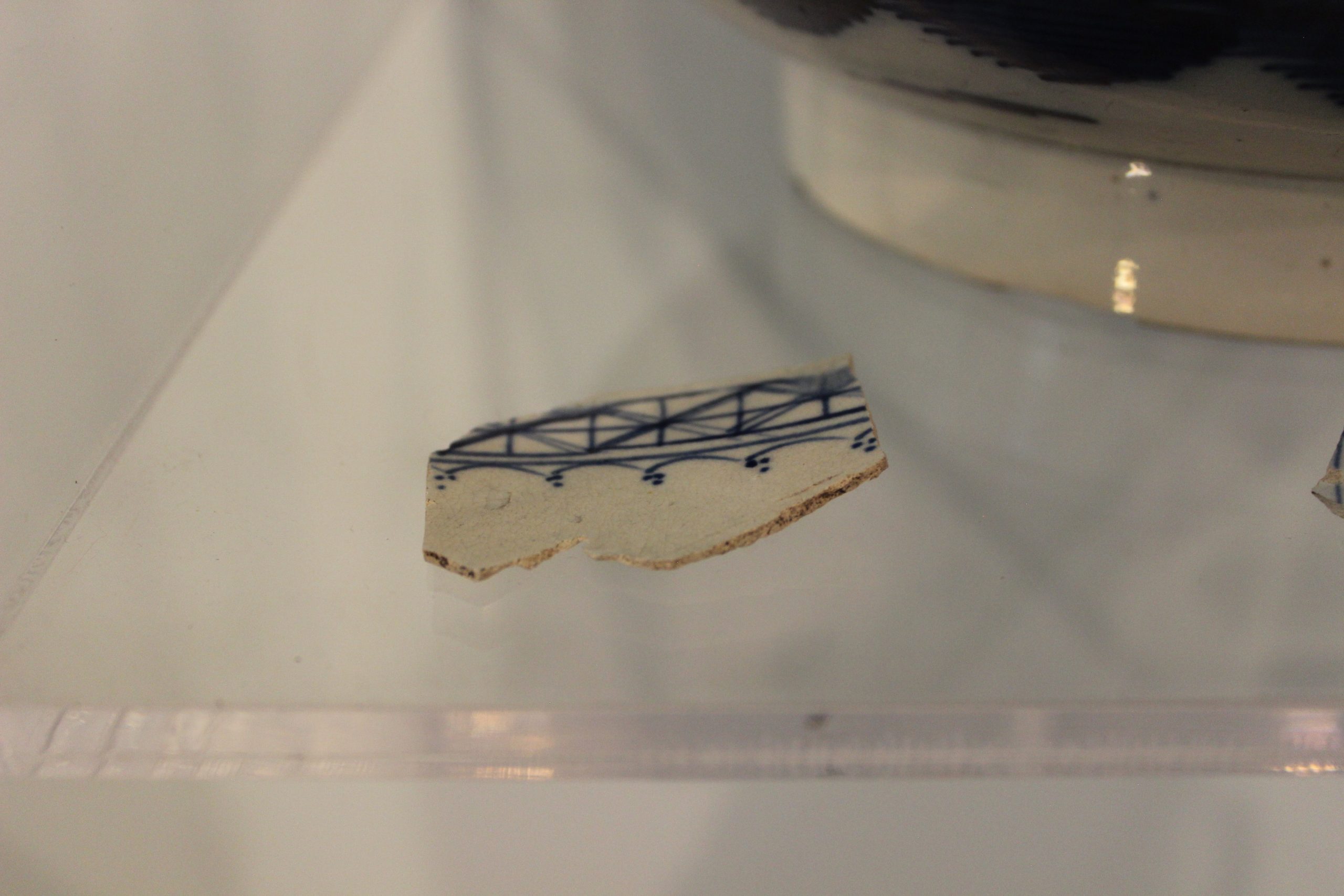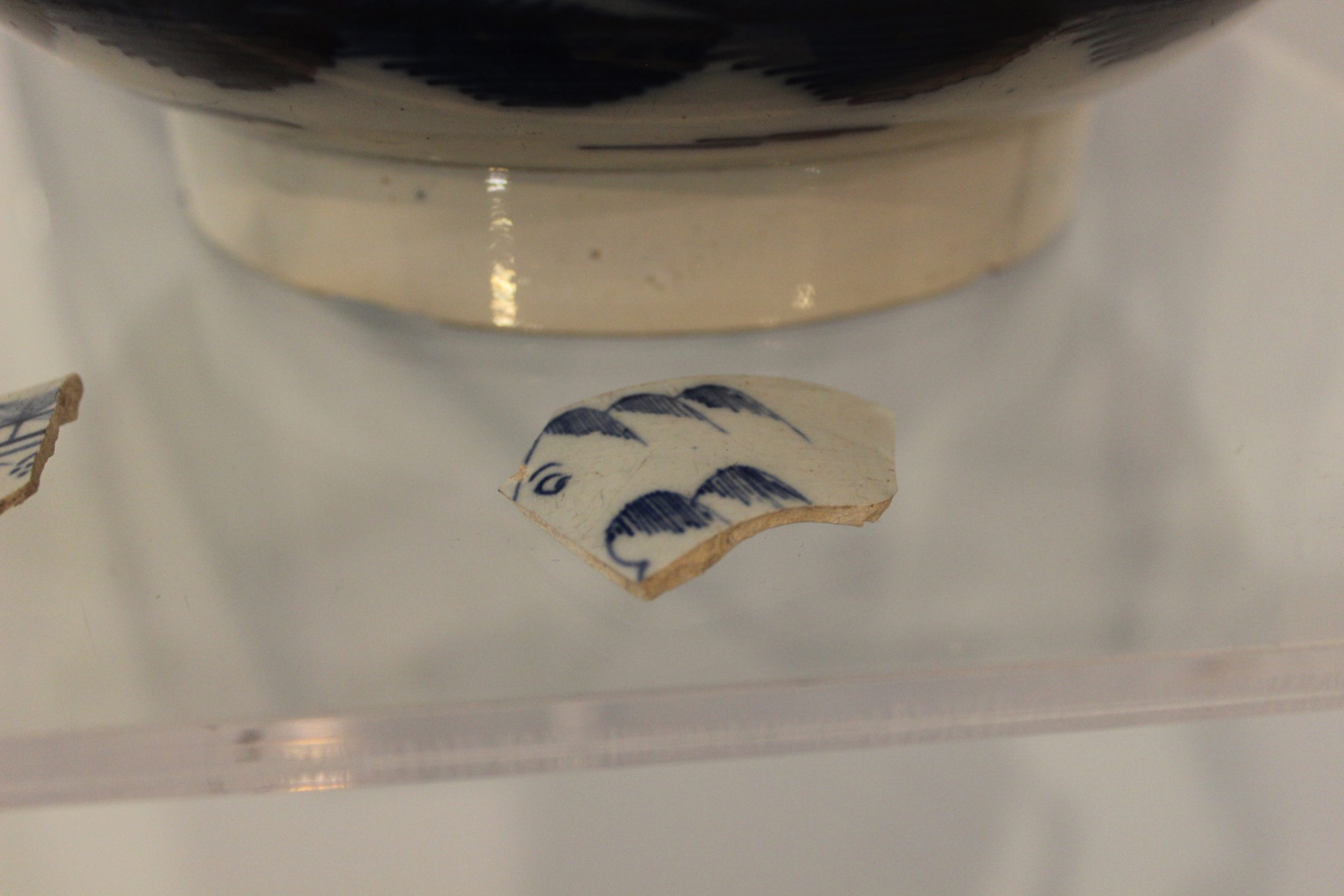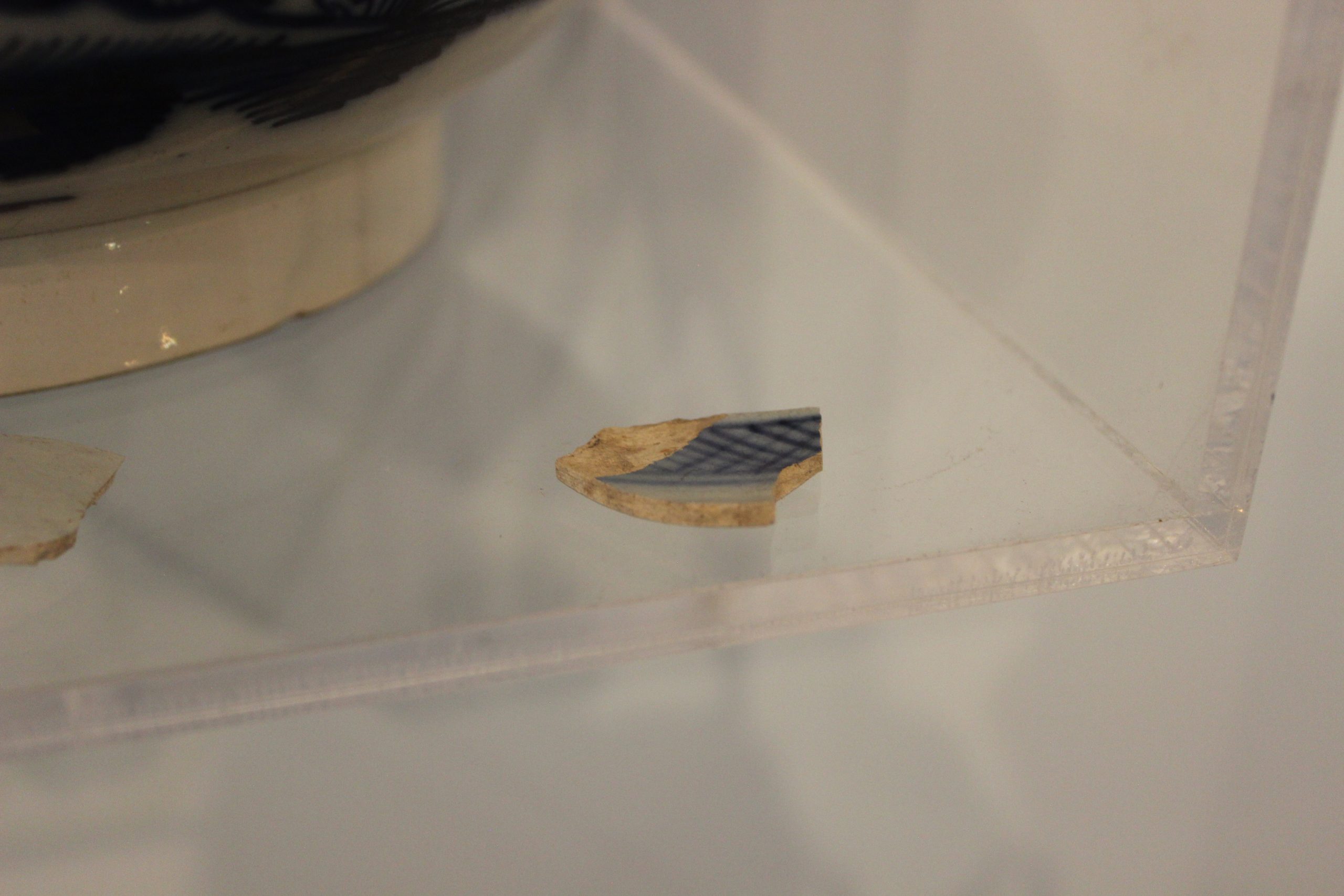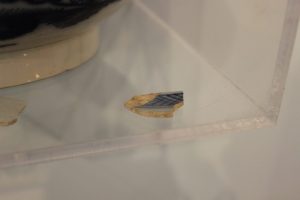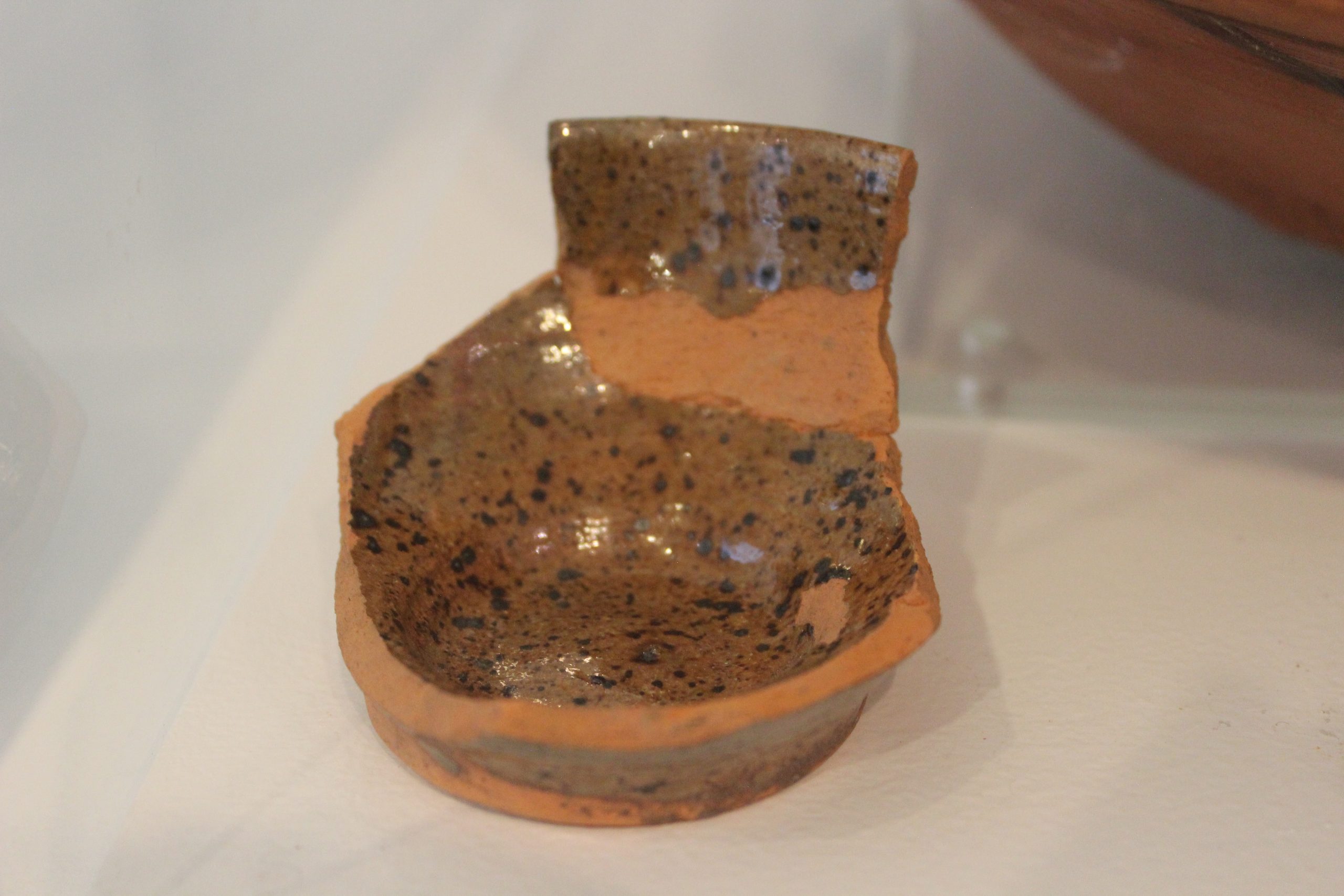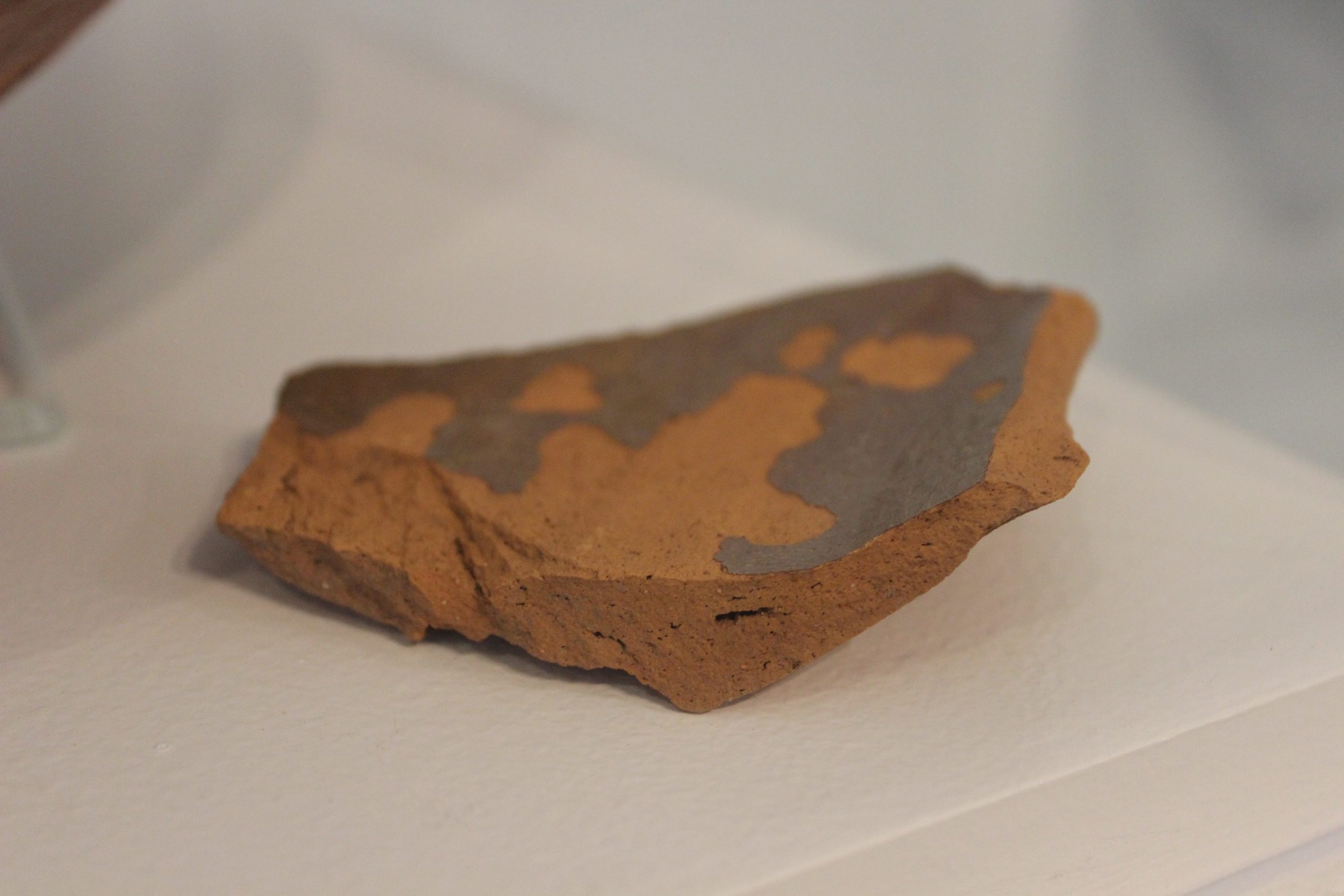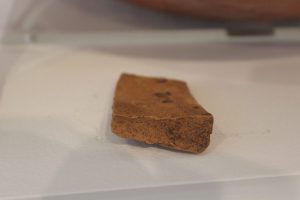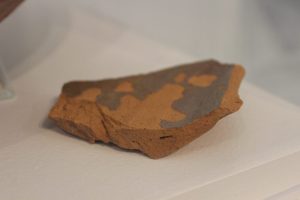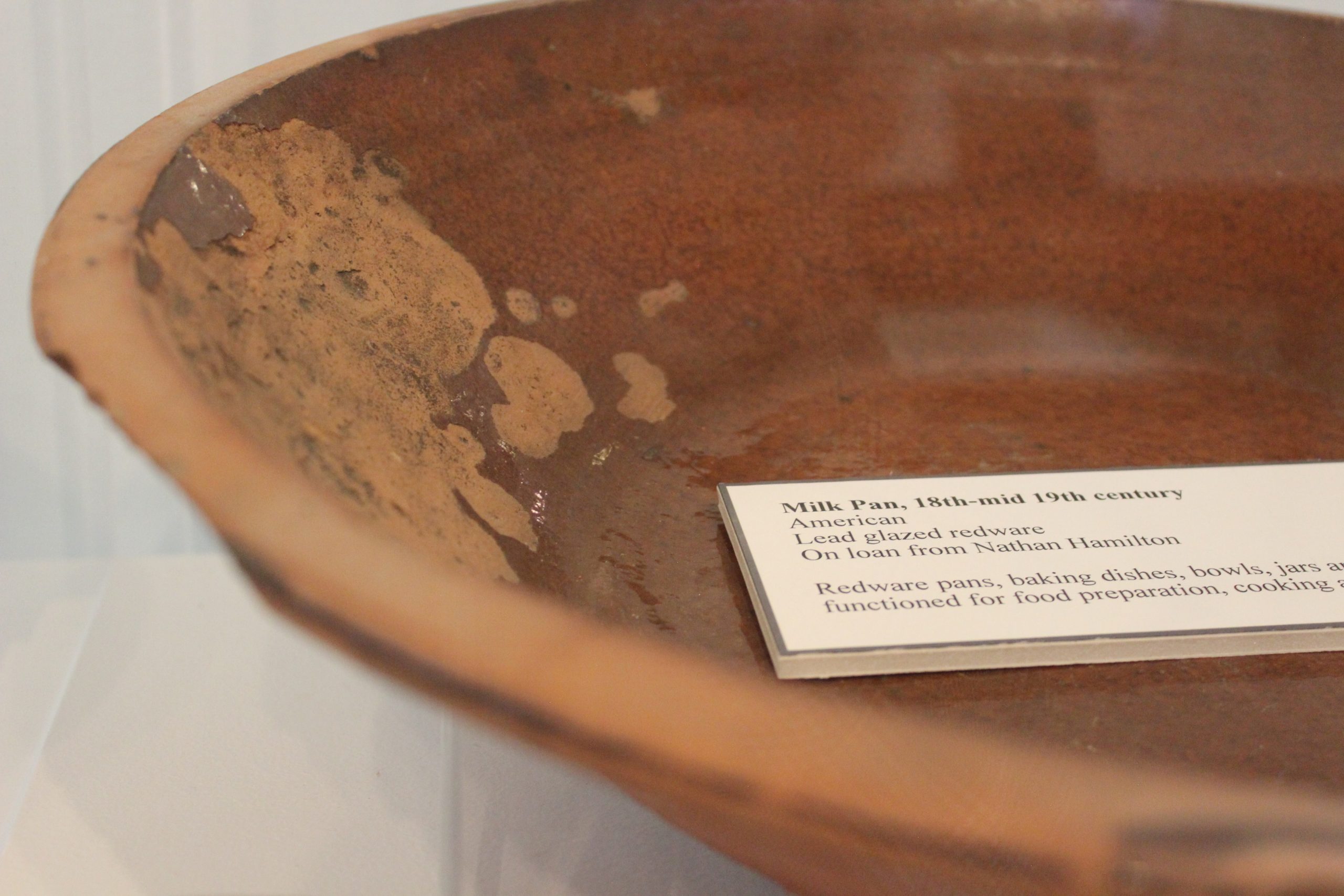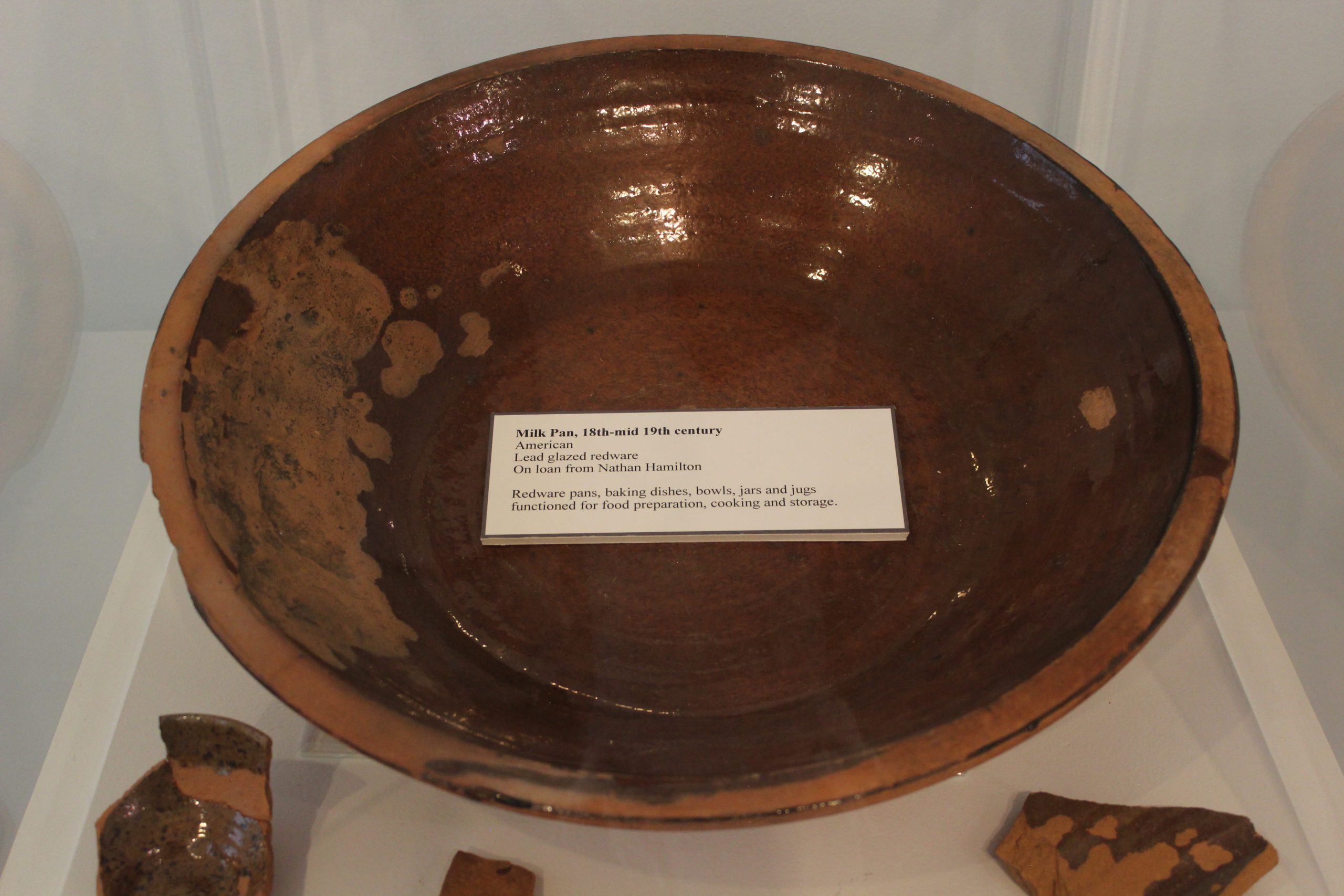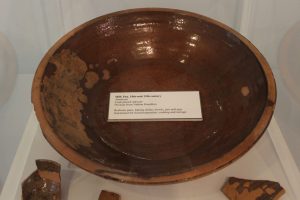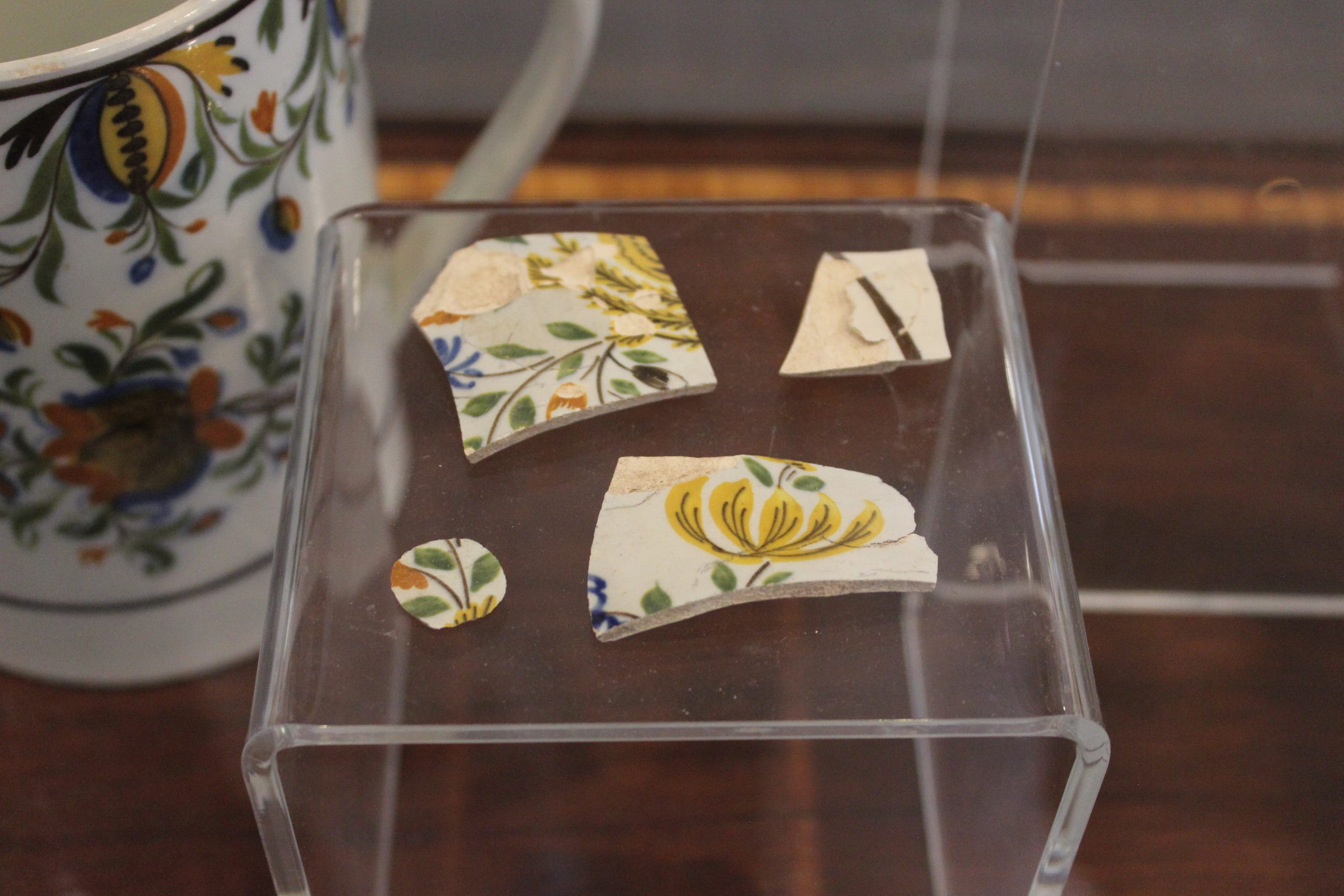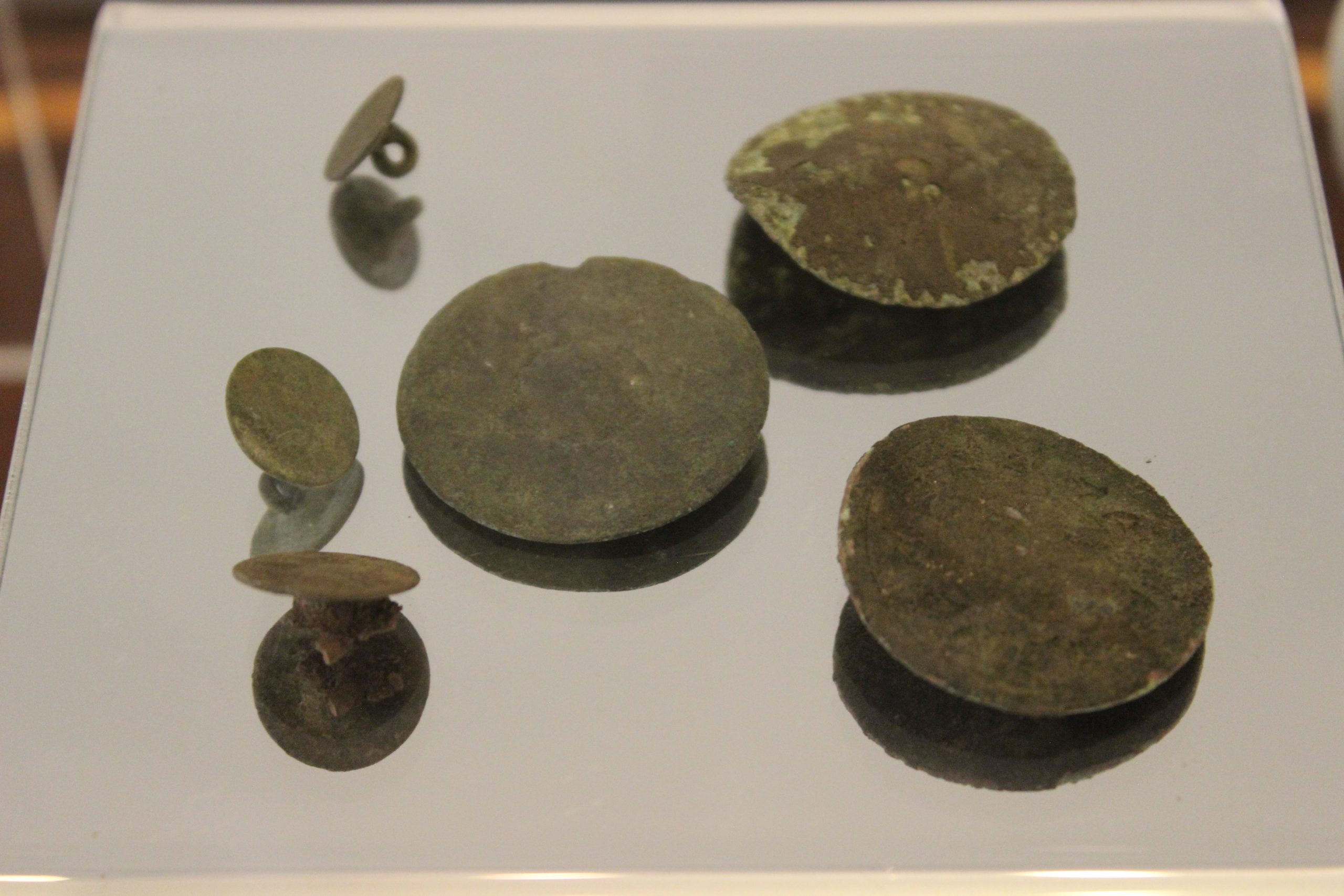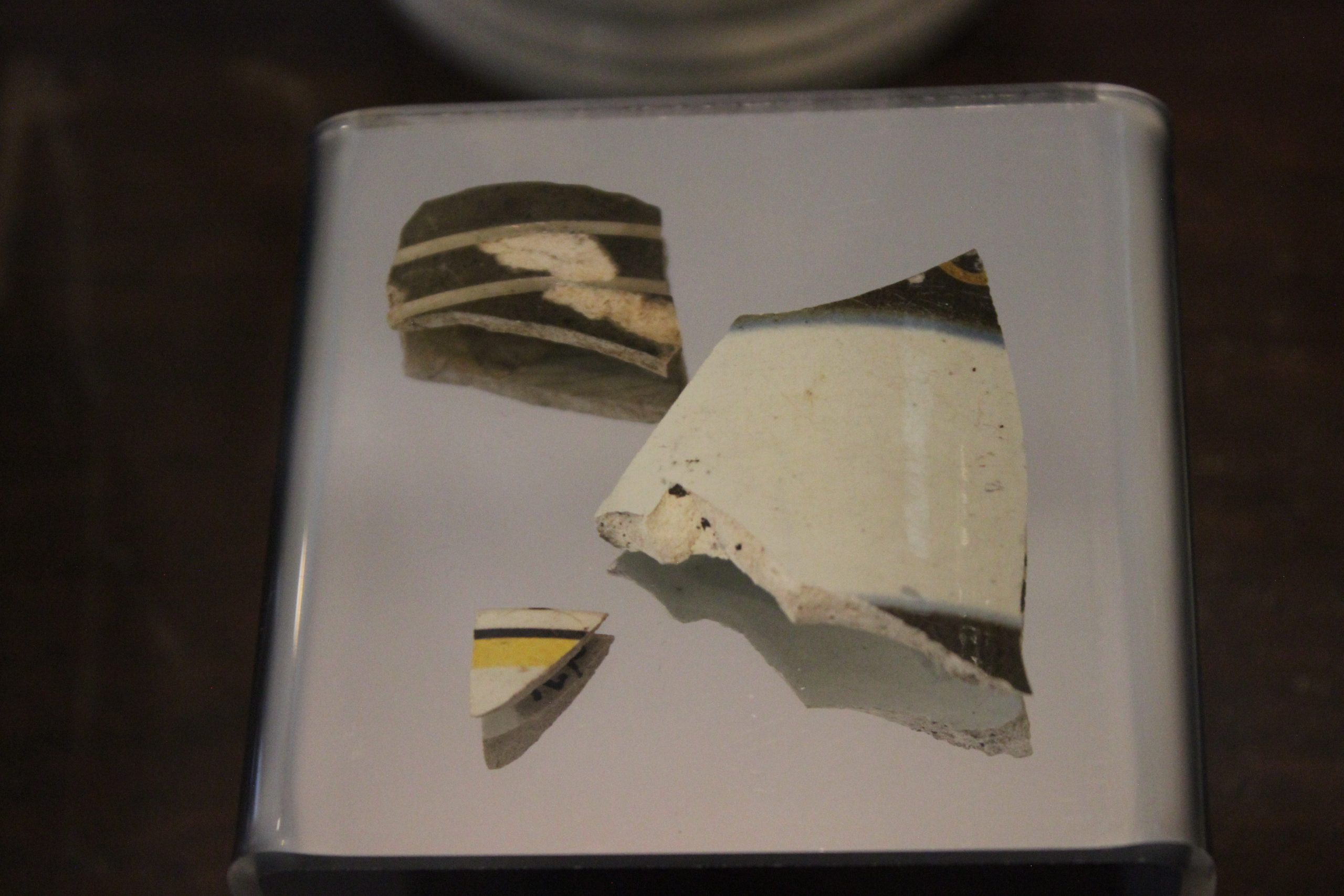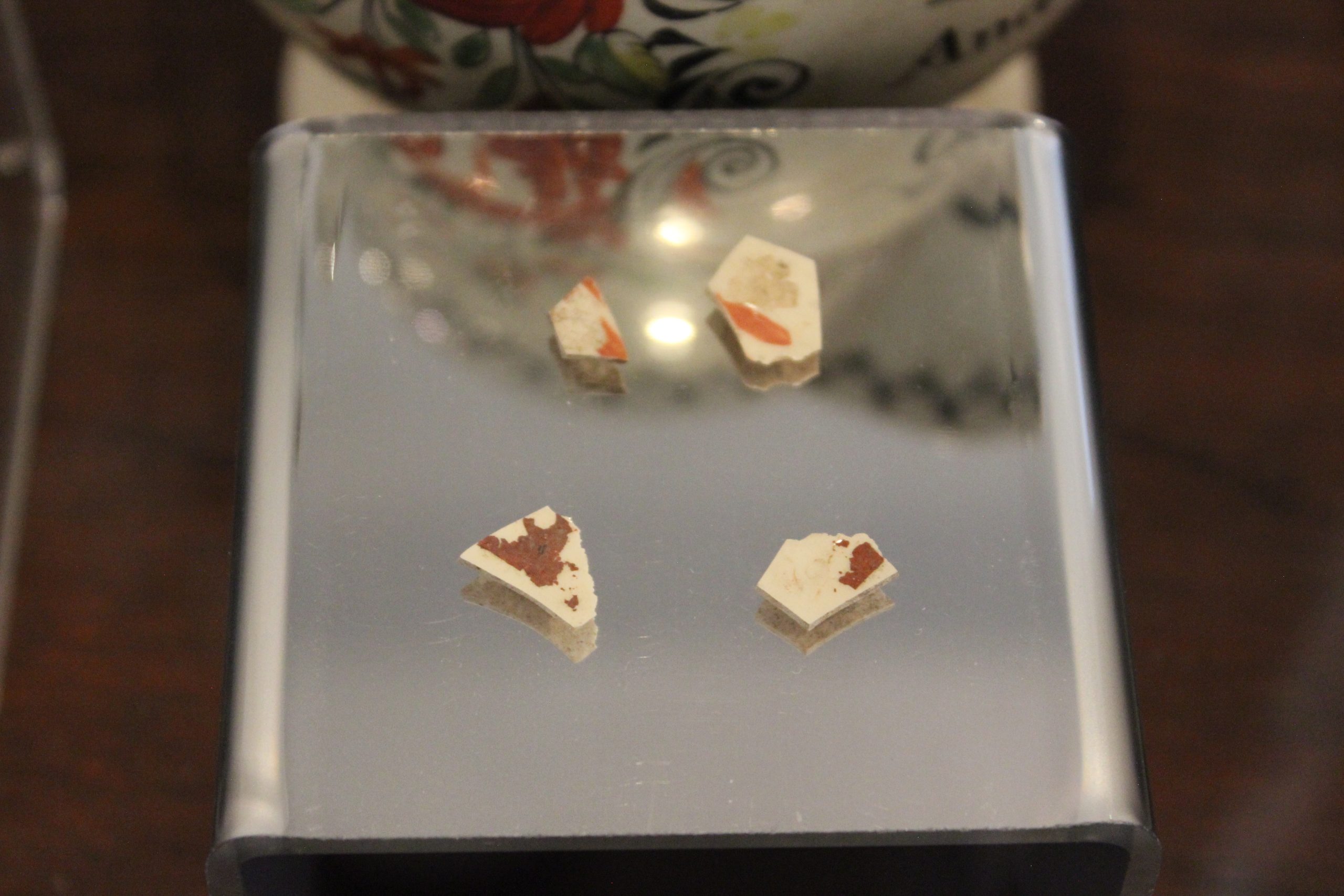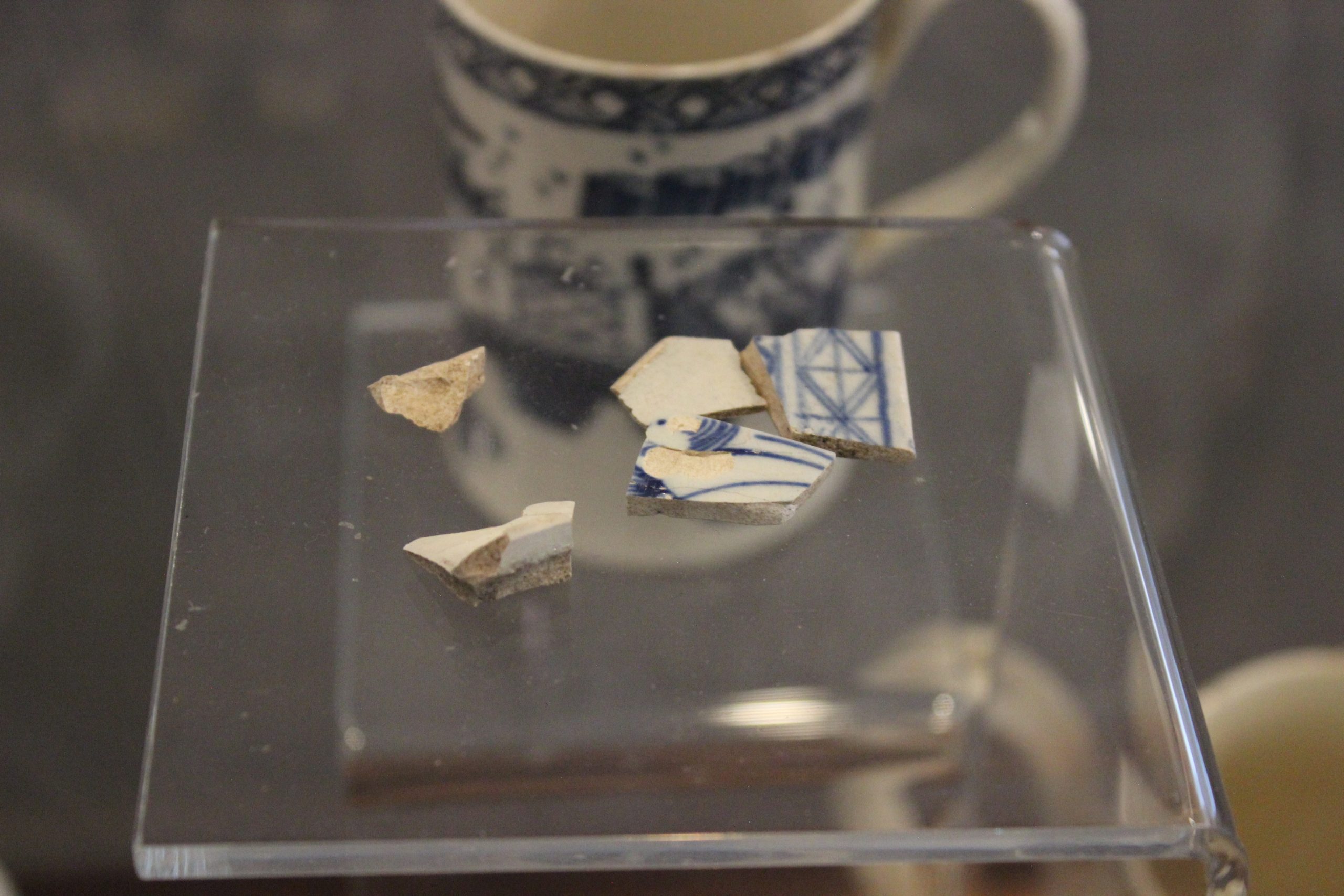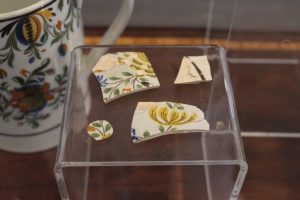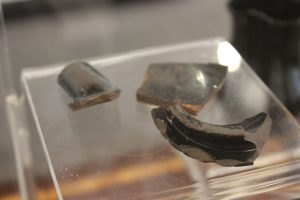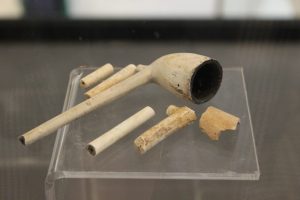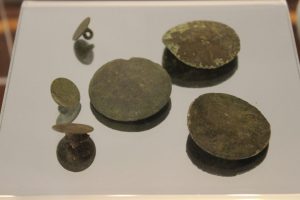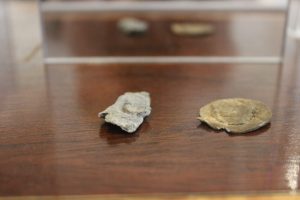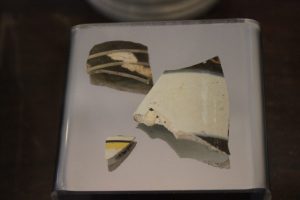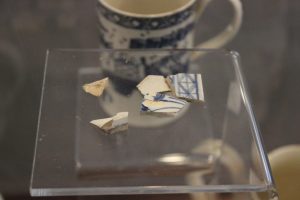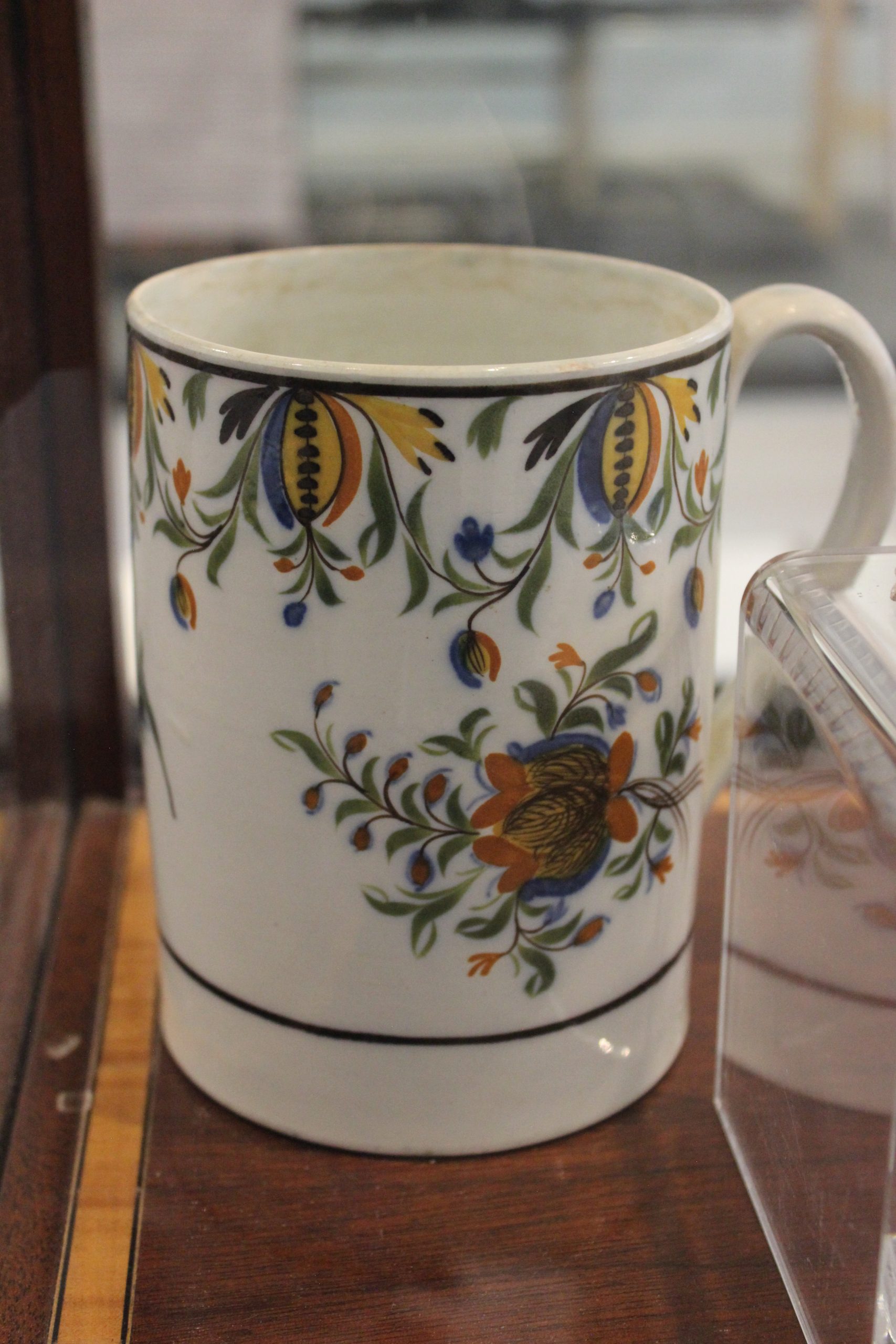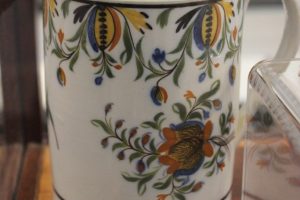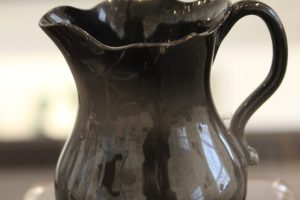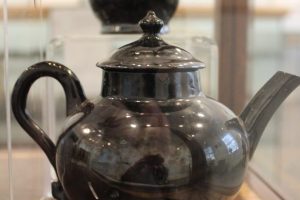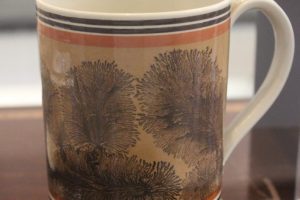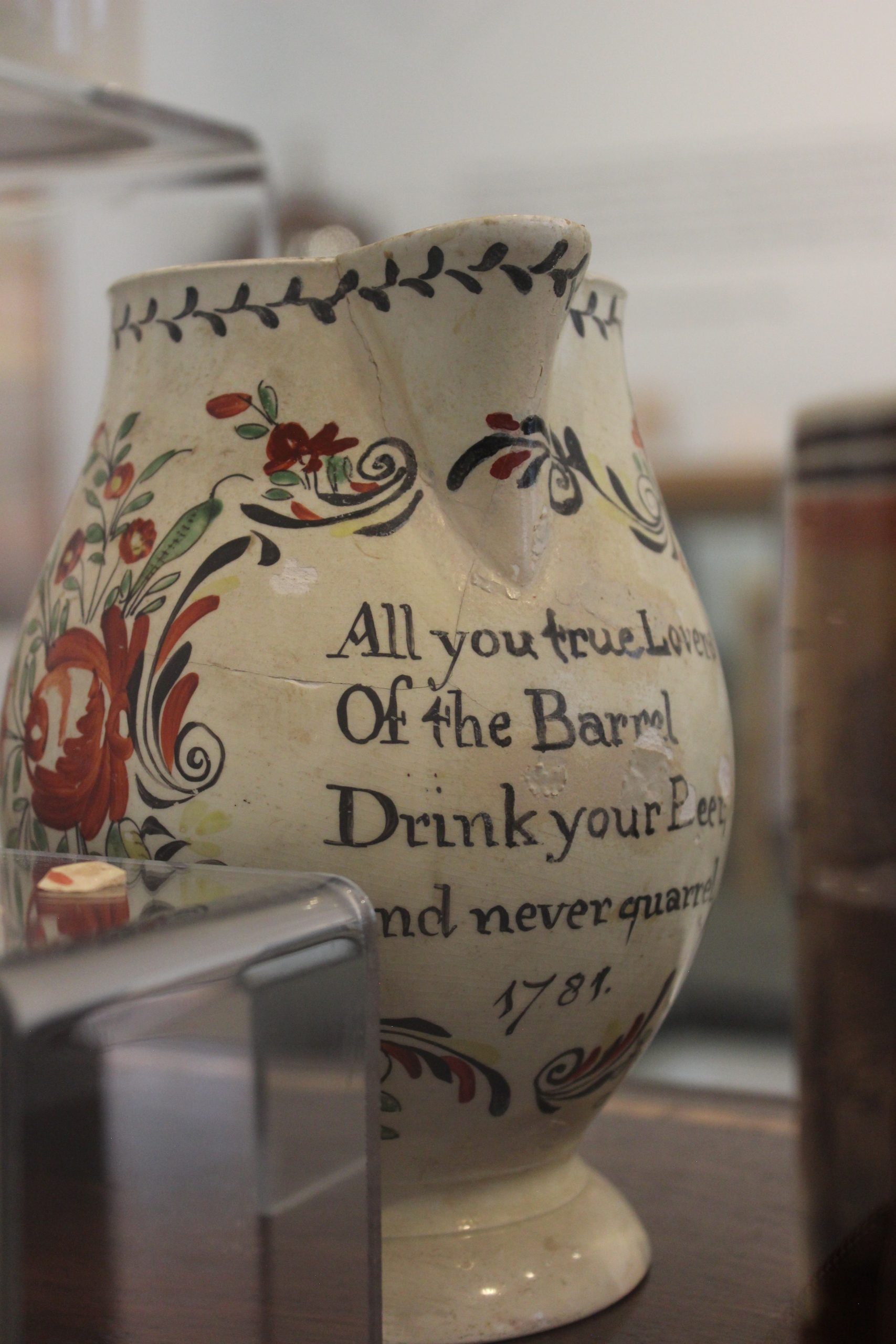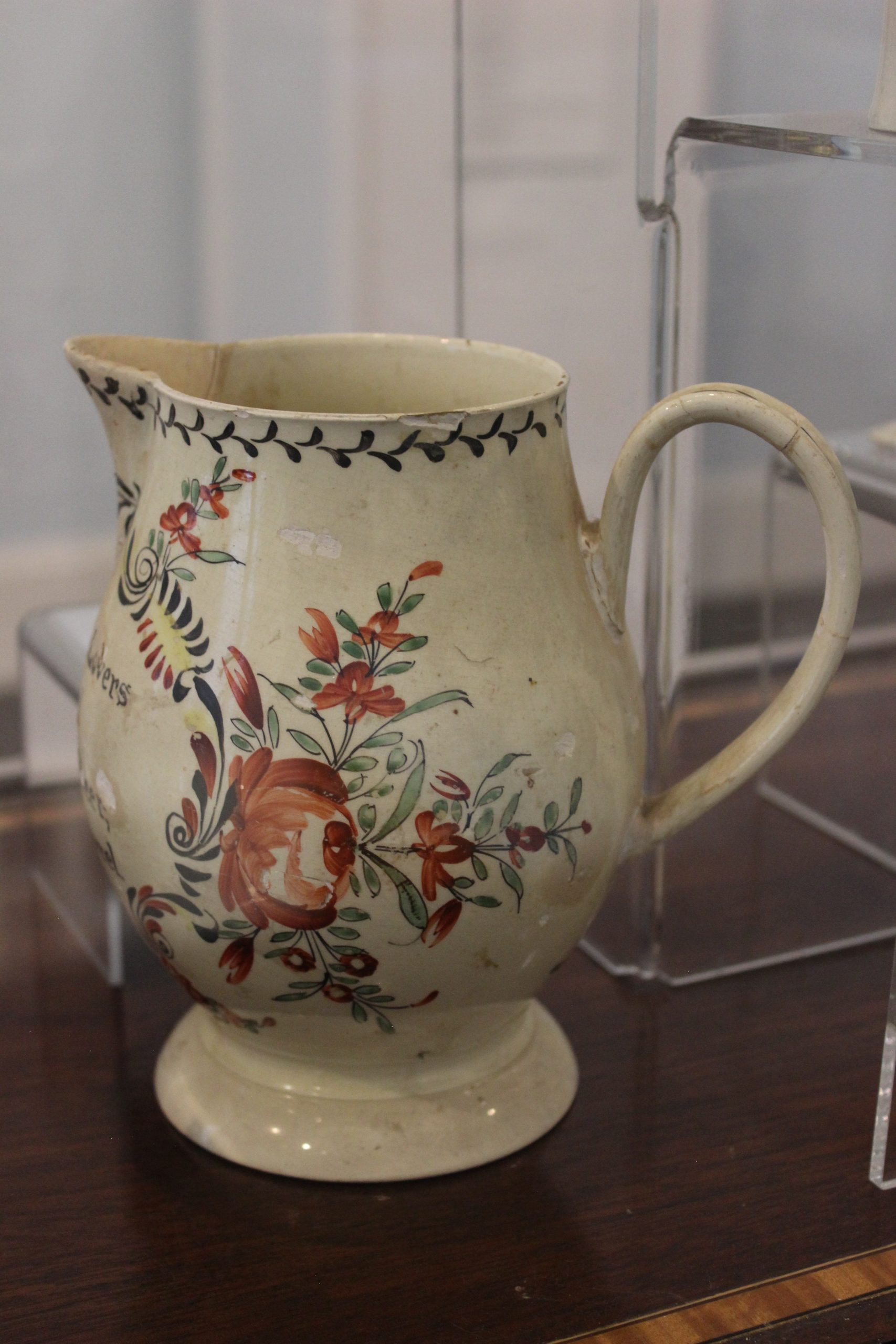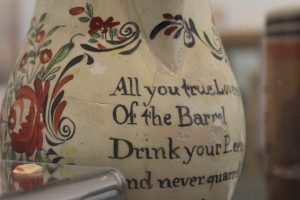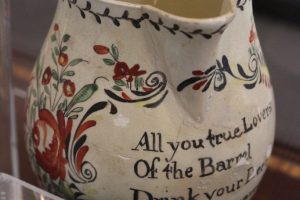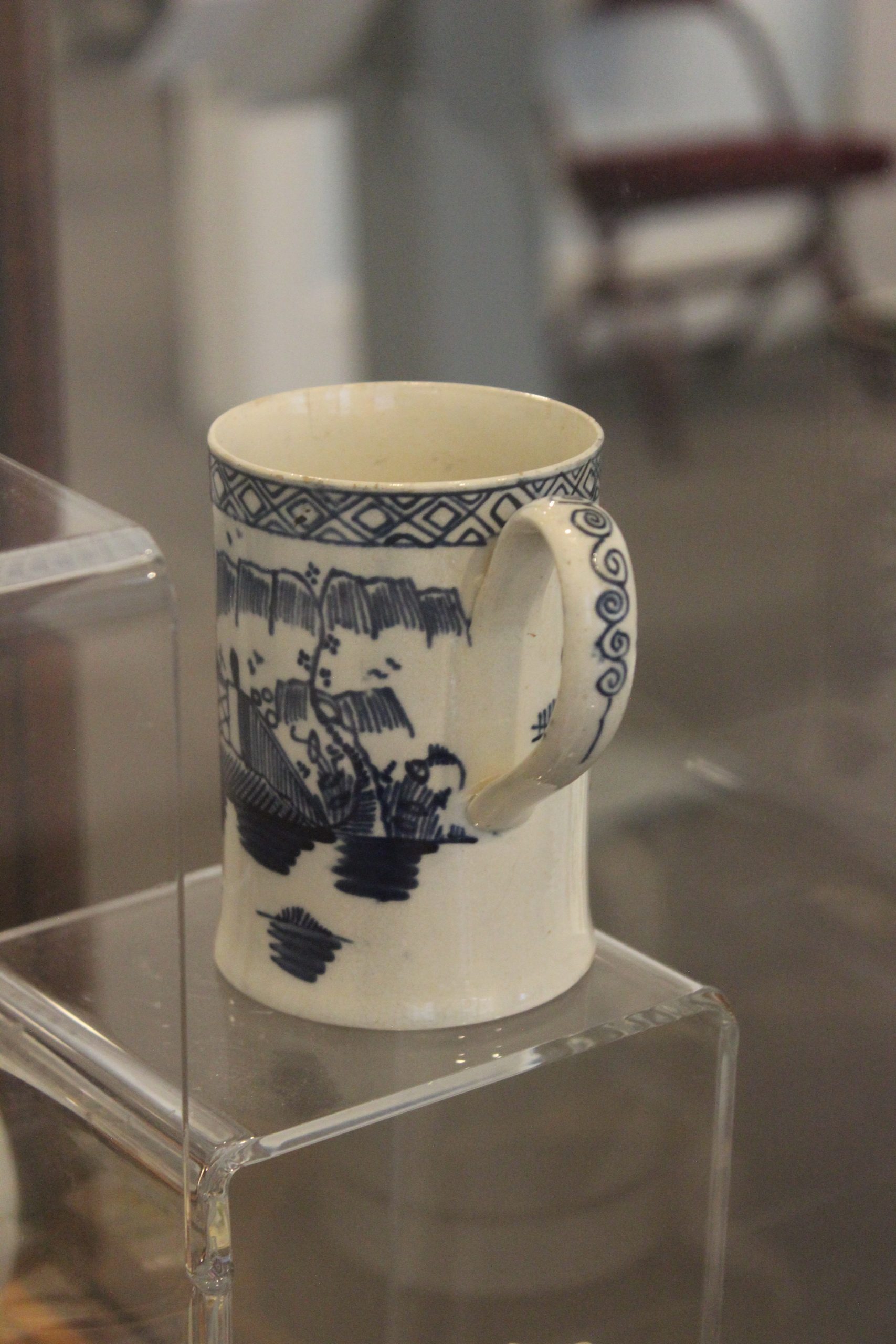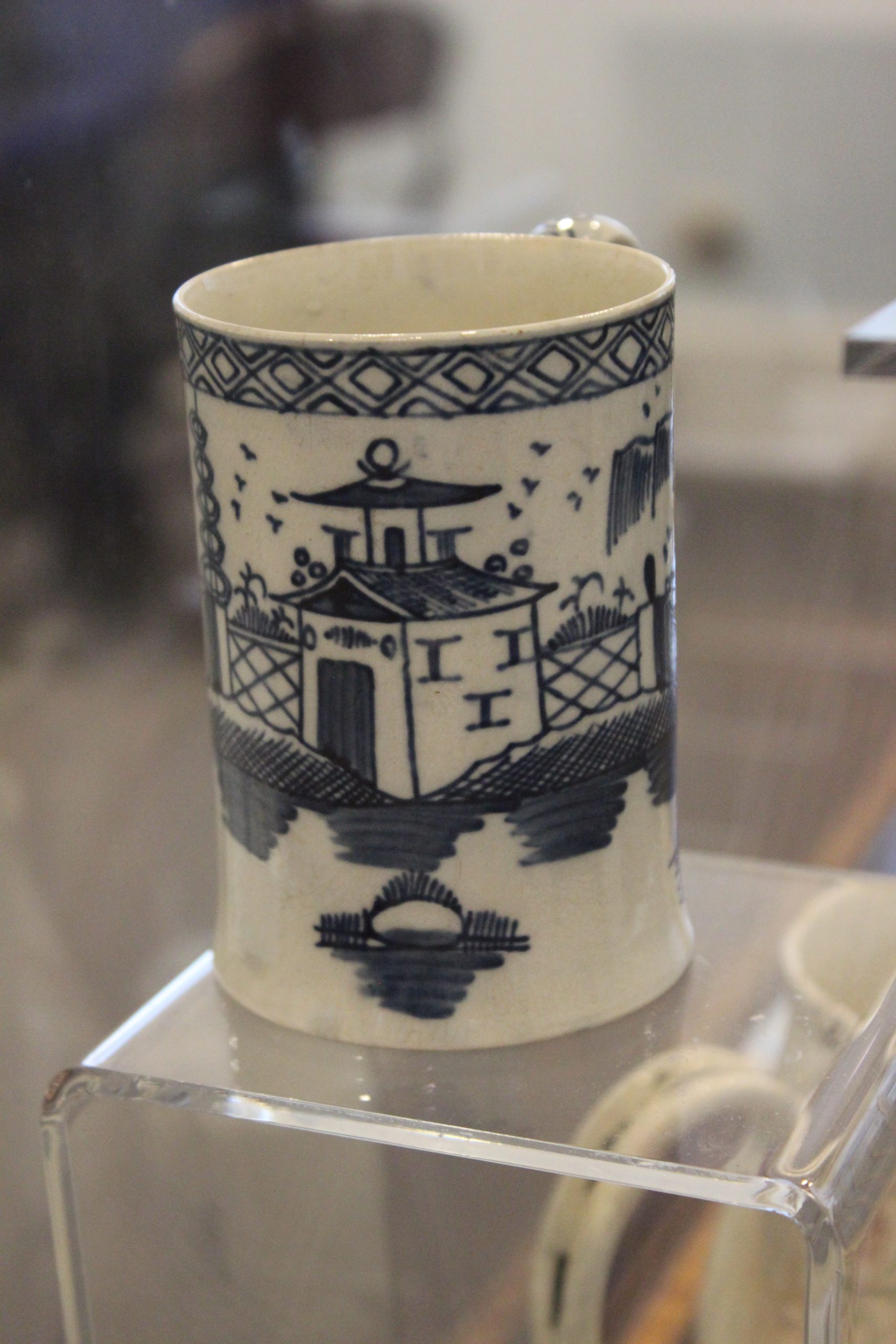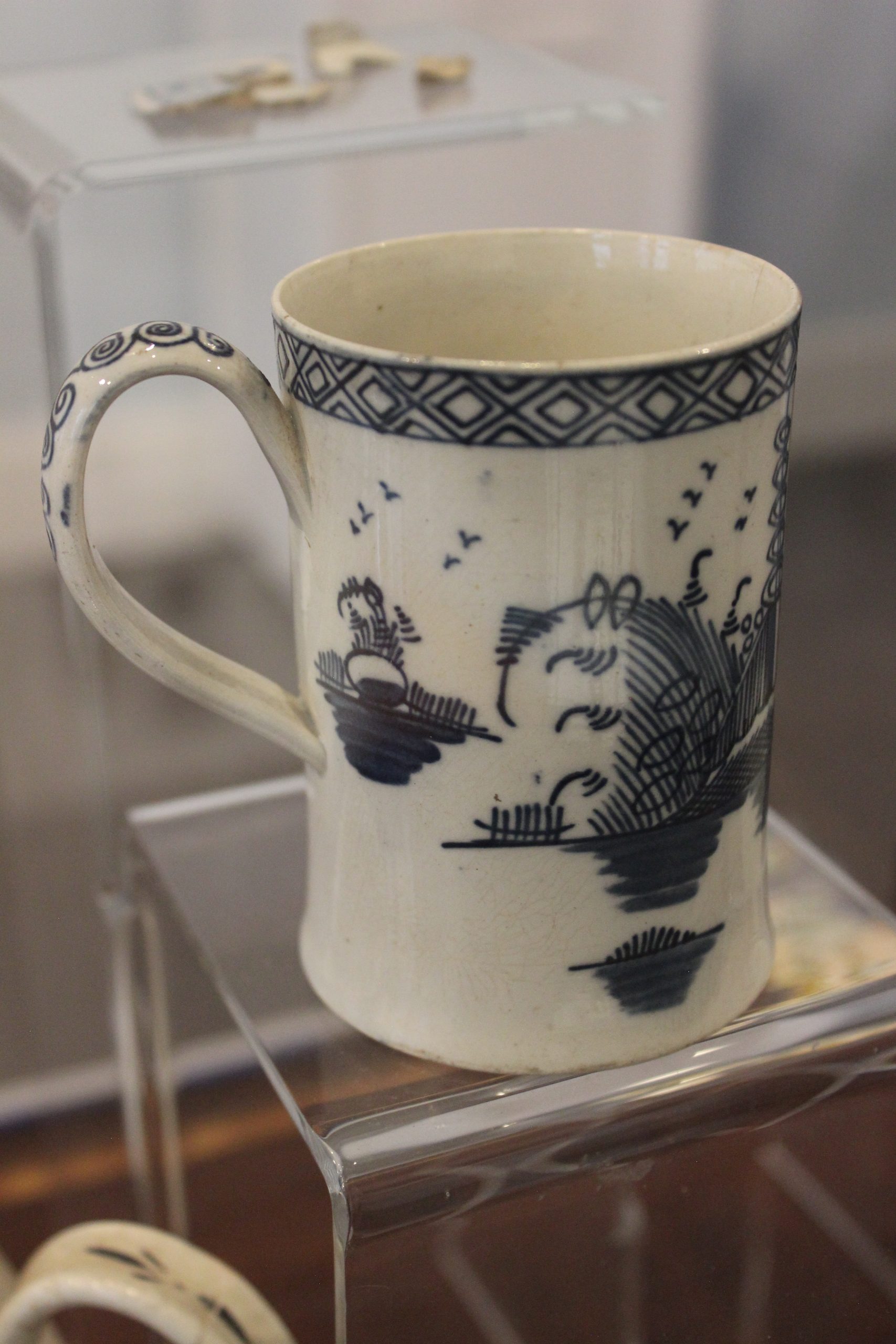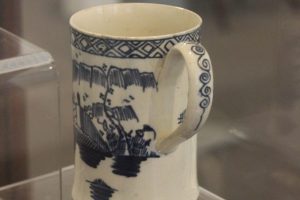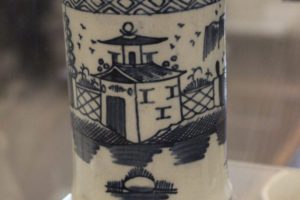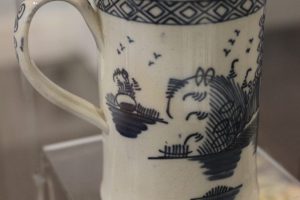
Previously, Museum’s second-floor galleries explored the Brick Store Museum’s own collecting history and how museums can change with the help of two local archaeology projects now underway to help expand our community’s history.
The concept of American museums held roots in European precedent: collecting objects worthy of study by the elite class who could afford to spend time exploring their world. Showing off collected items fueled public fervor for museums. This means that museums developed through a colonial mindset; a perspective of the majority community (mostly of European descent) that often ignored or misunderstood the stories of Black and Indigenous peoples when creating a national “origin story.”
In the first section of this online recreation, visitors will encounter typical donations to the Brick Store Museum in its first years of existence (1936 onward). Real newspaper clippings from the time show Museum announcements of what was donated, who it came from, and sometimes, why it was important to collect.

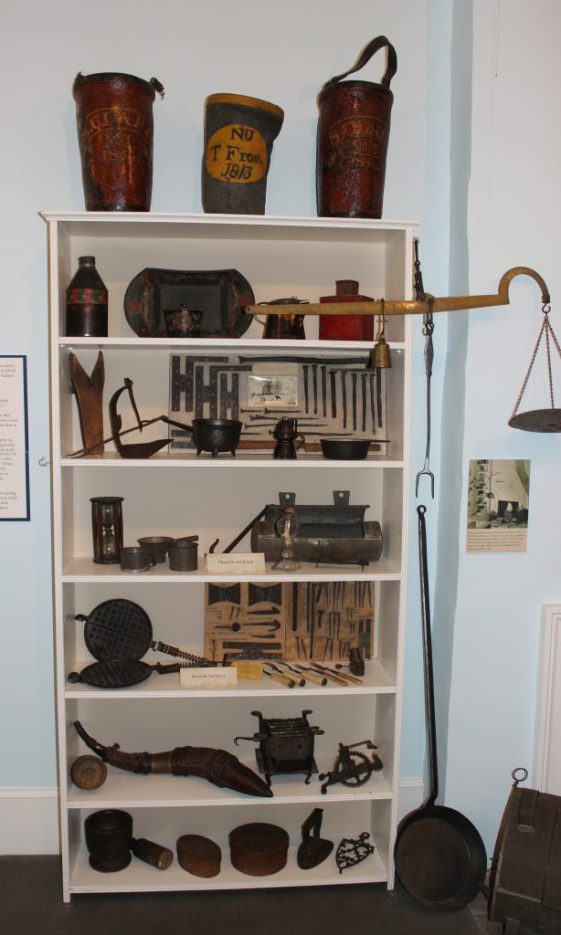
The Brick Store Entrance Hall To the left is an image of one of the earliest exhibits at the Brick Store Museum. It was later made into a postcard that described it as the "Entrance Hall" of the Museum. On the right, you can see a modern re-creation using many of the same objects that were displayed in the original 1939 exhibit.


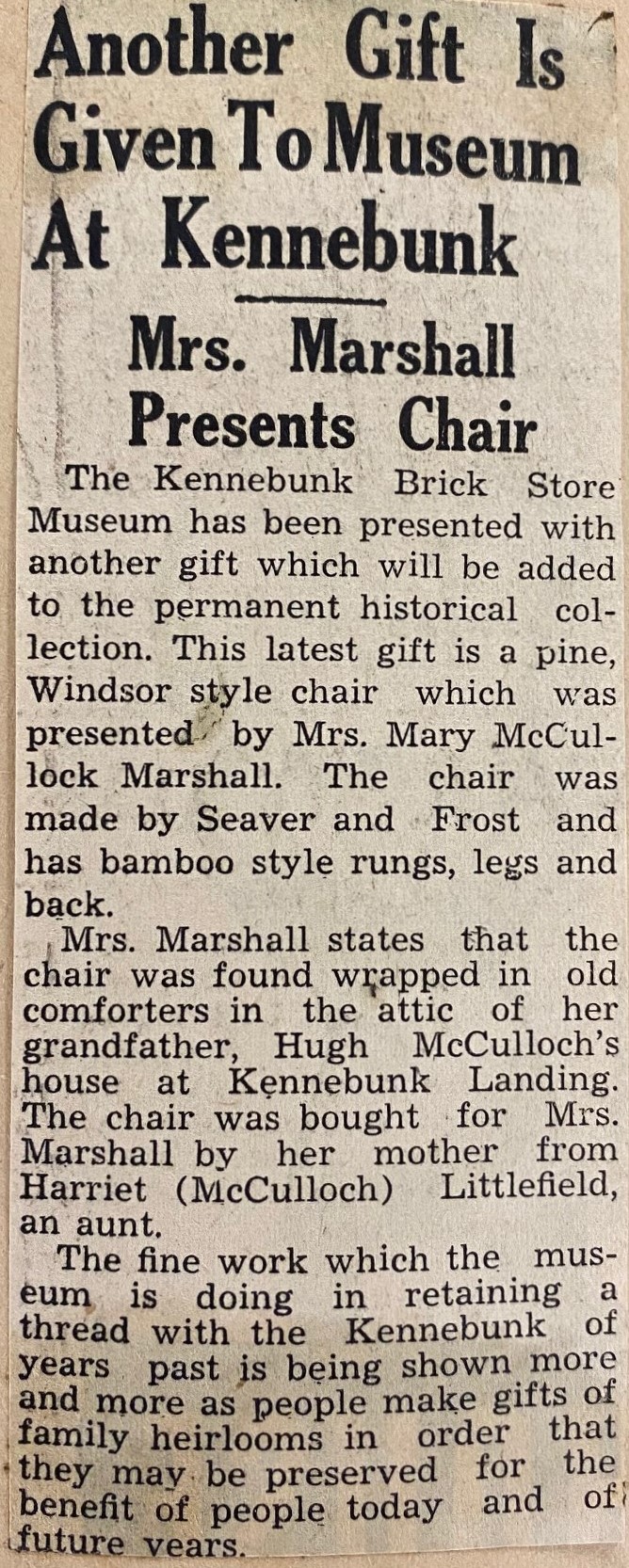

Windsor Chair from McCullosh House, c. 1800-1803
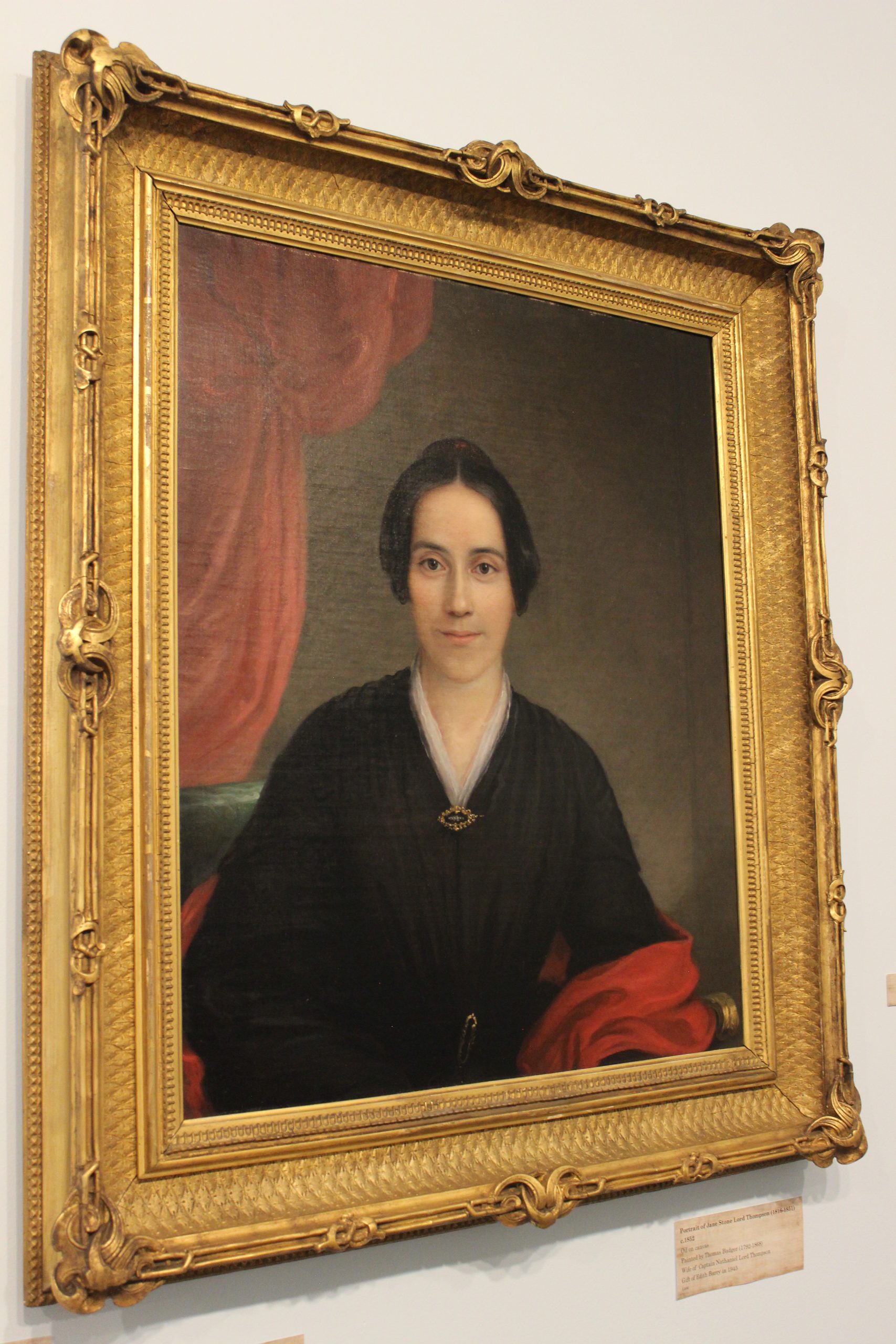
Portrait of Jane Stone Lord Thompson (1816-1851)c.1852 Oil on canvasPainted by Thomas BadgerWife of Captain Nathan Lord ThompsonGift of Edith Barry in 1945
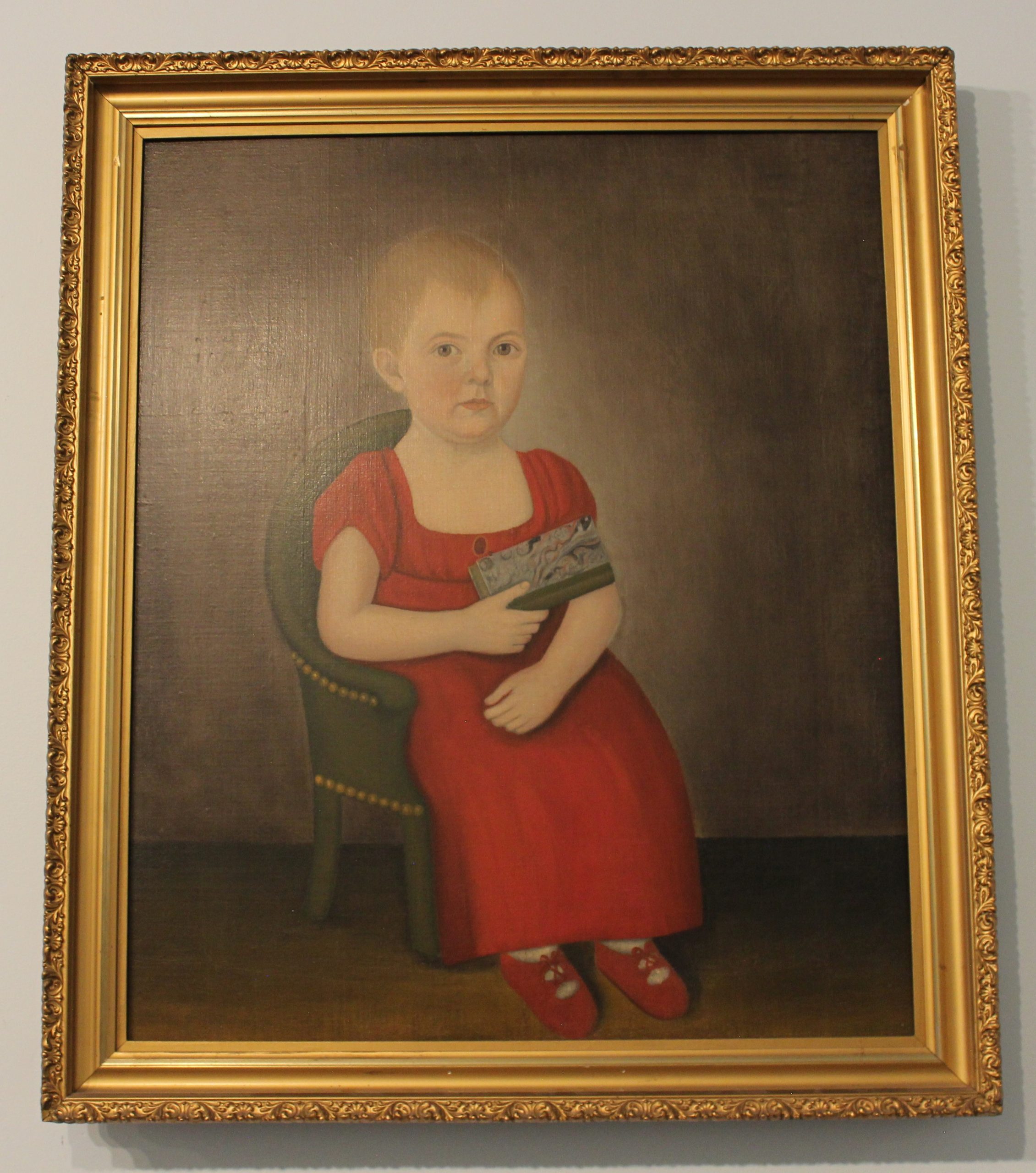
Portrait of Abigail Wallingford (1806-1826)1808 Oil on canvasPainted by John Brewster, JrEstate of William E. Barry
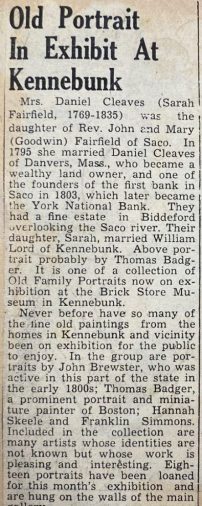
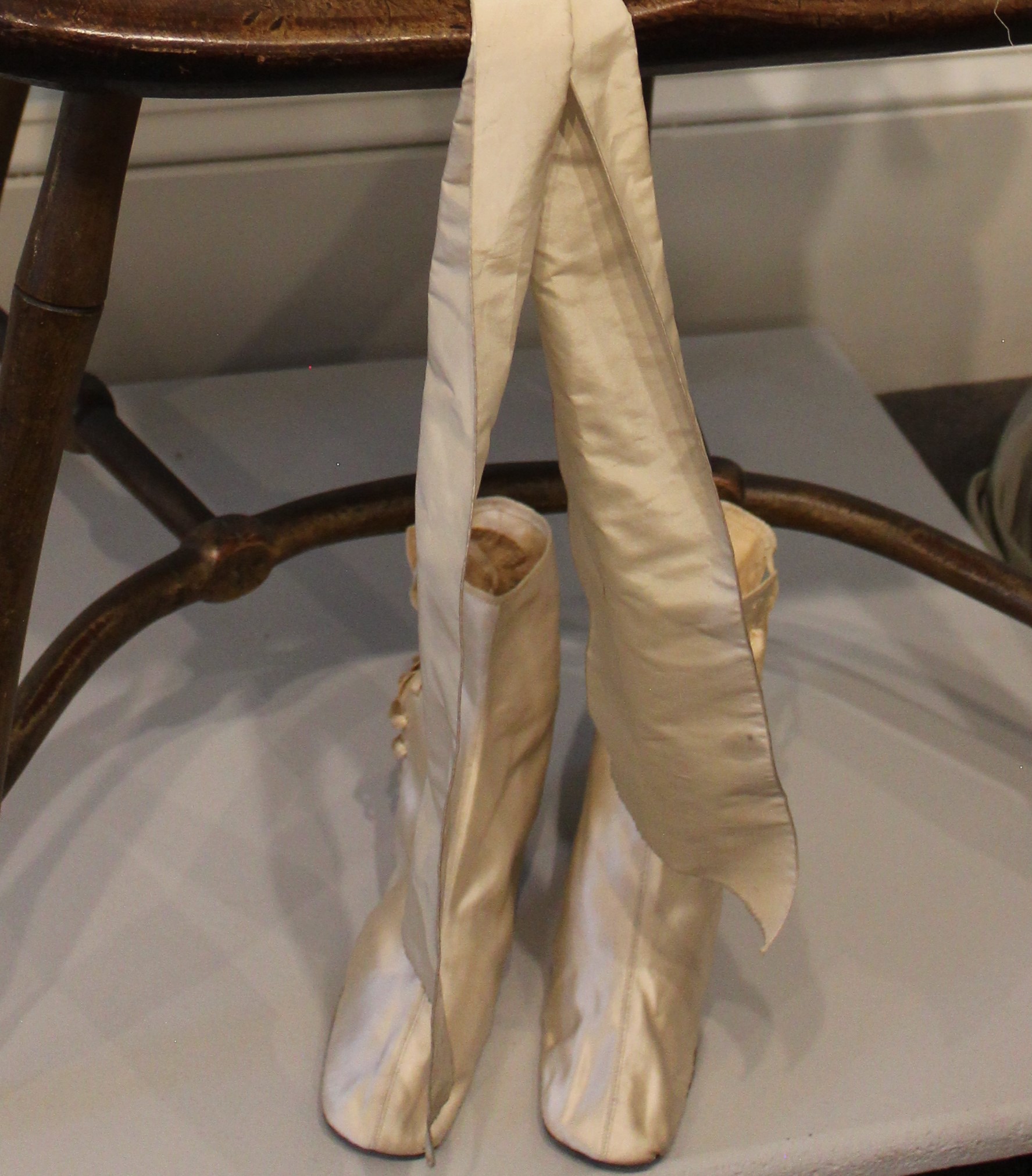
Wedding Slippers c. 1800-1803Faille, lace, and satinDonated by Mr. & Mrs. Albert Lippitt M. Gross in 1948

Wedding Bonnetc. 1800-1803Faille, lace, and satinDonated by Mr. & Mrs. Albert Lippitt M. Gross in 1948


Wedding Dressc. 1800-1803Faille, lace, and satinDonated by Mr. & Mrs. Albert Lippitt M. Gross in 1948

This was worn by Mary Bradford Smith on her wedding day, she is a descendant of Governor William Bradford (1590-1657) a founder and longtime governor of the Plymouth Colony settlement. Bradford was among the passengers on the Mayflower's trans-Atlantic journey, and be signed the Mayflower Compact upon arriving in Massachusetts in 1620.

Splints c.1860 Wood and canvas, donated by Dr. G. W. Bourne in 1942 These original Civil War era splints was patented and manufactured by Dr. Almiron M. Day of Bennington, Vermont. Dr. Day's splints were used in the army hospitals during the Civil War, as well as hospitals all over New England. Double Incline Leg Splint Used to treat simple or compound fractures of the leg not deemed necessary for amputation. Canvas straps would secure the leg to the incline, with an adjustable footrest. These splints belong to Dr. Lemuel Richards (1809-1887) who lived on the corner of Green and Elm Street.
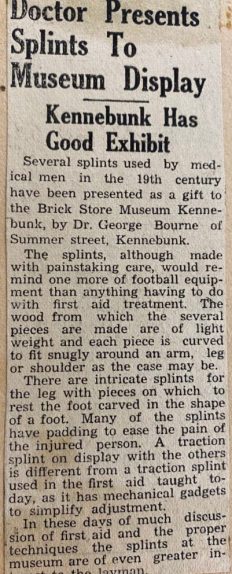
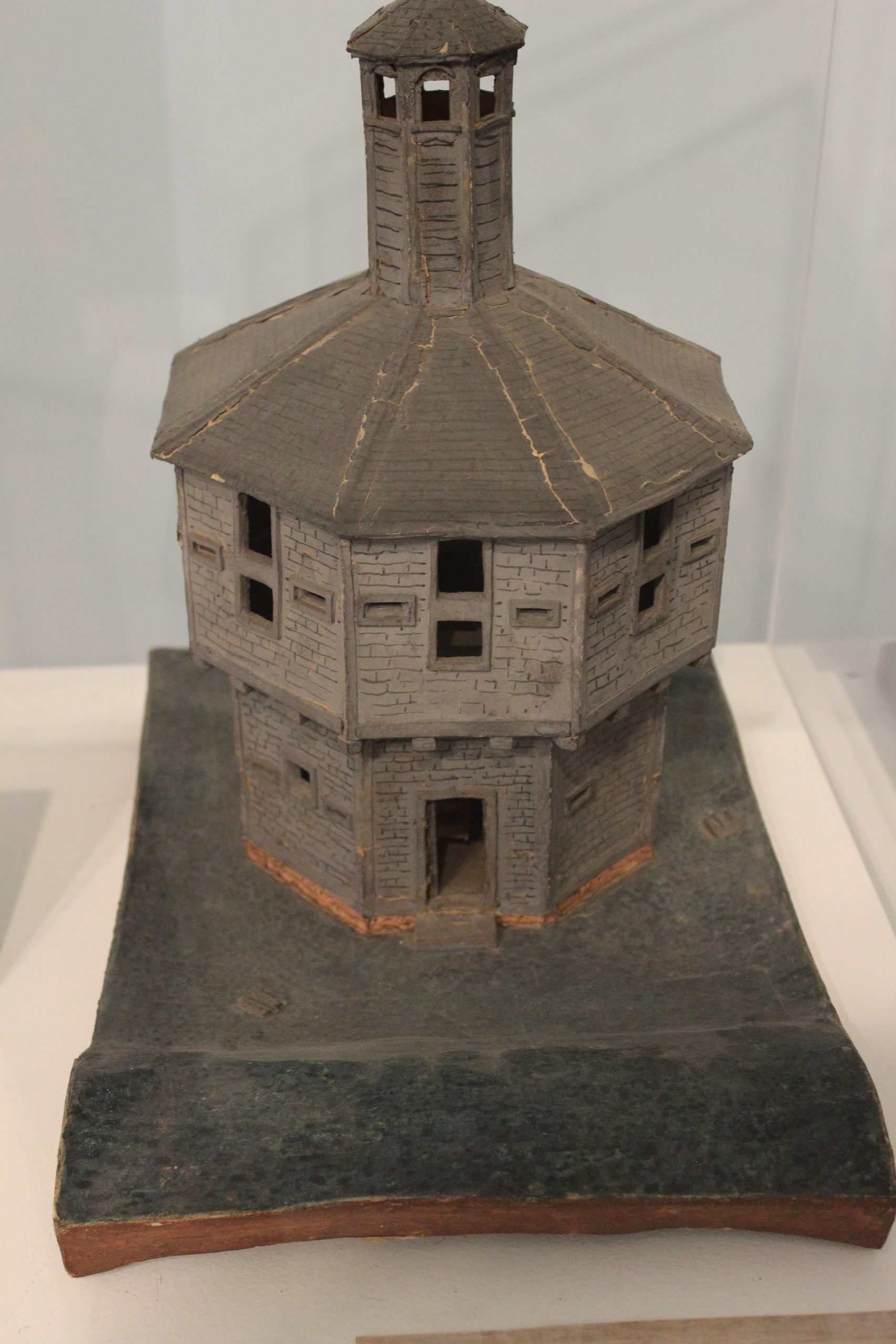

Above: Portrait of Sarah Fairfield Cleaves (1769-1835) c.1835Oil on ivoryMother of Sarah Cleaves Lord, the wife of William Lord who built the Brick StoreEstate of Edith Barry
To the left: Block House, Late 19th century
Papier mâché
Made by William Barry from the William Barry Estate
Model of Fort Edgecomb, built in 1808-1809A two story octagonal wooden blockhouse located on David Island in the Town of Edgecomb, Maine
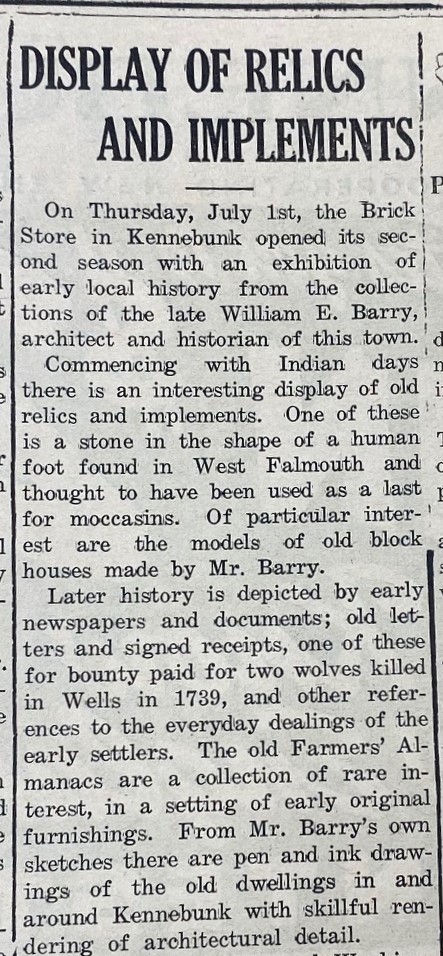
Portrait of Ship Tropic
c.1857
Reverse painting on glass
Attributed to P.C. Weyts (1799-1855)
Built in the Mark Pool Yard, Kennebunk Landing in 1855
Depicted passing Flushing, Holland
Gift of Channing Hare & Mountfort Coolidge in 1845
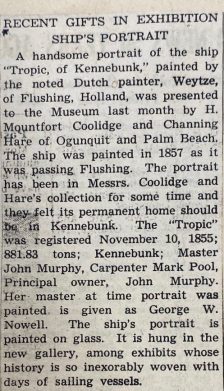
Scales from the Ocean National Bank of Kennebunk Previously used to weigh gold
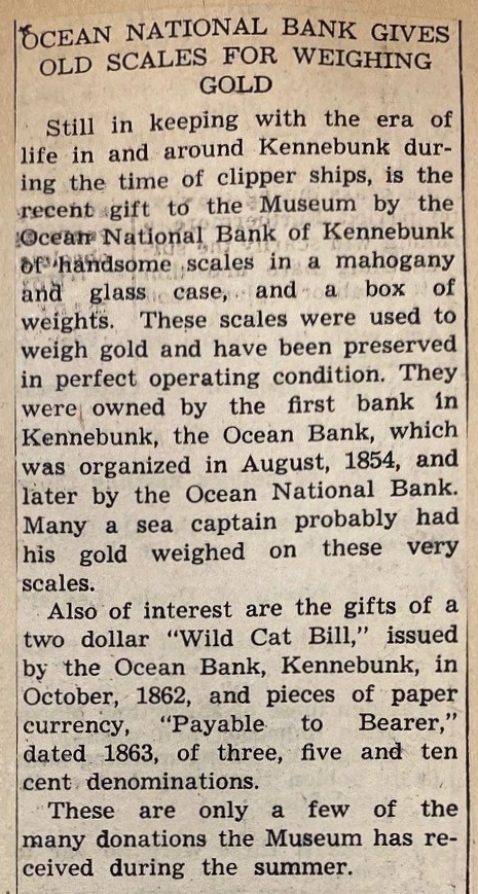
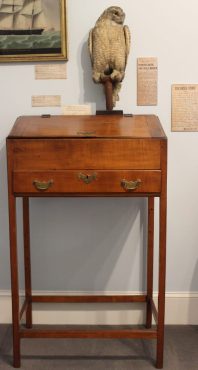
Slant top desk c.1800 Cherry with white pine Belonged to Nathaniel Lord Thompson, ShipbuilderGift of Miss Edith Barry in 1942

Arctic Owl Gifted to the museum in 1943

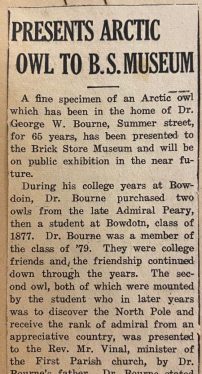
Swiss BoyHalf-hull c.1837 Pine and mahoganyKennebunk Landing in 1837Owned by William LordEstate of Edith C. Barry

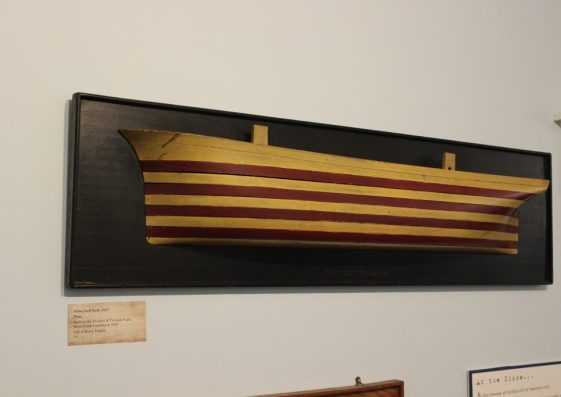
ArnoHalf-hull 1857 PineBuilt at the Perkins & Titcomb YardKennebunk Landing in 1857Gift of Barry Family
Chart Case Early to mid 19th centuryWood (pine) and ironDonated by L.K. Marshall, Arundel, ME.
Telescope Mid 19th centuryBrass and wood
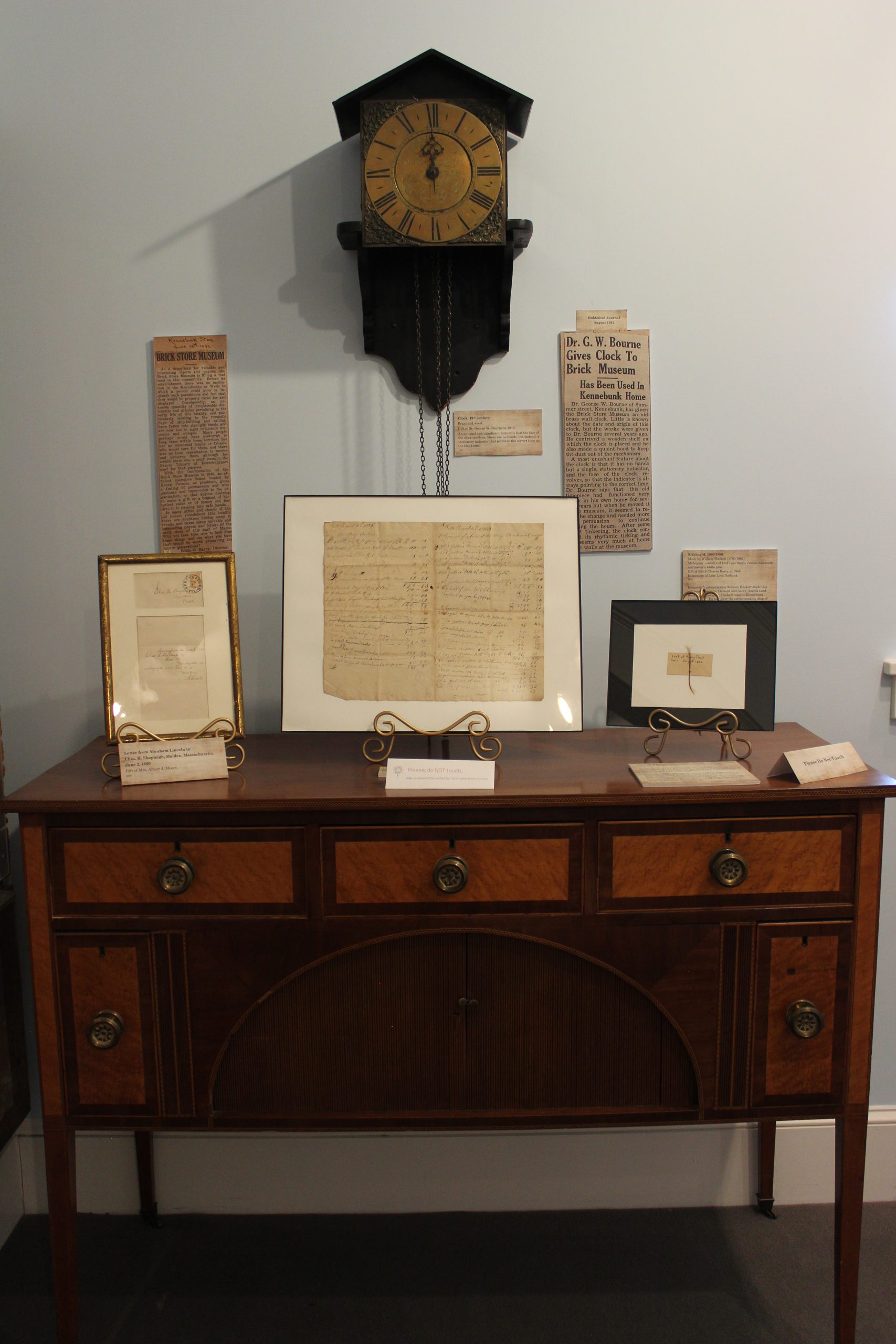
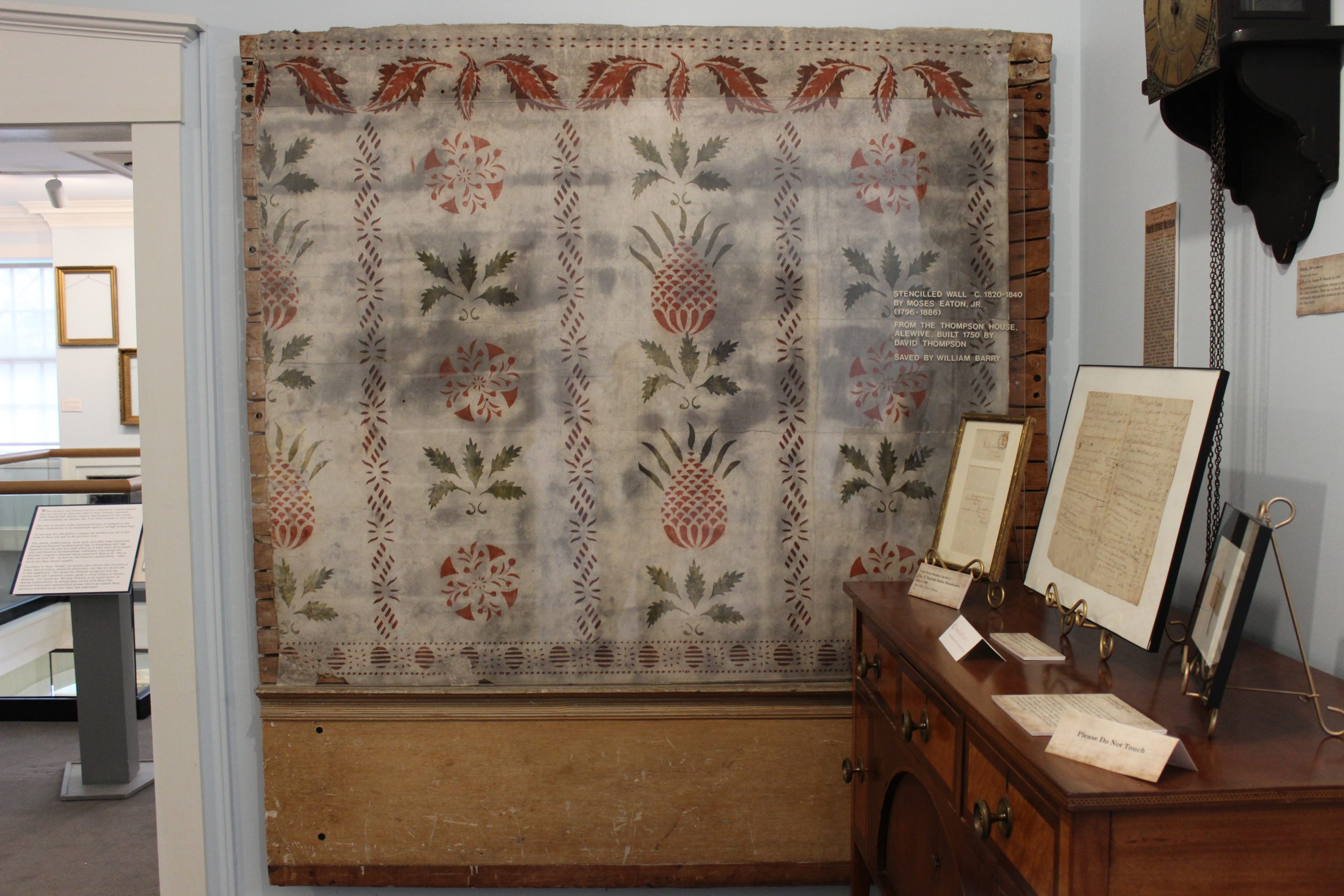
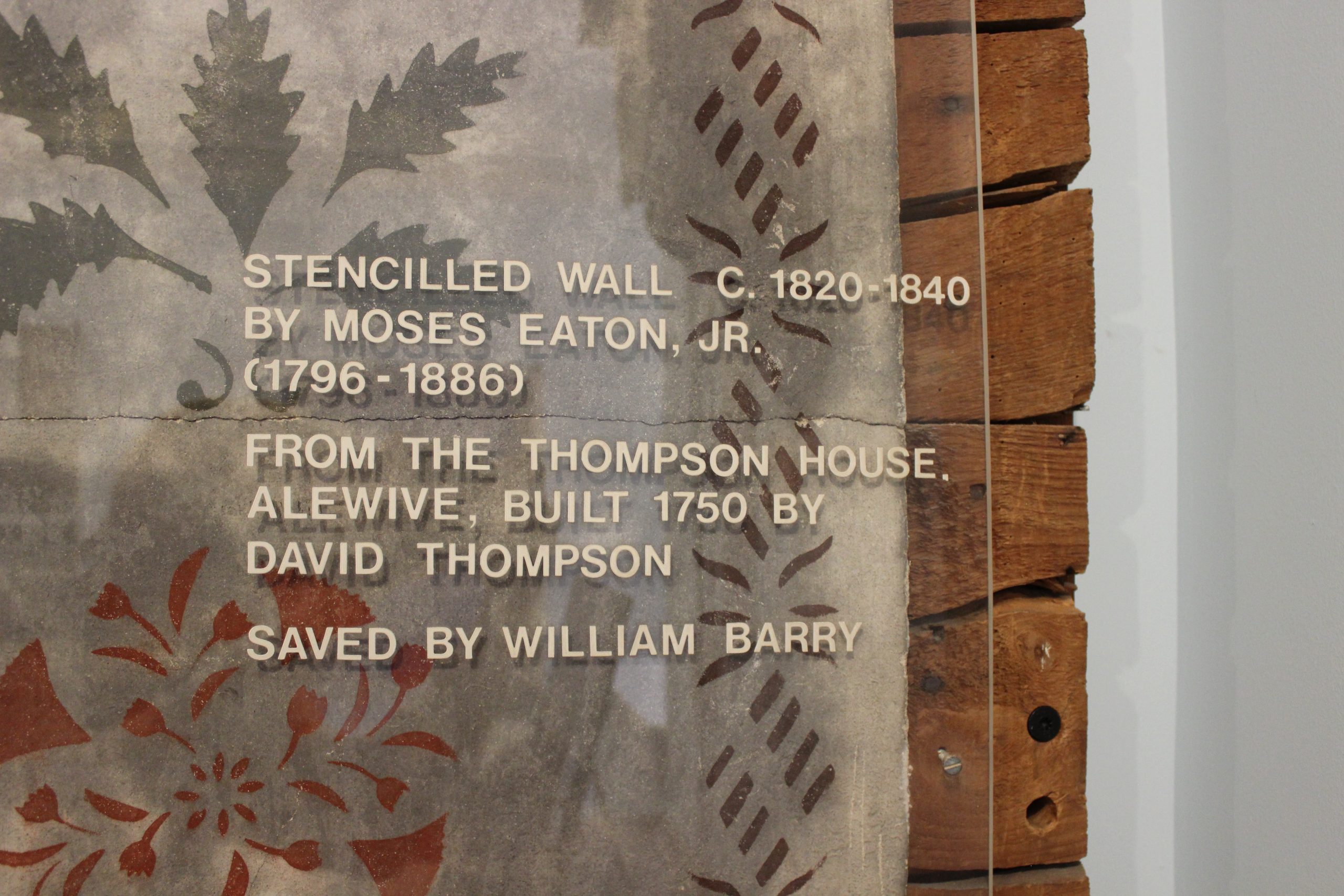

"Ethnohistorians poorly understand the region between the Kennebec and Piscataqua Rivers in southern Maine. The slim and often confusing historical record has limited scholarly efforts to understand groups and territories in southern Maine...Even the authors of the 'Handbook of North American Indians' are uncertain who occupied this range, depicting part of it as a no-man's-land surrounded by the Eastern Abenaki, Western Abenaki, and the Pawtucket." - Emerson Baker, "Finding the Almouchiquois," 2004
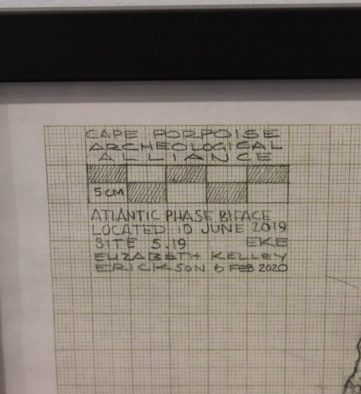
Cores and Flakes Making chipped stone tools by hitting one rock with another in a controlled manner is called flintknapping. The production process begins with a piece of raw material, called a core. Flakes are removed by striking the edge of the core with a sharp, forceful blow. A hammerstone is used for the early stages of work, an antler for the later stages of shaping the final tool. Points and knives are common kinds of bifaces, which means that the rock has been worked on both sides into a tool. Flakes are the waste products of making a stone tool. Flakes have very sharp edges and were often used as cutting tools.
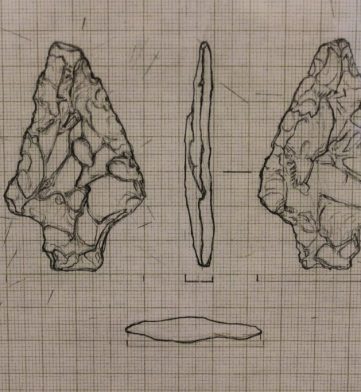

The Remains of an Ancient Dugout Canoe The dugout canoe is the oldest ever discovered in Maine. The canoe was found in 2018 during a surface survey of the intertidal zone near the islands of Cape Porpoise. The remains of the canoe had been exposed by shifting sands during low tide.

Plans were made to excavate the canoe the following summer for analysis and conservation. Work began with the building of a custom crate that would not only serve as transport for the canoe but also house it while it was being examined and conserved.
The excavation took place about two hours before low tide (in roughly a half meter of water); archaeologists in wetsuits gently removed the sand from around the partially exposed canoe by hand and trowel, using the remnants of the ongoing tide to wash away the sand being removed.
It became evident that the cone was extremely delicate and in danger of breaking apart. To compensate for the total loss of structural support, Styrofoam tubes, commonly known as “pool noodles,” were strapped to the outer and inner walls of the canoe so it could be transported safely.

During field excavations, archaeologists rarely find intact artifacts. More often, they find fragments, and they must study the relationship between artifacts and reconstruct the history based on patterns. This worked piece of wood was found next to the remains of the canoe, and because of it’s location and radiocarbon date, it is believed to be the paddle for the canoe. Both the canoe and the paddle (made of balsam fir) resulted in similar test results: an average of approximately 640 BP (Before Present).
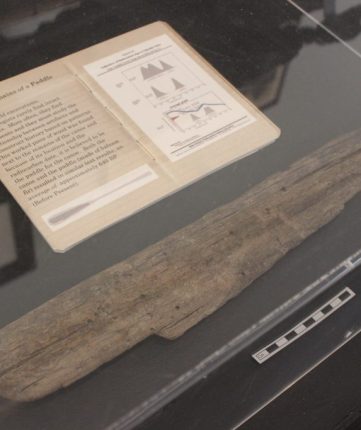
The indigenous people of the Northeast built fish weirs to capture schooling fish such as alewife and mackerel. A fish weir or fish trap was often built of stone, reeds, or wooden posts placed within the channel of a stream or at the edge of a tidal mudflat intended to capture fish as they swim along with the current. Fish become trapped within the wooden mesh as each tide receded. In the spring, when many fish, including alewives, shad, and salmon, headed upstream to spawn, the indigenous people would fish the rocky waterfalls where they could easily be netted or speared.
These drawings below, titled Building the Weir and The Weir at Low Tide, depict the intertidal landscape of Cape Porpoise during the Pre contact period. The Weir at Low Tide also illustrated the relationship between the weir site and where the dugout canoe was located.
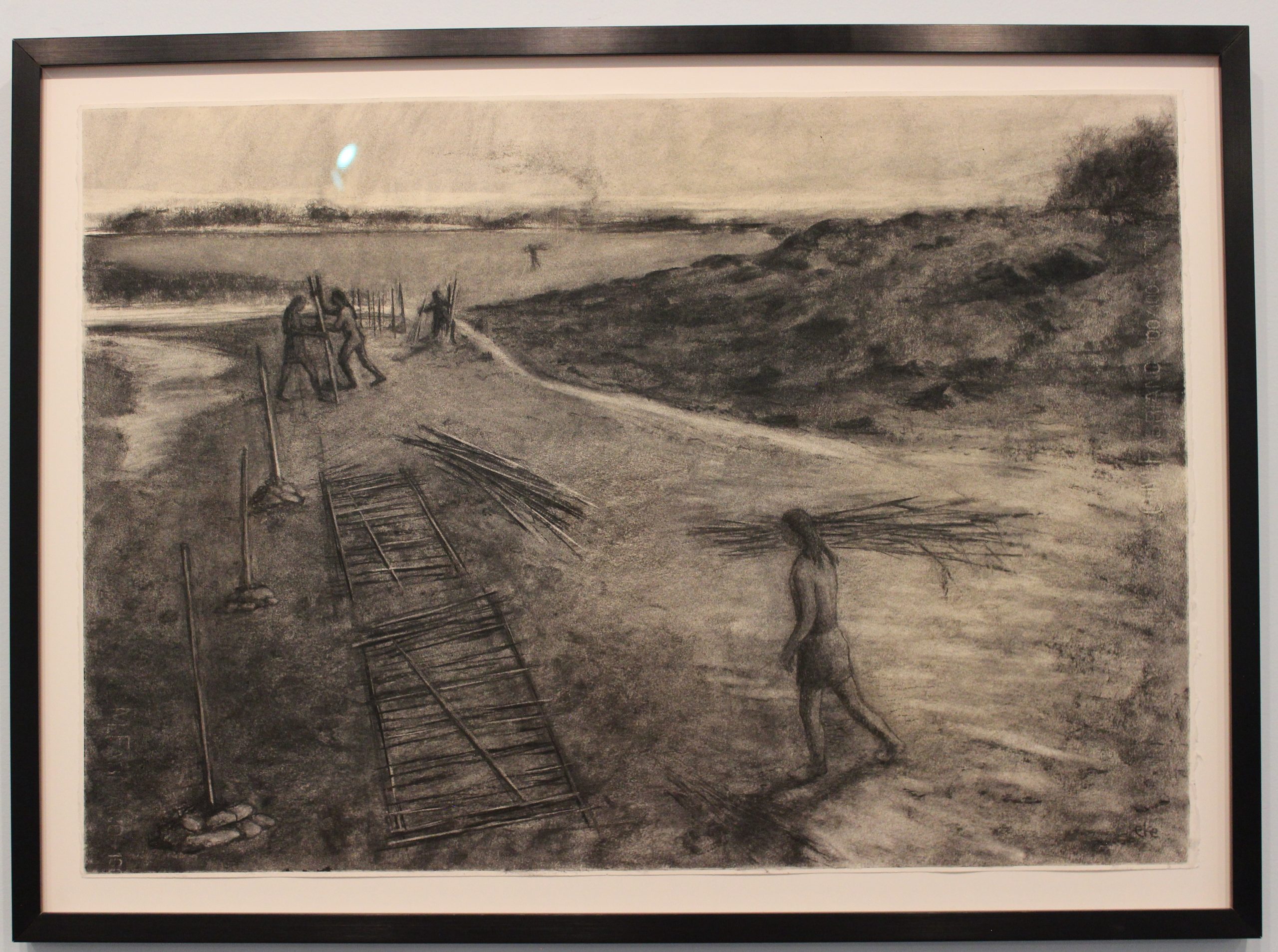
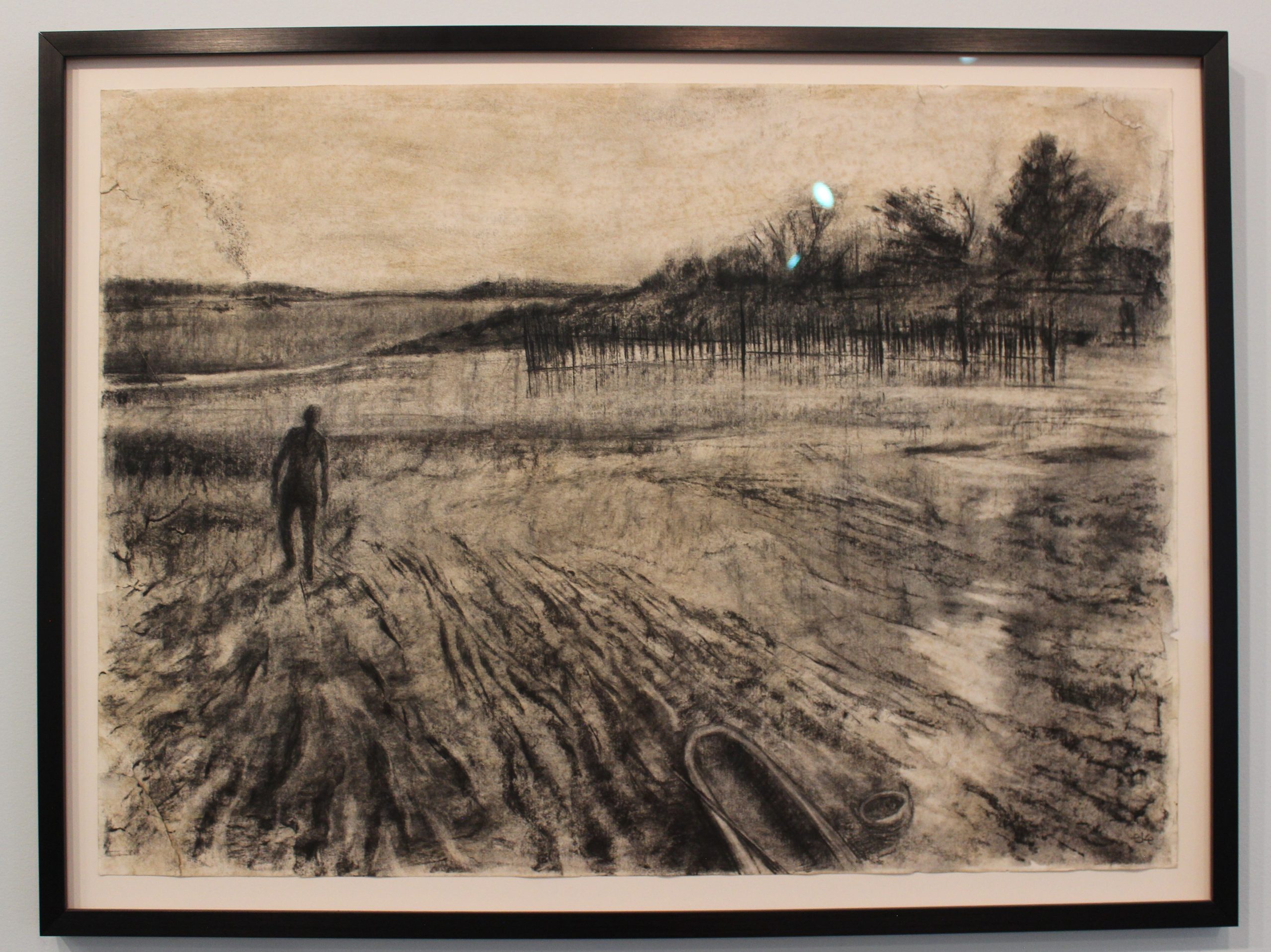
Ground Stone Tools This is a collection of ground stone tools found during the archeological surveys. Ground stone tools are artifacts made from a broader range of commonly tougher, grainier rock types. Most ground stone tools were made by varying combinations of pecking, grinding, curring, drilling, and polishing. Typical ground stone tools are aces, adzes, hammerstones, fishing net weights or mortars and pestles.

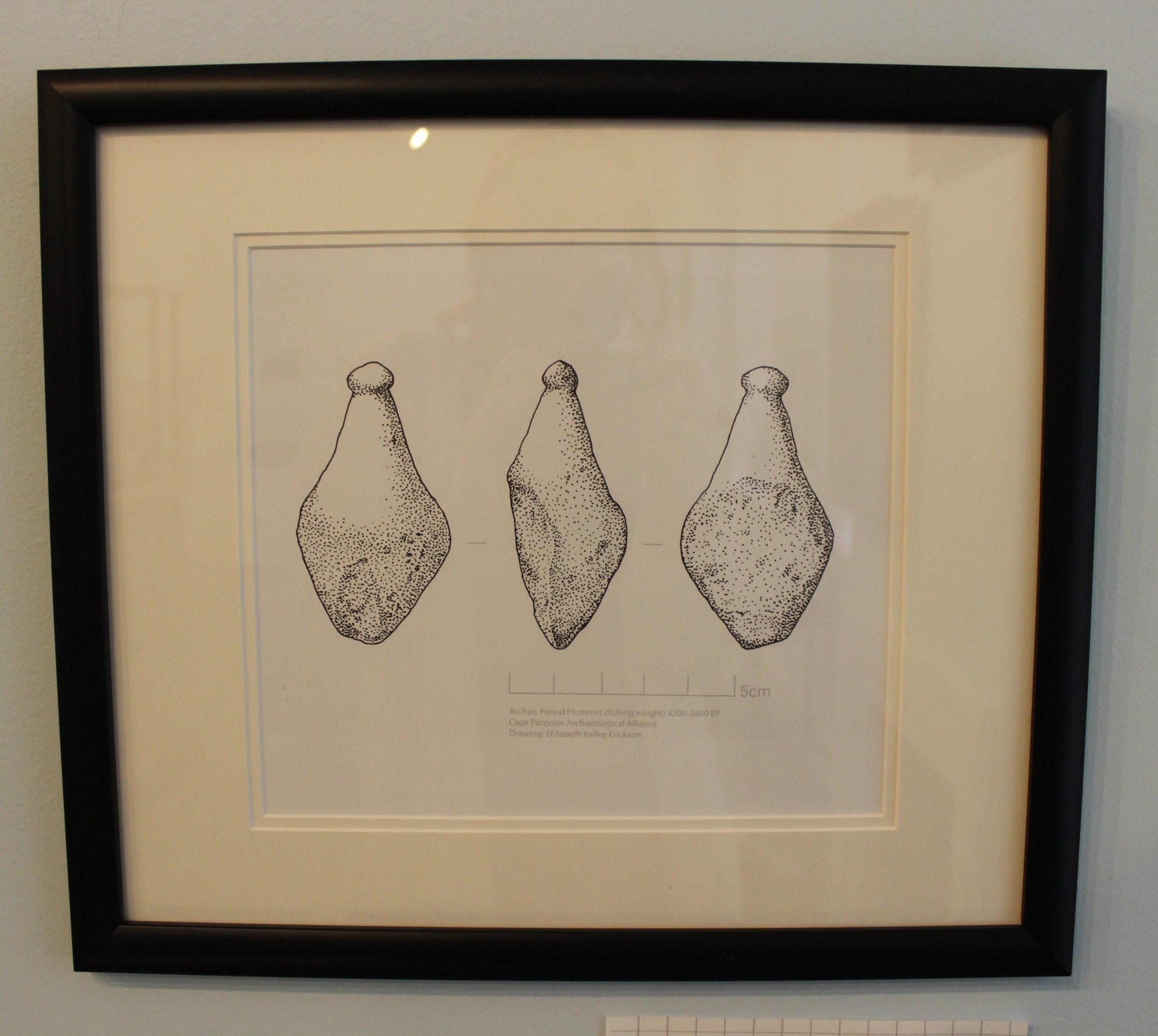
Between c. 1790 and approximately 1830, a small community of four, if not more, households of freed enslaved black families existed in southern Kennebunk, about a mile away from the main Village. Local historians first noted its existence based on oral histories and historic maps denoting its existence. Though the site has been known to the museum and local scholars for many years, little research has been conducted there, until recently. The Ridge Community was originally located in the section of Wells known as Kennebunk. When the Town of Kennebunk was incorporated in 1820, the southern town line was established in Branch brook, placing it within the new town.
Empty Frames
These two empty frames represent those people that never had their portraits painted or their images captured in photographs. In Colonial America, hiring an artist to paint a portrait was a costly luxury only afforded by wealthy inhabitants.
The advent of photography helped reach a growing middle class and those in marginalized communities, but it was still very limited. This leaves historians and archaeologists with a lack of imagery representing the majority of people. Their stories must be told through the material culture left behind, as seen on exhibit in this gallery
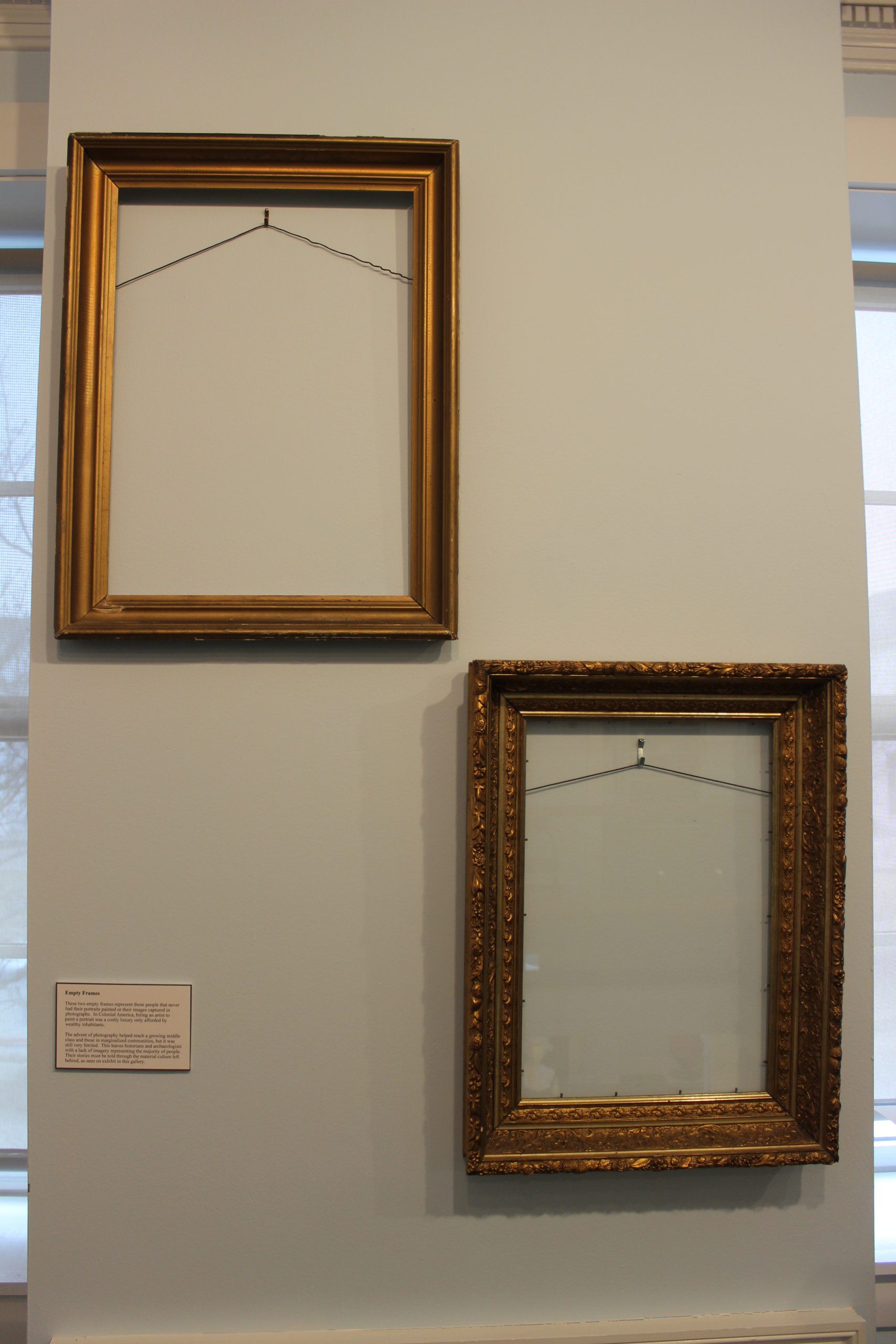
Musket Ball, c.1785-1830



These well-made flints and a musket ball demonstrate the use of flintlock firearms by members of the Ridge Community. Flints were also used as strike-a-lights for starting fires with a piece of iron. The presence of cortex on some suggests these flints were worked from ballast flint collected in local waterfront contexts where ships loaded and unloaded cargo.
Mirror, c.1750-1800 England Silvered glass and wood On loan from Leith Smith Fragments of high-quality colorless flat glass were found at the Structure 2 site. Such place glass likely would have been silvered on one side to create a mirror. This glass differs from more common window glass, which is of lower quality and typically has a greenish tint.

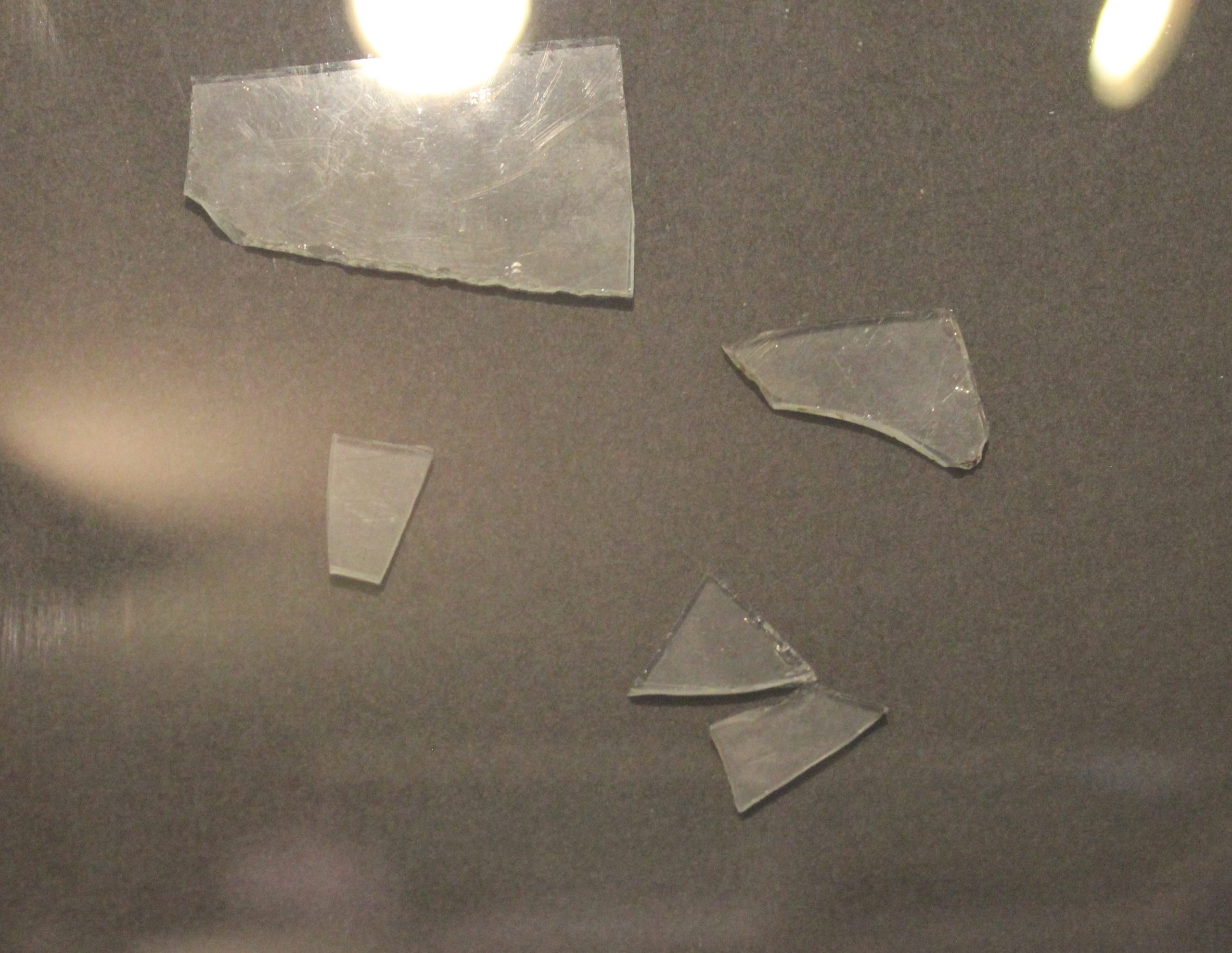
Durable metal cookware was a necessity in most households. Fragments of a small and a large cast-iron pot, body fragments, and a leg found at the Structure 2 site, can be seen below. Such pots served multiple functions ranging from cooking to clothes washing. A tin oven, represented by a portion of the split handle found at the Structure 2 site, would have been used primarily for roasting meat or poultry on the hearth close to the fire.

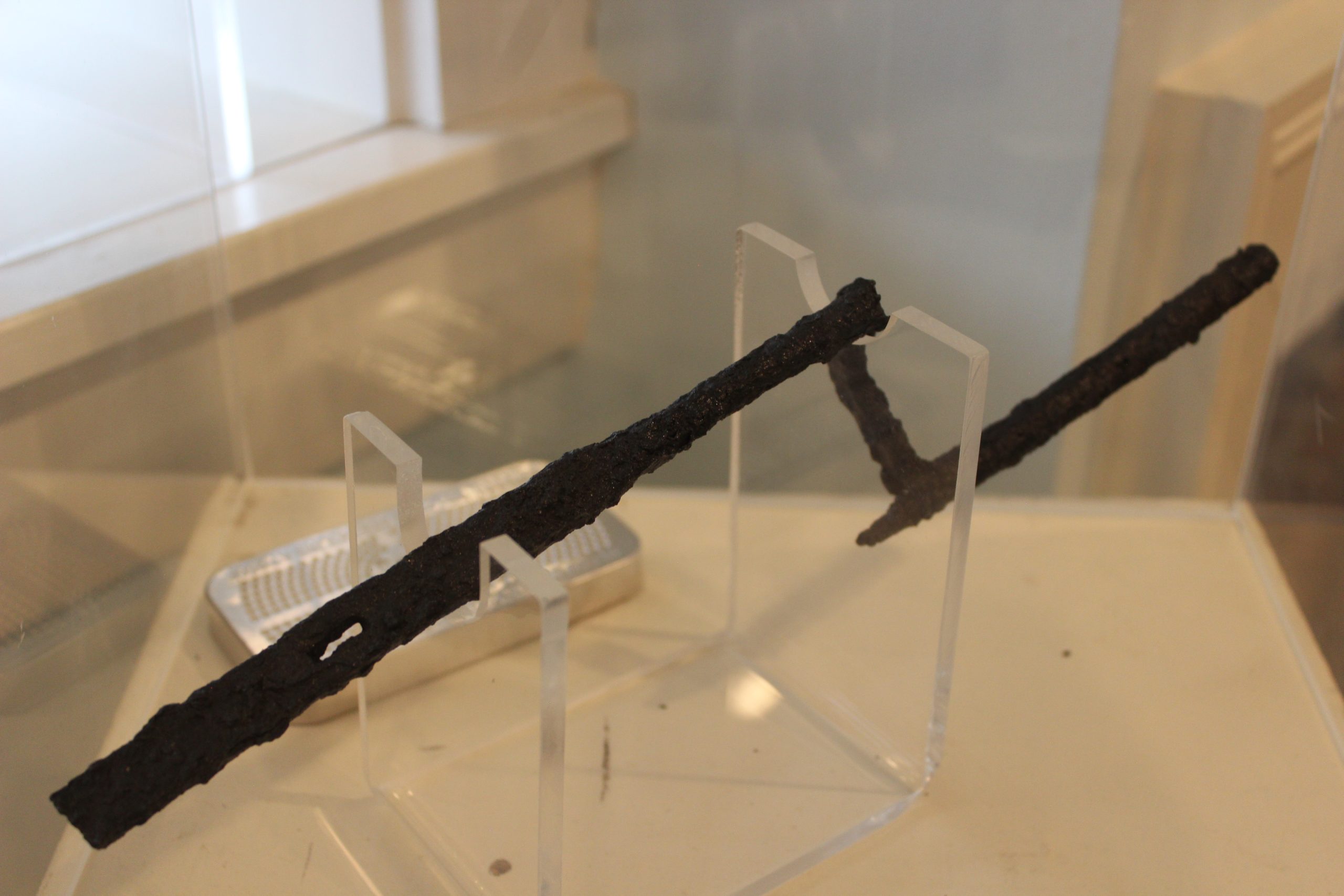

Platter, c.1775-1820
England
Creamware with molded royal pattern rim
Brick Store Museum Collection

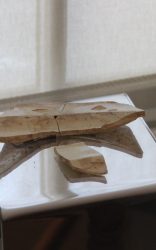

Broom (Modern replica)
This broom represents one of the skills believed to be held by the people that lived at Structure 2

Pieces of eight creamware plates with plain and royal pattern rims were found at the Structure 2 site alone, with pieces of eight bowls/saucers and three tea bowls or saucers. Creamware was very popular in the 1770s

The site of Kennebunk's historic Formerly Enslaved People's Community (c. 1785-1830) is a significant archaeological resource because it is one of the very few known to exist in Maine. What makes it particularly unique is its early time period, which immediately followed emancipation. The narrative that can be told from an archaeological investigation is of extreme importance not only for the combined history of Wells and Kennebunk, but for the history of African American presence in the state as a whole. The fact that the site appeared to be in a pristine state of preservation and was never reoccupied or disturbed is almost unheard-of. Adding to their significance is the fact that these sites retain their sense of place because the surrounding landscape has remained essentially unchanged since the sites were abandoned in the early 19th century. For Kennebunk's Bicentennial celebration in 2020, the town's Bicentennial Committee, per suggestion by Town Historian Kathy Ostrander Roberts, funded Phase I and Phase II archaeological investigations of the area of the Formerly Enslaved People's Community, referred to as the "Ridge Community" within this exhibit, beginning in 2018.
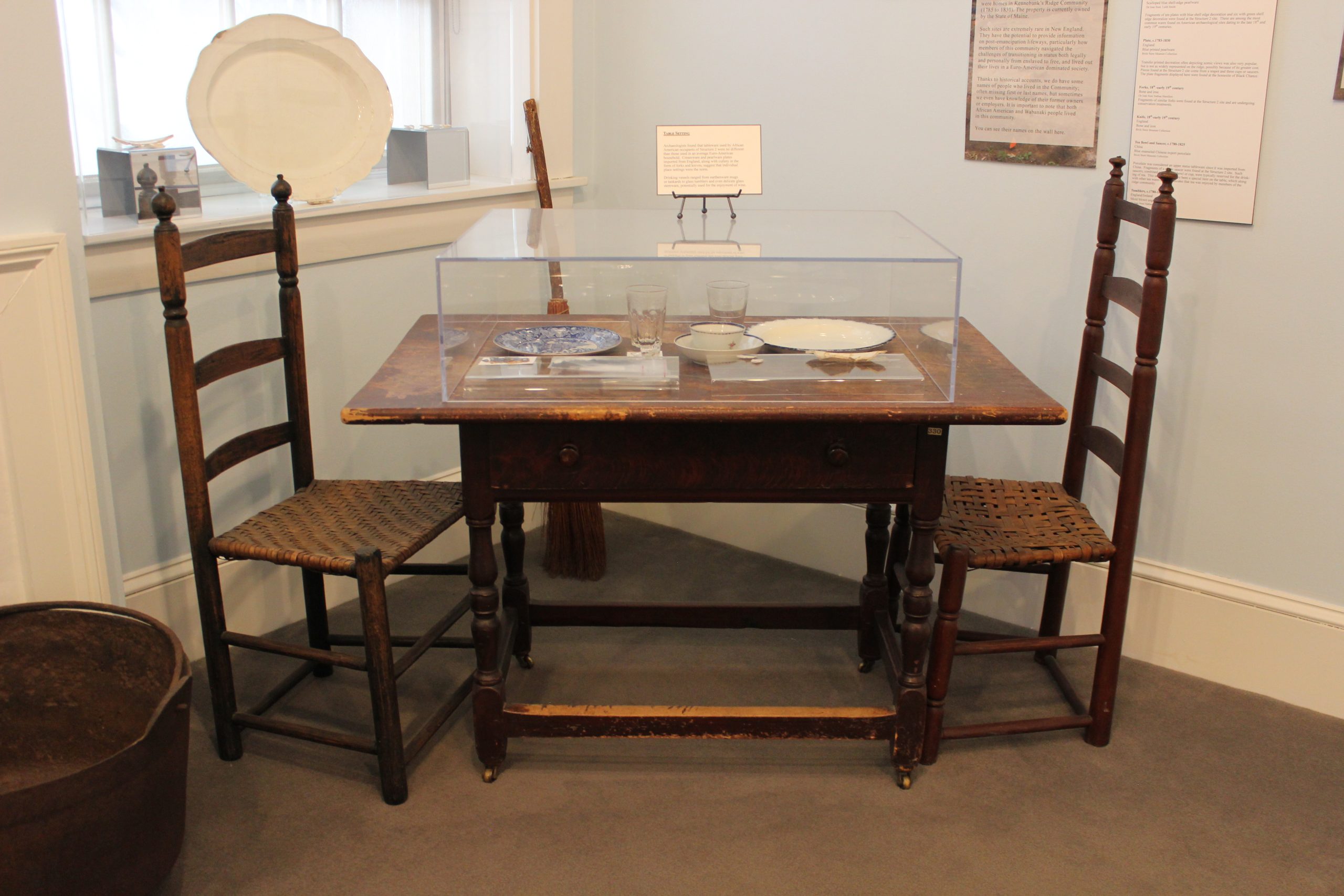
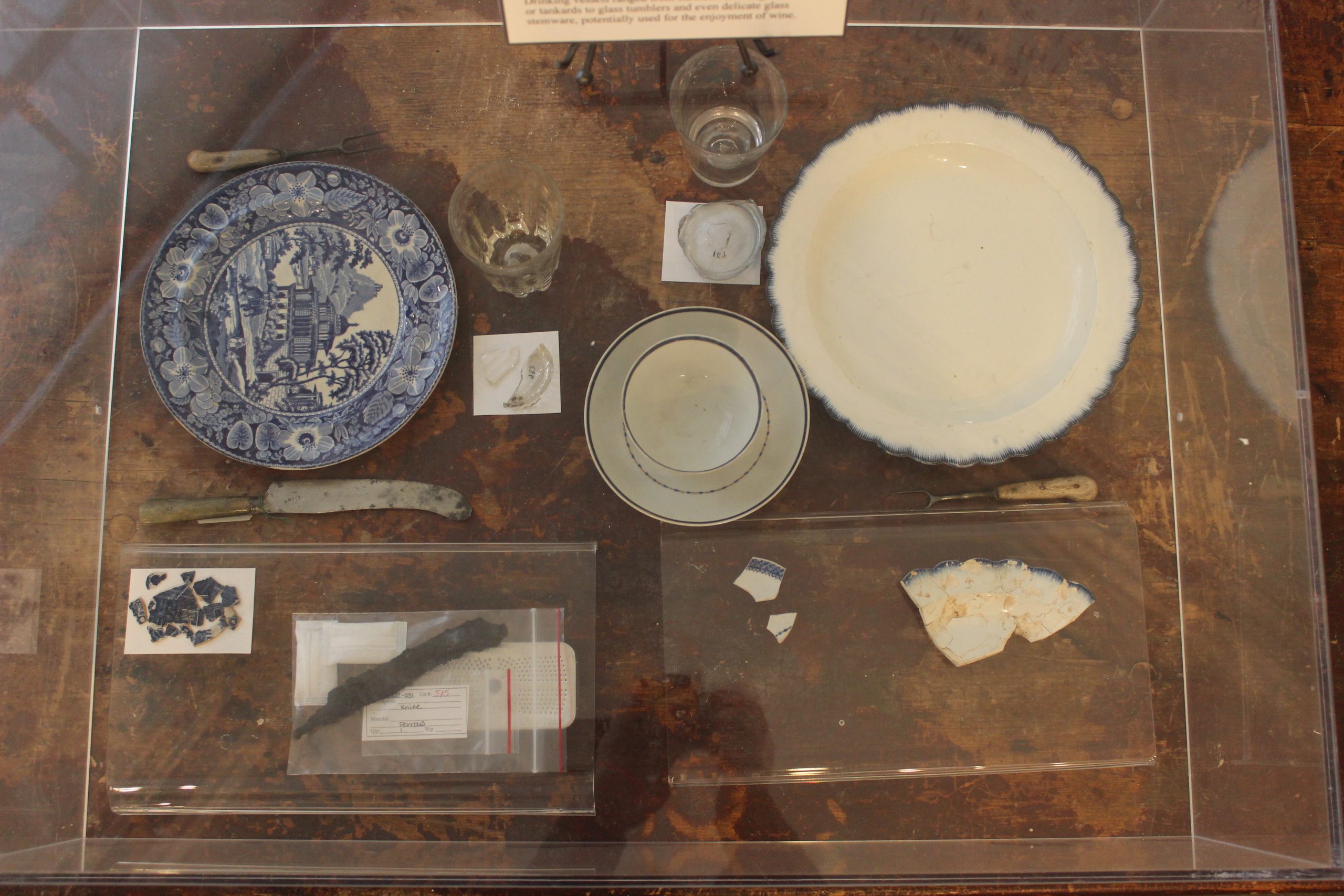
Archaeologists found that the tableware used by African American occupants of Structure 2 were no different than those used in an average Euro-American household. Creamware and pearlware plates imported from England, along with cutlery in the form of forks and knives, suggest that individual place settings were the norm. Drinking vessels ranged from earthenware mugs or tankards to glass tumblers and even delicate glass stemware, potentially used for the enjoyment of wine.
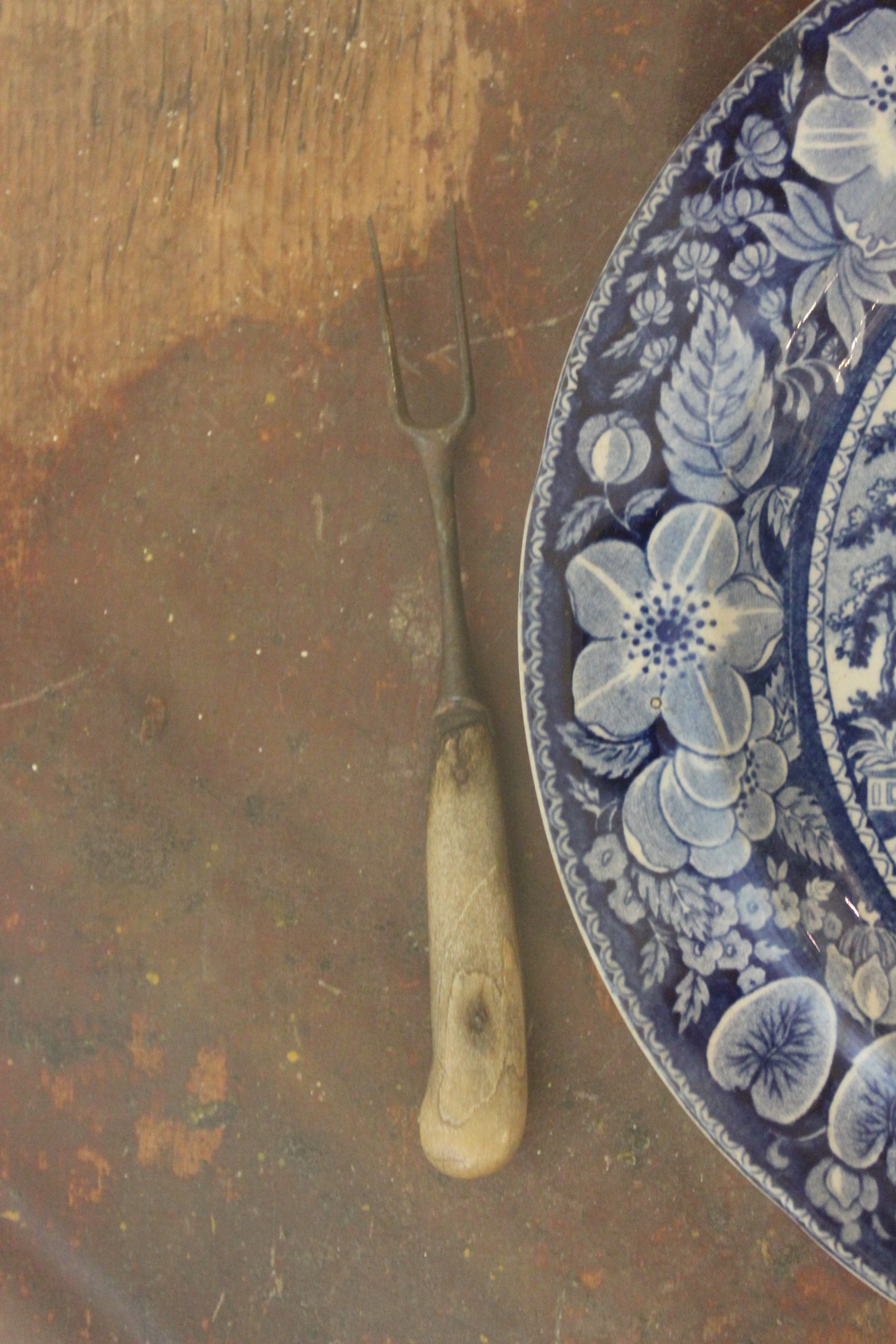
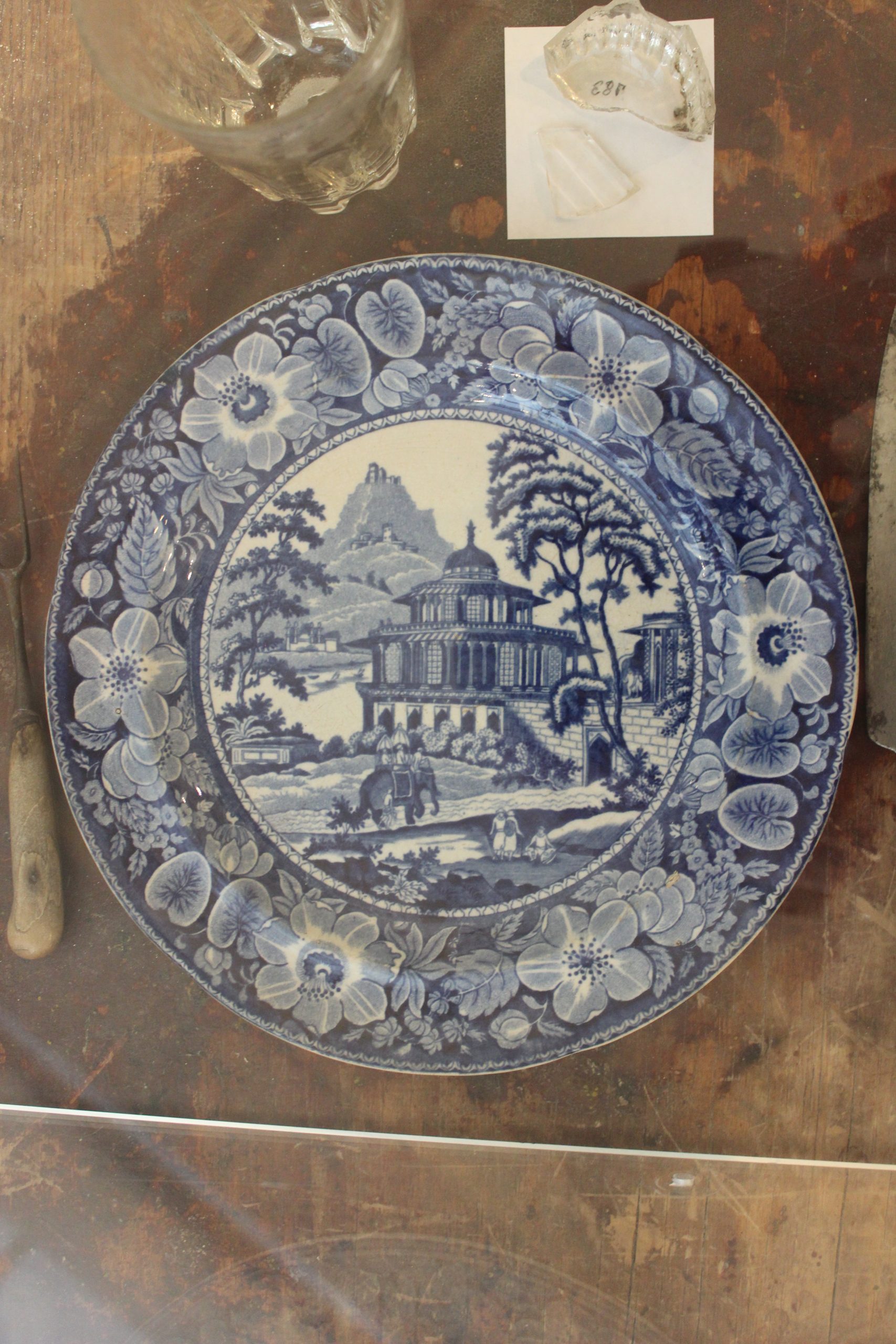
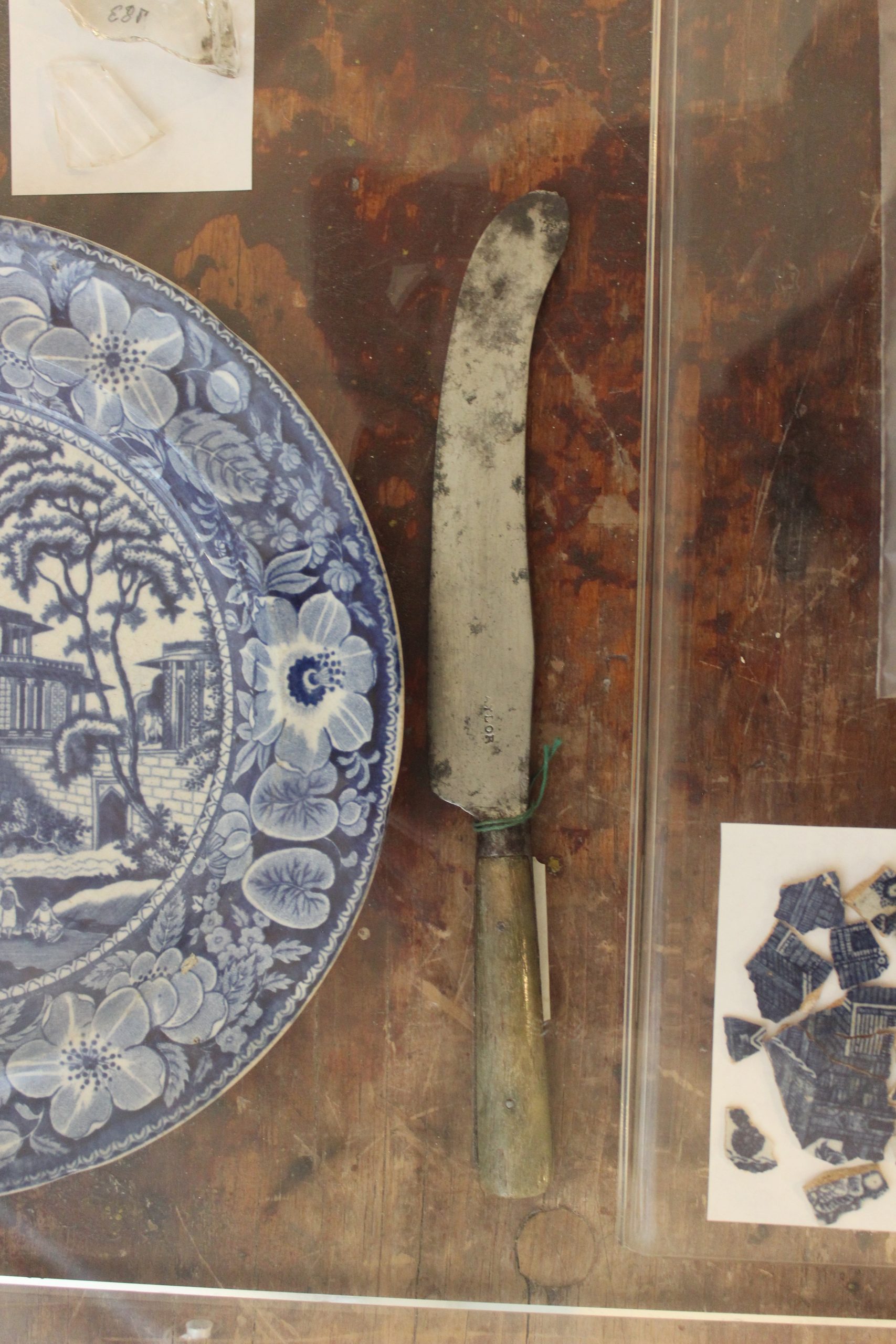


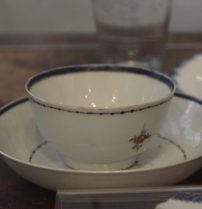
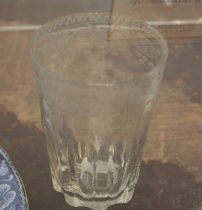
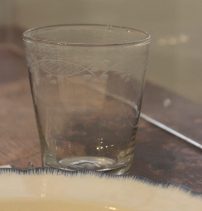
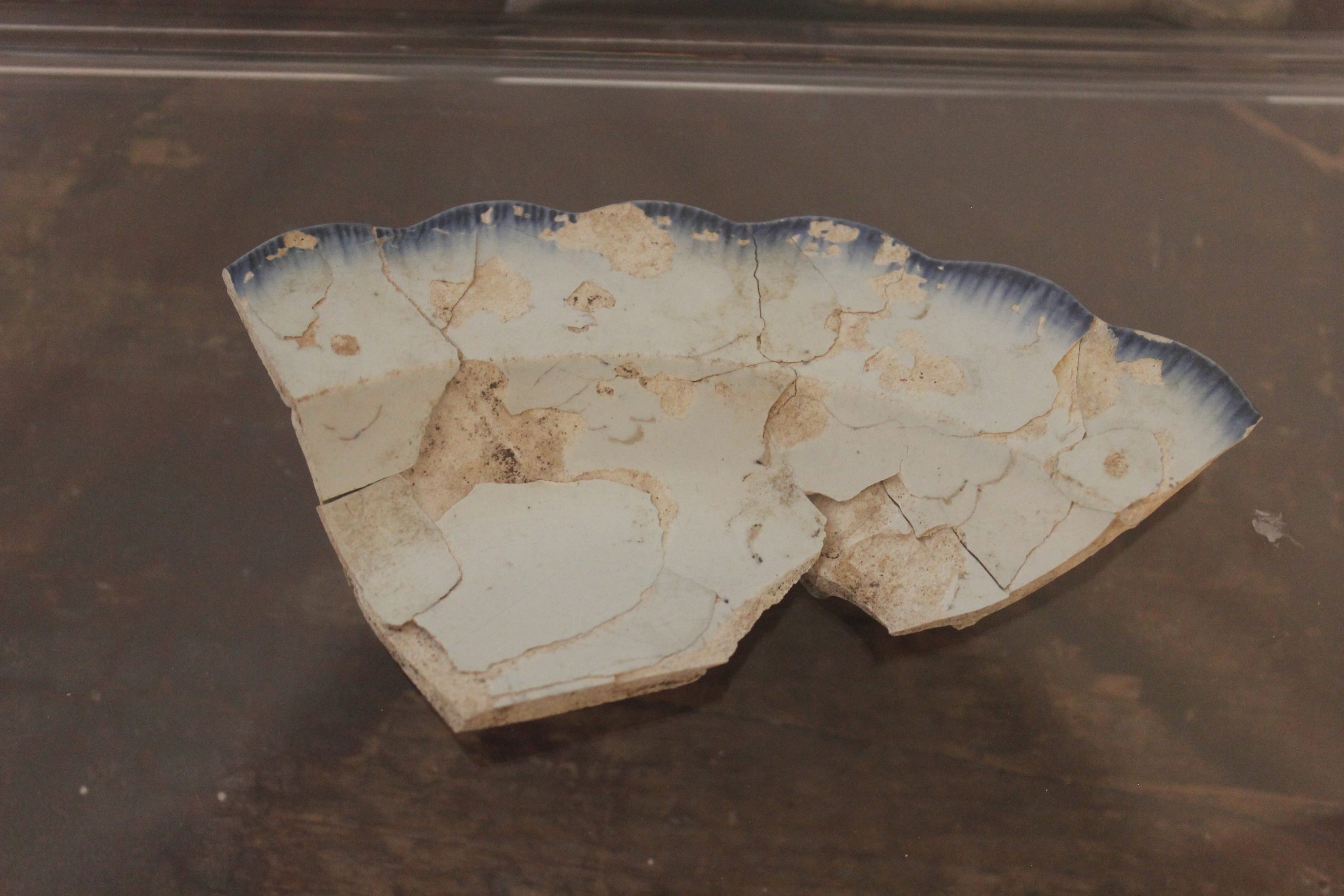
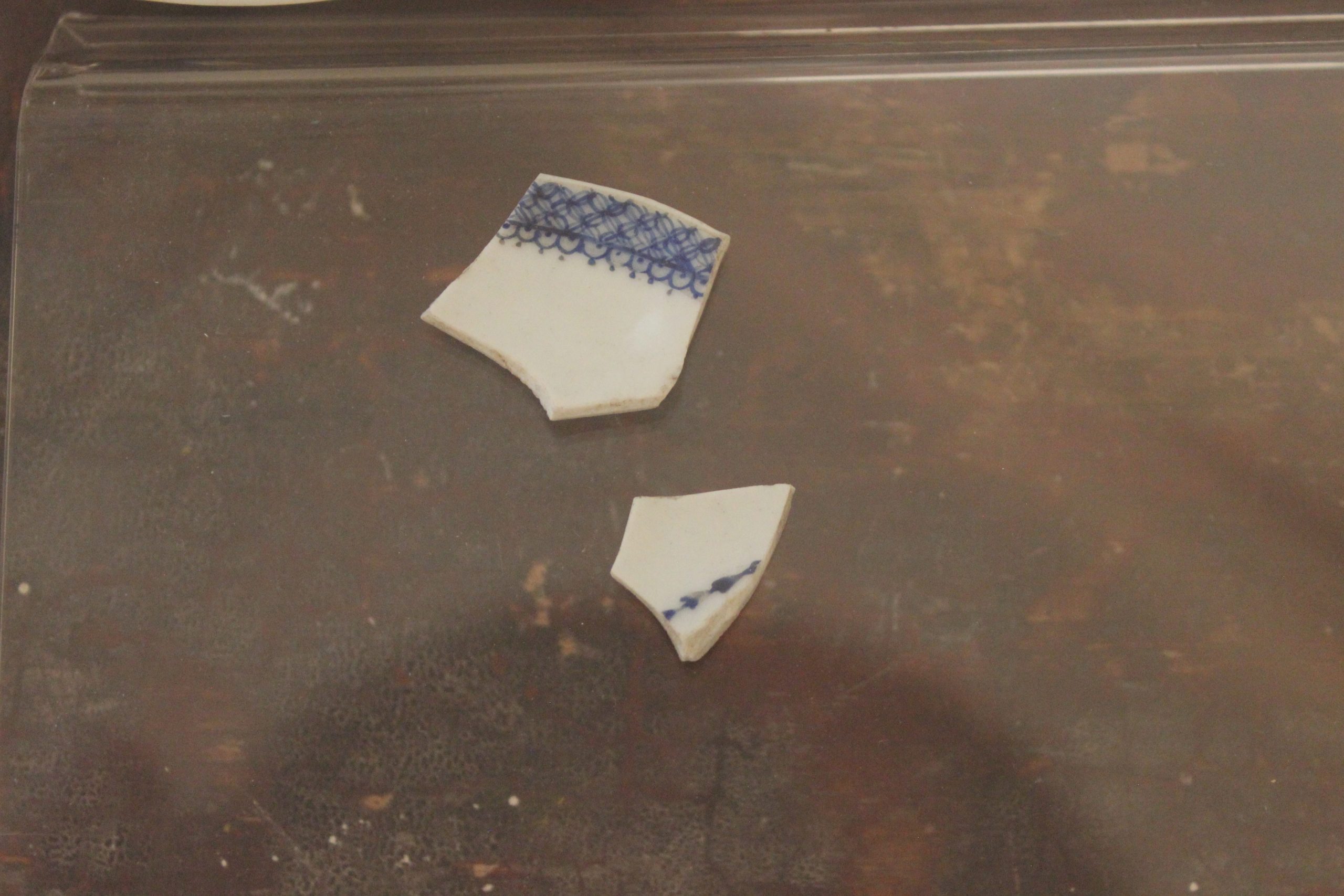


"For almost a century slavery maintained in its position in Wells an element of social life. Human beings were regarded as chattels; used and sold in the market as freely as cattle. It will be seen also that slavery was not the status of the black man only. The Indian was also doomed to a like condition. The old Weare house in York was at one period a slave factory. But our slaves were generally purchased in Wells." -Edward Emerson Bourne "The History of Wells and Kennebunk," 1875 Names below featuring an asterisk designation indicate that more than one person had that name.
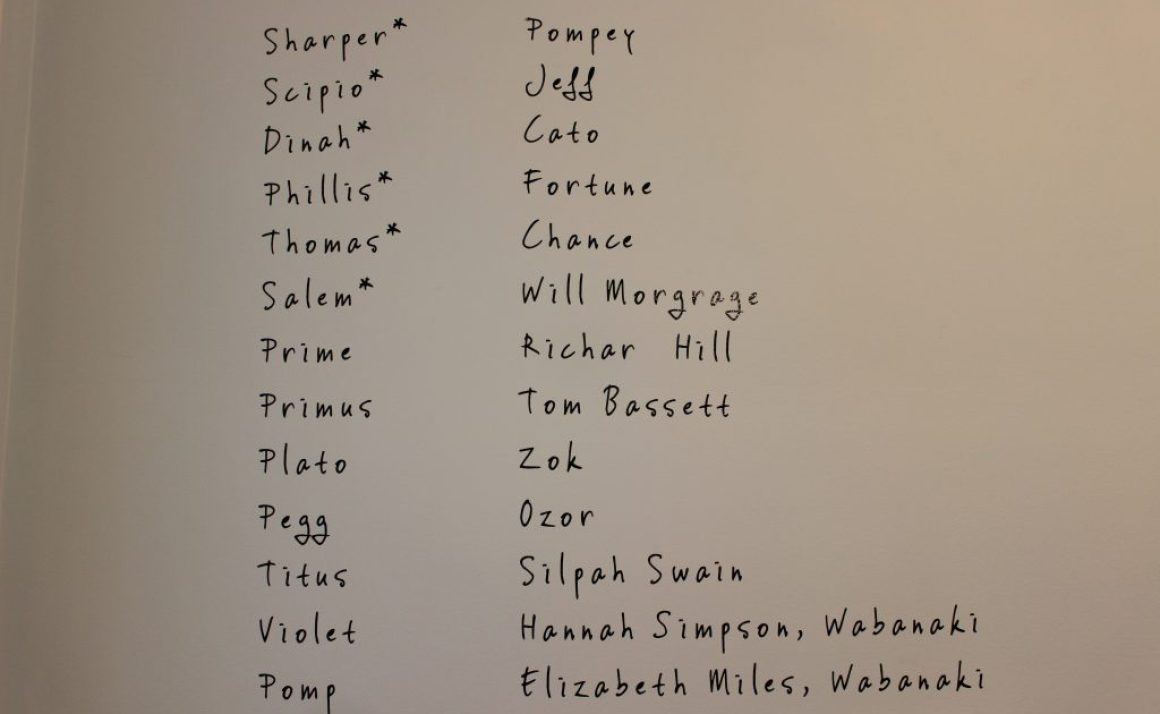

Bowl, c.1775-1830EnglandPearlware with underglaze blue painted decorationOn loan from Nathan Hamilton A total of 41 pearlware vessels were identified at the Structure 2 site. Pearlware was introduced in 1775 and quickly became more desirable over creamware. Pearlware is known for its blue and polychrome (many colors) painted decoration and a wide variety of vessel forms. Many of the blue-painted examples depict popular scenes painted on more expensive Chinese export porcelain.
Milk Pan, 18th-mid 19th CenturyAmericanLead glazed redwareOn loan from Nathan Hamilton Redware pans, baking dishes, bowls, bowls, jars, and jugs functioned for food preparation, cooking and storage.
